

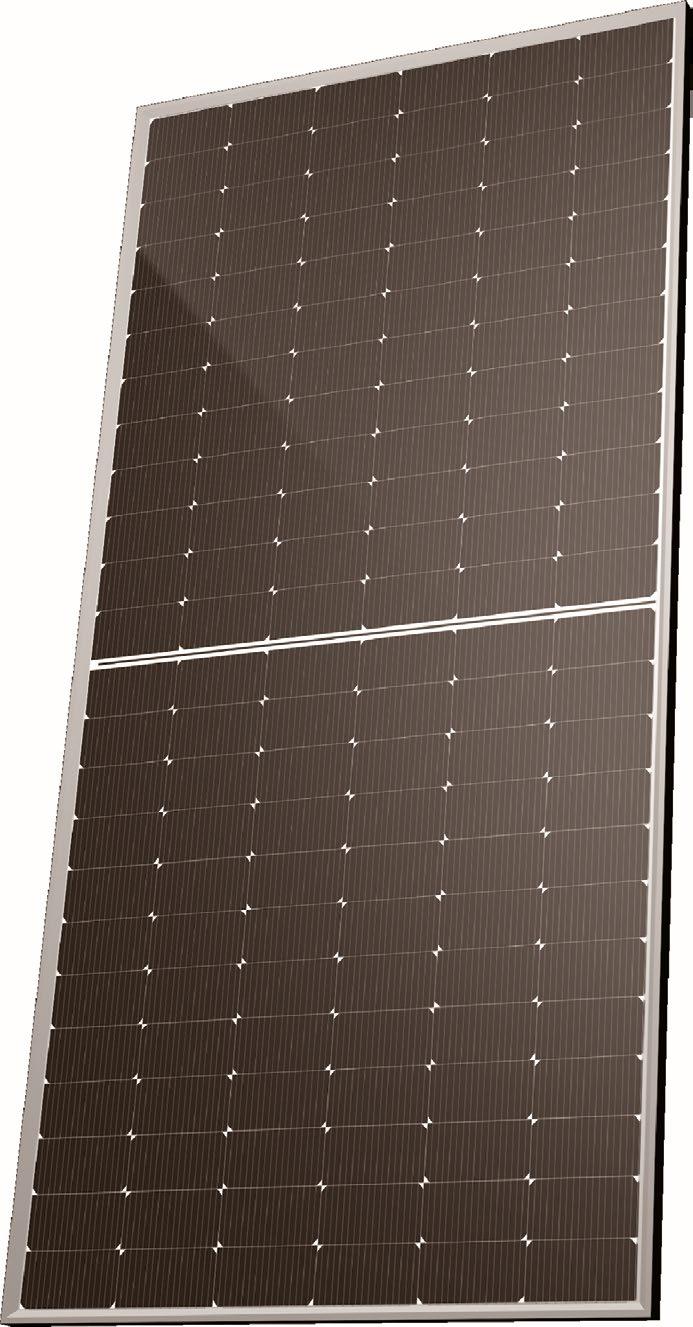

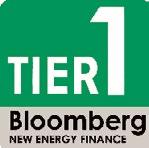

MAX THE SOLAR POWER GENERATION
10 MPPTs fusefree design
Smart I/V scan and diagnosis
Active safety with AFCI protection
Max. string current up to 22.5A Compatible with 600W+ high power modules
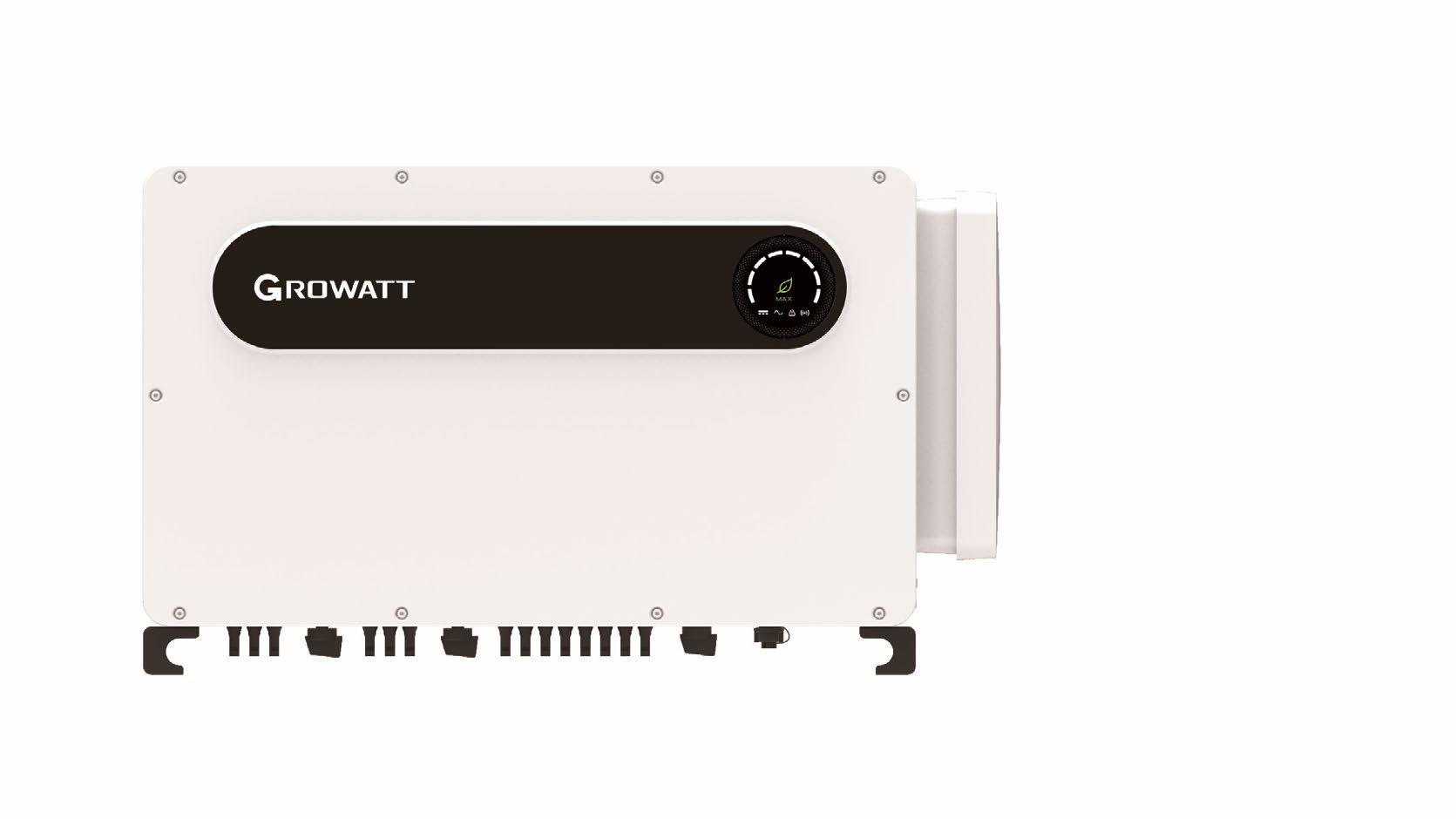
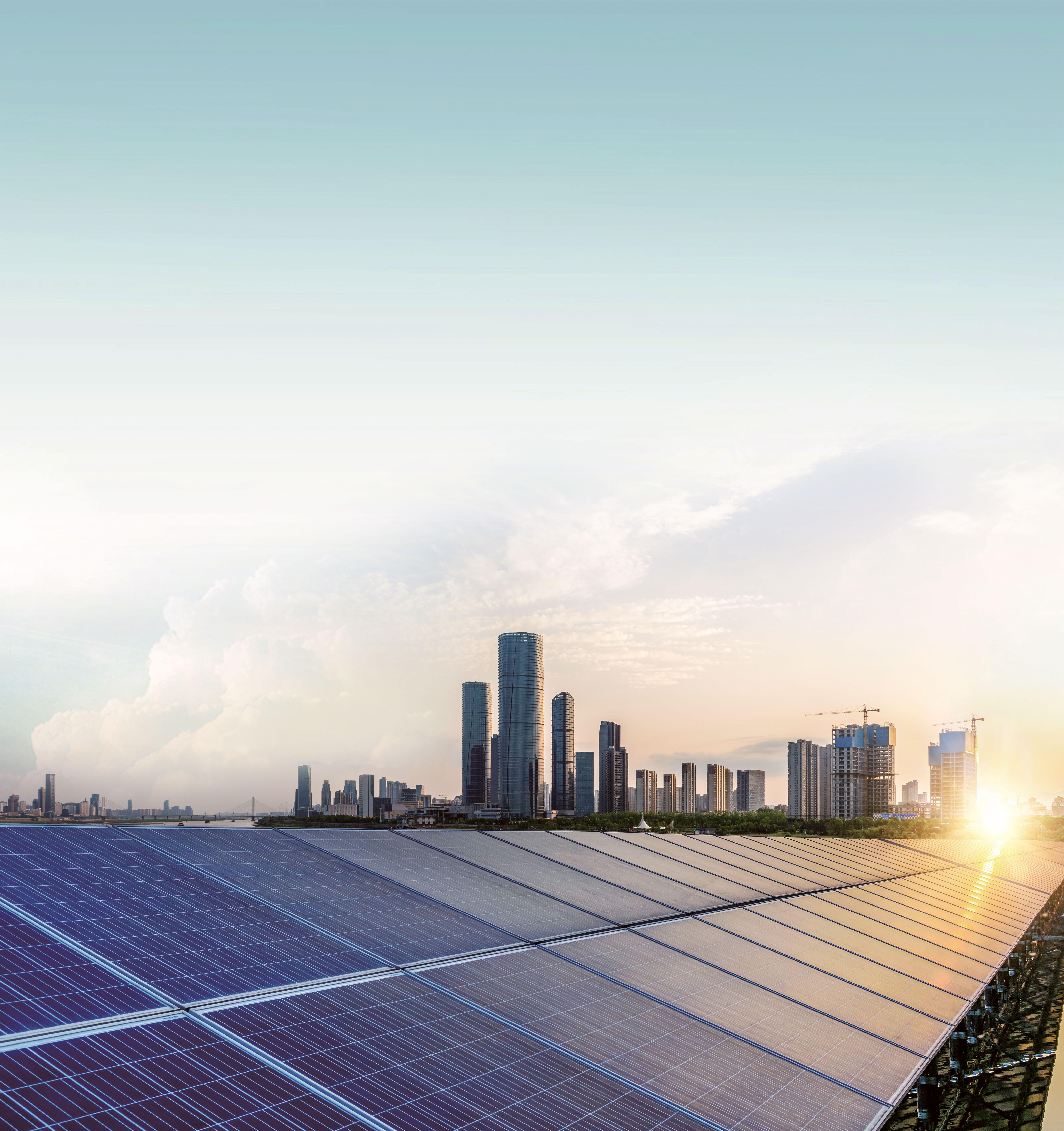
M P P T


1800 120 600 600 Sh e n z h e n G r o watt N e w En e r gy C o ., Ltd. w w w g i n v e rt e r c o m info@ginverter.com








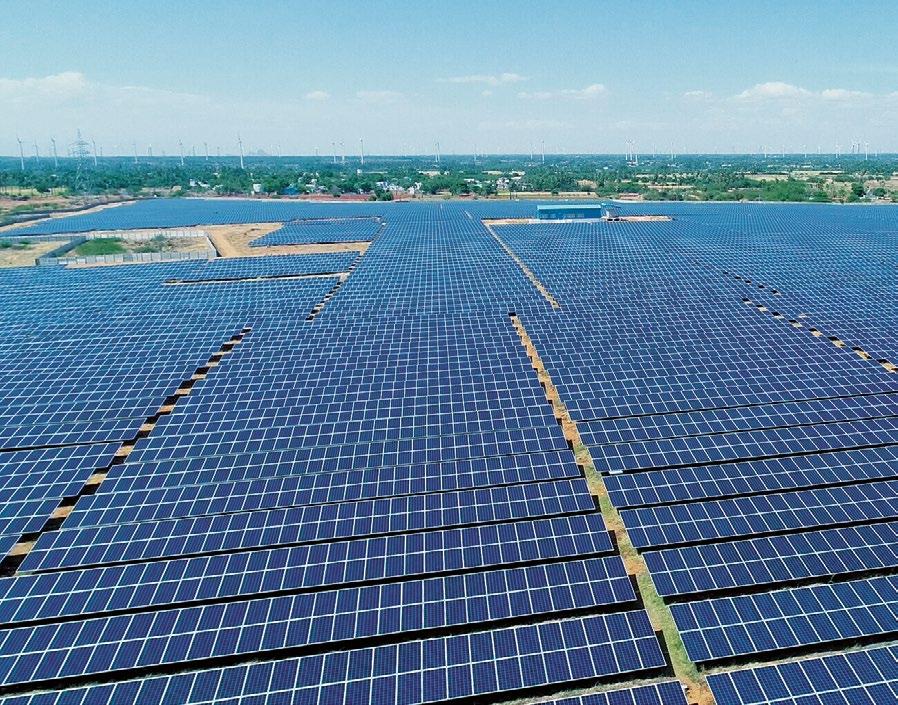
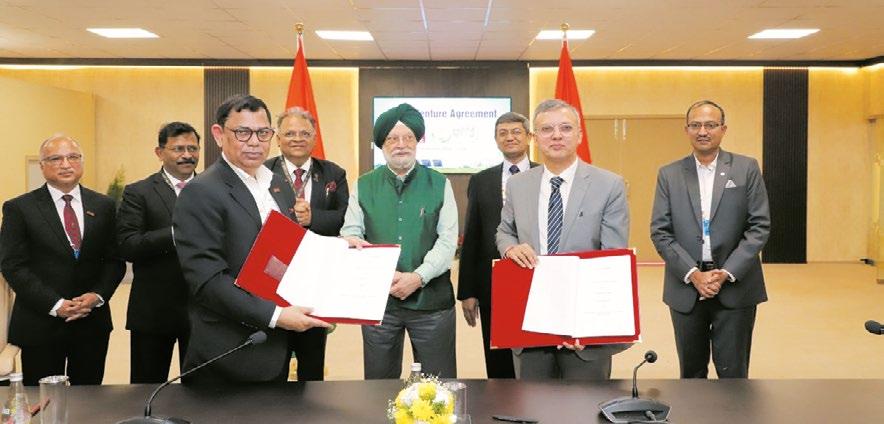

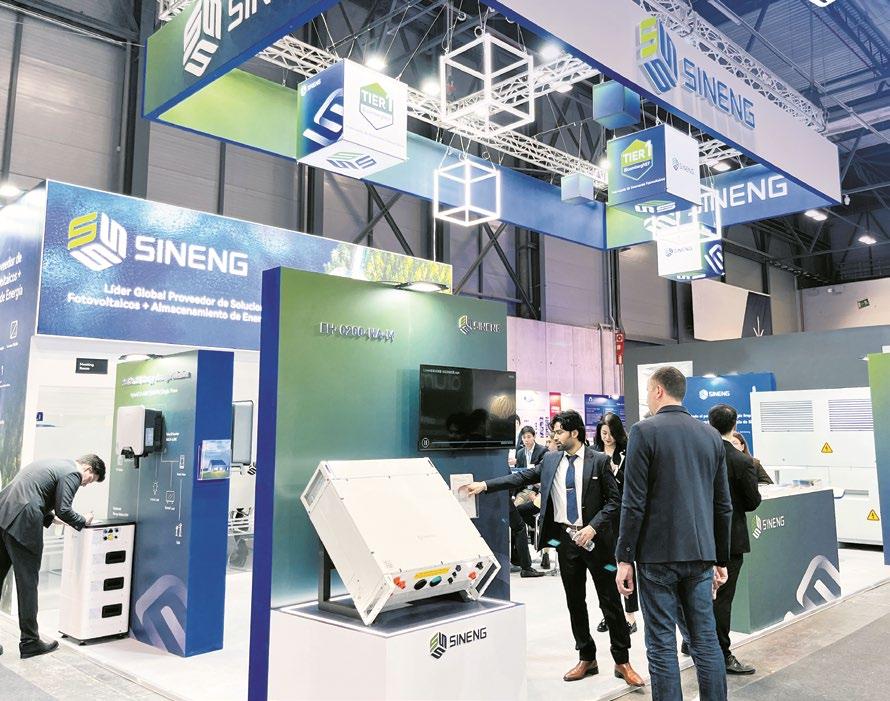
54 OWNER : FirstSource Energy India Private Limited PLACE OF PUBLICATION : 95-C, Sampat Farms, 7th Cross Road, Bicholi Mardana Distt-Indore 452016, Madhya Pradesh, INDIA Tel. + 91 96441 22268 www.EQMagPro.com EDITOR & CEO : ANAND GUPTA anand.gupta@EQmag.net PUBLISHER : ANAND GUPTA PRINTER : ANAND GUPTA PUBLISHING COMPANY DIRECTORS: ANIL GUPTA ANITA GUPTA CONSULTING EDITOR : SURENDRA BAJPAI SR. GRAPHICS & LAYOUT DESIGNER : RATNESH JOSHI GRAPHICS DESIGNER : MAHENDRA PAGARIA Disclaimer,Limitations of Liability While every efforts has been made to ensure the high quality and accuracy of EQ international and all our authors research articles with the greatest of care and attention ,we make no warranty concerning its content,and the magazine is provided on an>> as is <<basis.EQ international contains advertising and third –party contents.EQ International is not liable for any third- party content or error,omission or inaccuracy in any advertising material ,nor is it responsible for the availability of external web sites or their contents The data and information presented in this magazine is provided for informational purpose only.neither EQ INTERNATINAL ,Its affiliates,Information providers nor content providers shall have any liability for investment decisions based up on or the results obtained from the information provided. Nothing contained in this magazine should be construed as a recommendation to buy or sale any securities. The facts and opinions stated in this magazine do not constitute an offer on the part of EQ International for the sale or purchase of any securities, nor any such offer intended or implied Restriction on use The material in this magazine is protected by international copyright and trademark laws. You may not modify,copy,reproduce,republish,post,transmit, or distribute any part of the magazine in any way.you may only use material for your personall,Non-Commercial use, provided you keep intact all copyright and other proprietary notices. want to use material for any non-personel,non commercial purpose,you need written permission from EQ International. SUBSCRIPTIONS : admin@eqmag.net VOLUME 16 Issue 02 CONTENT 12 35 30 HEAD SALES & MARKETING MUKUL HARODE sales@EQmag.net FEATURED FEATURED INDIA BUSINESS & FINANCE CLEANTECH SOLAR SECURES INR 6.25 BILLION GREEN FINANCING FROM TATA CAPITAL FOR PIONEERING SUSTAINABILITY SOLUTIONS THROUGH OPEN ACCESS PORTFOLIO IN INDIA GENERA 2024: SINENG ELECTRIC EMPOWERS GLOBAL ENERGY TRANSITION ONGC IN JOINT VENTURE AGREEMENT WITH NTPC GREEN FOR RENEWABLE ENERGY MAHAMETRO SIGNS SOLAR POWER DEAL WITH AMPIN ENERGY

RECYCLEKARO SIGNS AN MOU WITH BHABHA ATOMIC RESEARCH CENTRE (BARC) FOR COPPER OXIDE NANOPARTICLES PRODUCTION FROM E-WASTE
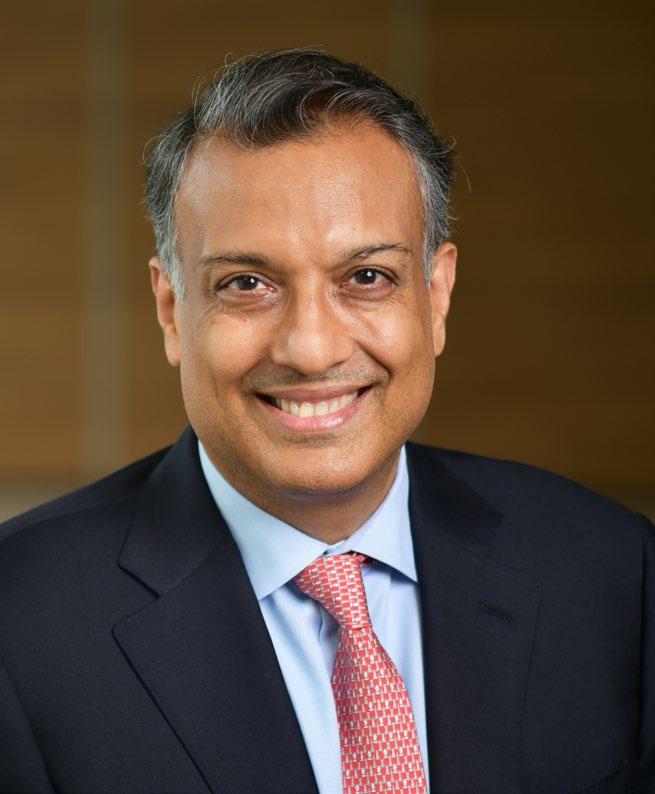
QUOTE ON BUDGET 2024
REACTION QUOTE FROM SUMANT SINHA, FOUNDER, CHAIRMAN AND CEO, RENEW FORCE MOTORS PLANS TO INVEST AROUND RS 2,000 CR IN 3-4 YEARS, TO FOCUS ON EV DEVELOPMENT: MD PRASAN FIRODIA
PRADHAN MANTRI SURYODAY YOJANA : A REVOLUTIONARY SCHEME FOR THE SOLAR INDUSTRY

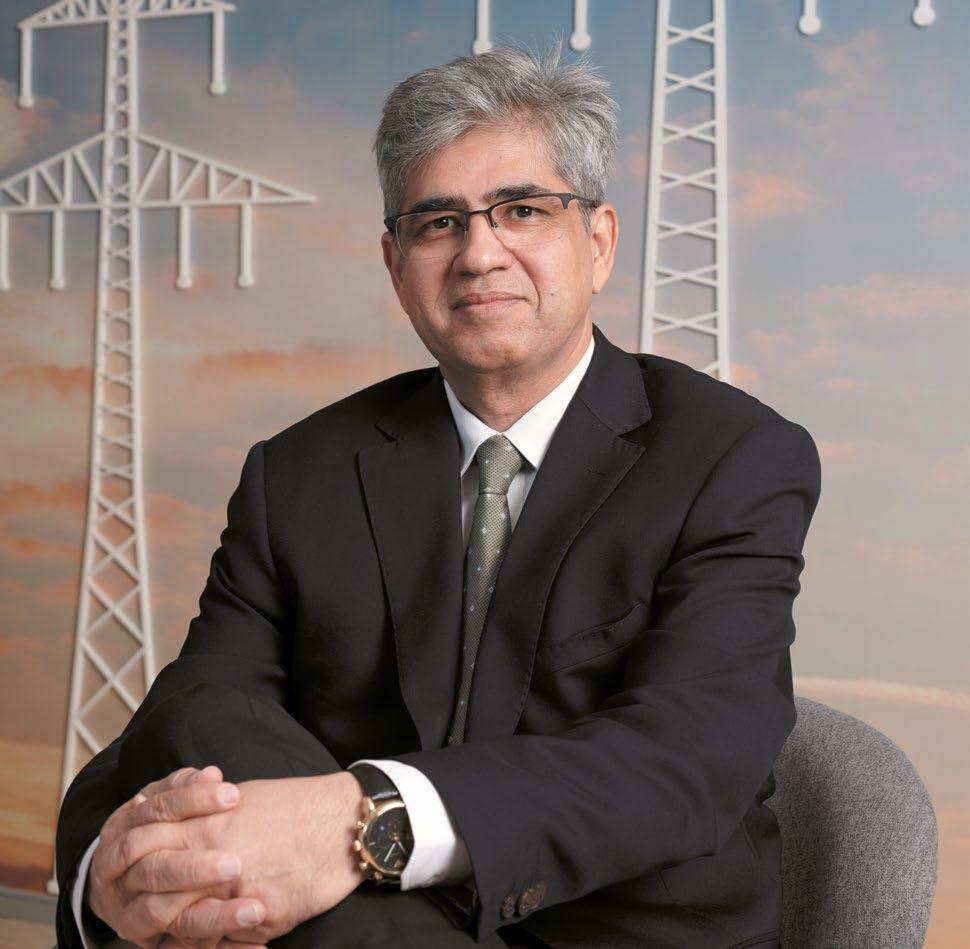
APRAAVA ENERGY STRENGTHENS ITS LOW- CARBON PORTFOLIO WITH A NEW TRANSMISSION PROJECT WIN IN MADHYA PRADESH


PROJECTS
CLEANTECH SOLAR COMMISSIONS 24 MWP OPEN ACCESS SOLAR PV PROJECTS IN MAHARASHTRA, EXPANDING ITS PORTFOLIO OF SOLAR, WIND AND HYBRID POWER PROJECTS WITH A COMBINED CAPACITY OF OVER 300 MWP IN MAHARASHTRA
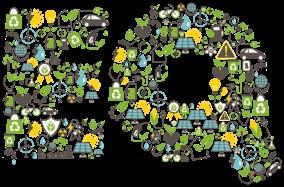
29 32 52 37 70 75
FEATURED FEATURED FEATURED Pg. 12-75 EQ News ELECTRIC VEHICLE SOLAR


SURYACON is the EQ's Flagship Event Multicity Conference on Solar Business, Technology, Finance, Policy & Regulation. Suryacon Conference has special focus on Rooftop Solar. Also includes Solar Parks, Offgrid Solar & Solar Applications.
EQ Int’l Magazine is India’s Premium and Oldest Solar & Renewable Energy Magazine Since 2009 having a print run of 20,000 Copies/Monthly, Readership of 80,000. EQ’s Digital presence is unparalleled with its Magazine viewed by over 100,000+ professionals in Digital Format every month (On Browser, Tablet, SmartPhone, etc...). Its unrivaled daily e-Newsletter and most visited website <www.EQMagPro.com> has lakhs of viewers and visitors daily. We provide various Medium and Tools to get the Highest Possible Visibility which we call the 365 Days, 24*7 Visibility Solution through the 360 Degree Approach. Print, Digital, Website, e-Newsletters, Conferences, Events & Video Content.
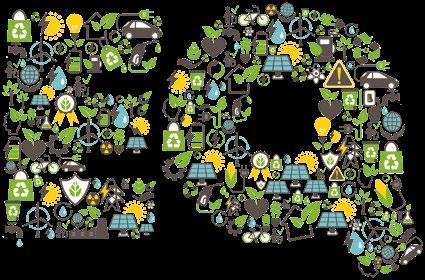





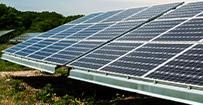
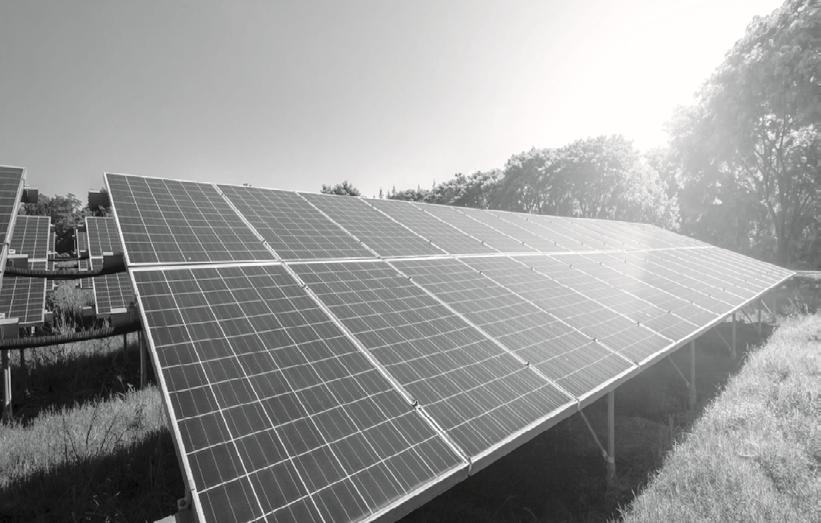
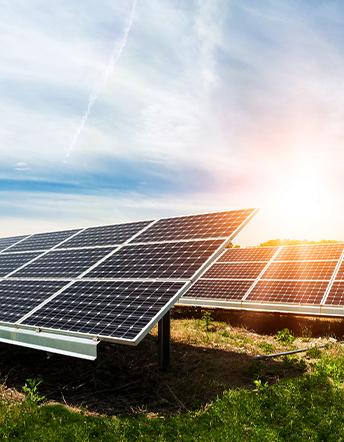
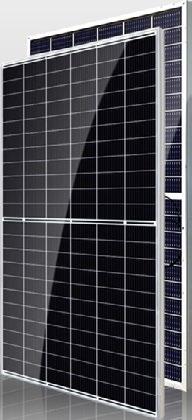
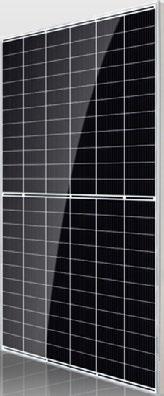
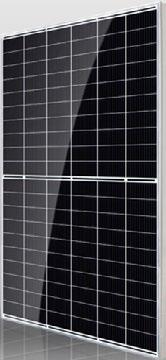
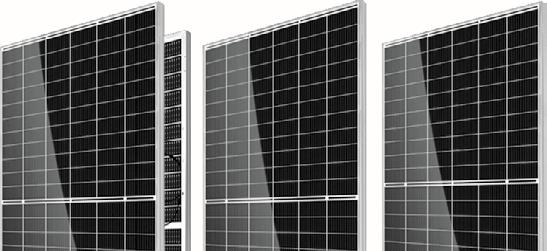



CLEANTECH SOLAR SECURES INR 6.25 BILLION GREEN FINANCING FROM TATA CAPITAL FOR PIONEERING SUSTAINABILITY SOLUTIONS THROUGH OPEN ACCESS PORTFOLIO IN INDIA
Cleantech Solar, a leading provider of renewable energy solutions to corporations in India and Southeast Asia, has secured a long-term senior secured loan facility worth INR 6.25 billion from Tata Capital Limited for its open access portfolio in India. A part of the drawdown has been done and the balance will be done in 2024 for meeting the funding requirements of Cleantech’s under-construction pipeline of open access projects.
The Rupee Term Loan (RTL) will be utilised towards construction, development and operations of open access solar and wind parks across different states in India. Cleantech Solar’s focus on expanding its commercial and industrial (C&I) portfolio, currently at 1.2 GWp, aligns with its commitment to sustainable growth. The renewable energy generated from these open access projects will be procured by esteemed corporate consumers on a captive basis to meet their energy needs for manufacturing / business operations. These projects cater to customers across sectors including automotive, FMCG, apparel, industrial equipment and chemical manufacturing, amongst others.

Sachin Jain, CEO of Cleantech Solar, said: tech Solar has been at the forefront of provid ing clean, cost-effective and stable power to corporate clients in India and Southeast Asia, helping them achieve their sustainability goals and improve their bottom line. This financing from Tata Capital will expedite the deployment of our open access renewable energy projects in India, delivering sustainable power to leading global corporates. It underscores our com mitment to strengthening these collaborations and accelerating our journey towards a carbon-free future.”



Mr. Pankaj Sindwani, Chief Business Officer - Cleantech Finance, Tata Capital, said: We are pleased to have part nered with Cleantech Solar in deploying funds towards open access renewables proj ects in India, aligning with our sustain ability goals and strengthening our green lending portfolio. This loan facility will facilitate access to affordable green power across corporates from varied sectors and geographies thus meeting their carbon footprint targets. Since the market is still in nascent stage, such innovative capital solutions will be critical to bridge the financing gap to accelerate the shift to renewable energy. With our wide array of sustainable lending solutions and deep understanding of the market, we are committed to enhance and support partnerships to scale up the implementation of open access projects and country’s climate goals.
12 EQ FEBRUARY 2024 www.EQMagPro.com INDIA
SOLAR MICRO GRIDS TO LIGHT UP OVER 9,000 REMOTE HOUSEHOLDS IN TRIPURA
Solar microgrids are set to illuminate more than 9,000 remote households in Tripura. This initiative aims to bring reliable and sustainable electricity to remote areas, contributing to improved living standards and supporting the transition to clean energy in the region.
The Centre has sanctioned Rs 81 crore to Tripura for setting up 274 solar micro grids in remote areas of the northeastern state to light up over 9,000 houses, an official said.Under the project of the Ministry of Development of Northeast Region (DoNER), the micro grids will be established in hamlets in Dhalai, Unakoti, and South, West and North Tripura districts, where “conventional electricity appears non profitable” to the state power utility because of low population density, he said.
“The DoNER has sanctioned Rs 81 crore to Tripura for setting up 274 solar micro grids in remote areas, particularly tribal hamlets, where conventional electricity has not reached the people yet. A total of 9,250 families will be benefited under the project,” an official of the Tripura Renewable Energy Development Agency (TREDA) said.
The northeastern state still has several tribal and non-tribal habitations where electricity has not reached yet due to geographical isolation and low population density, he said, adding the project will light up the houses by using solar power.
“Each solar micro grid will have an installed capacity ranging from 2 KW to 25 KW depending on the population of a particular habitation. Although the tariff has not been finalised yet, the beneficiary needs to pay a small amount for power consumption,” he said, adding the work is expected to commence in the current fiscal. According to TREDA estimation, the northeastern state has a solar power potential of 2,000 MW, of which only 19.50 MW is being generated at present.
Recently, the state has unveiled Tripura Energy Vision of generating 500 MW of solar power by 2030.


INDIA
INDIA
POLARIS LANDS ₹5200 CRORE DEAL FOR STATE-OF-THE-ART SMART METER ROLLOUT IN UTTAR PRADESH
• Wins contracts for important clusters of Lucknow and Ayodhya to install over 5.1 million smart meters
• Expands its footprint with additional Letter of Awards in Manipur and West Bengal worth ₹2400 crore to install over 2.3 million smart meters
• Has previously secured contracts for smart meter installation in Bihar and Ladakh for more than₹118 crores collectively
Polaris Smart Metering, a leading provider of advanced smart metering solutions, has been awarded two contracts valued at over ₹5,200 crore for smart prepaid metering in the state of Uttar Pradesh. Madhyanchal Vidyut Vitran Nigam Limited (MVVNL) has awarded the contracts to Polaris for installing over 5.1 million smart meters in the important clusters of Lucknow and Ayodhya/Devipatan, which the company plans to install over the next 27 months.
As per the agreement, Polaris Smart Metering will supply, commission, install and maintain smart meters for consumers and system metering across the consumer base in these important clusters for the next 10 years. These smart meters will be equipped with state-of-the-art technology, enabling prepaid billing, real-time energy monitoring, accurate metering, and improved grid management capabilities. This contract comes under a Design-BuildFinance-Operate-Own-Transfer (DBFOOT) agreement. In addition to Uttar Pradesh, Polaris has also received Letter of Awards (LOAs) from the states of West Bengal and Manipur, totaling over ₹2400 crores, and is set to install more than 2.3 million smart meters across these two states.
The primary objective of this project is to reduce losses for DISCOMs and to empower consumers by introducing smart prepaid meters, enabling them to have better control over their energy consumption. Through the implementation of these smart meters, consumers will have real-time access to their energy usage data, allowing them to monitor and manage their consumption patterns effectively. This will result in a more informed decision-making process for consumers, fostering a culture of energy conservation and responsible electricity usage. Additionally, consumers will have the flexibility to recharge their meter as per their convenience, avoiding the inconvenience of monthly visits from meter readers or the hassle of bill payment. This will not only enhance customer satisfaction but also streamline the overall billing process.

"We


Marjut Falkstedt, EIF Chief Executive says: “Better managing our energy needs is one of the most important challenges of our time. That’s why we are excited about our participation in the newly established fund. This investment aligns perfectly with the EIF’s strategic objectives and our commitment to driving the energy transition and supporting decarbonization efforts across Europe.”
To tackle power theft, Polaris has internationally patented algorithms to enable DISCOMs to detect and address power theft effectively. In addition, Polaris’s technology will also enable DISCOMs to implement advanced demand-response policies for maximum integration of renewable energy sources in their power purchase portfolios. In addition to this, Polaris ensures a high level of cyber security by encrypting its entire communication stack, and employing multiple layers of encryption for data privacy. This includes identity and access management, authorization, and a user privilege system.

are incredibly proud to have been entrusted with these transformative projects," said Yashraj Khaitan, CEO, Polaris Smart Metering "Our smart metering solutions will empower consumers with actionable insights into their energy consumption, while simultaneously delivering substantial benefits to the state governments in terms of improved grid efficiency, reduced pilferage, and improved environmental sustainability. We extend our heartfelt gratitude to MVVNL for recognizing the potential of innovative technology in shaping the future of grid management. The win in Uttar Pradesh and the LOAs in West Bengal and Manipur underscore Polaris’s commitment towards digitizing and transforming India’s electricity grid and marks a significant stride towards a smarter and more sustainable energy future for our country.”
Polaris Smart Metering is committed to partnering with state governments, utilities, and consumers to ensure a successful implementation of the smart prepaid metering system. Prior to this, Polaris has won multiple smart metering contracts, including contracts in Ladakh and Bihar for installing over 1,00,000 smart meters for a value of more than Rs 118 Crores cumulatively. Polaris is involved in manufacturing, supply, installation, integration, testing and commissioning of AMI Projects in India, which will herald a transformation in the energy landscape benefiting consumers, the environment, and the overall sustainability of the country.

14 EQ FEBRUARY 2024 www.EQMagPro.com
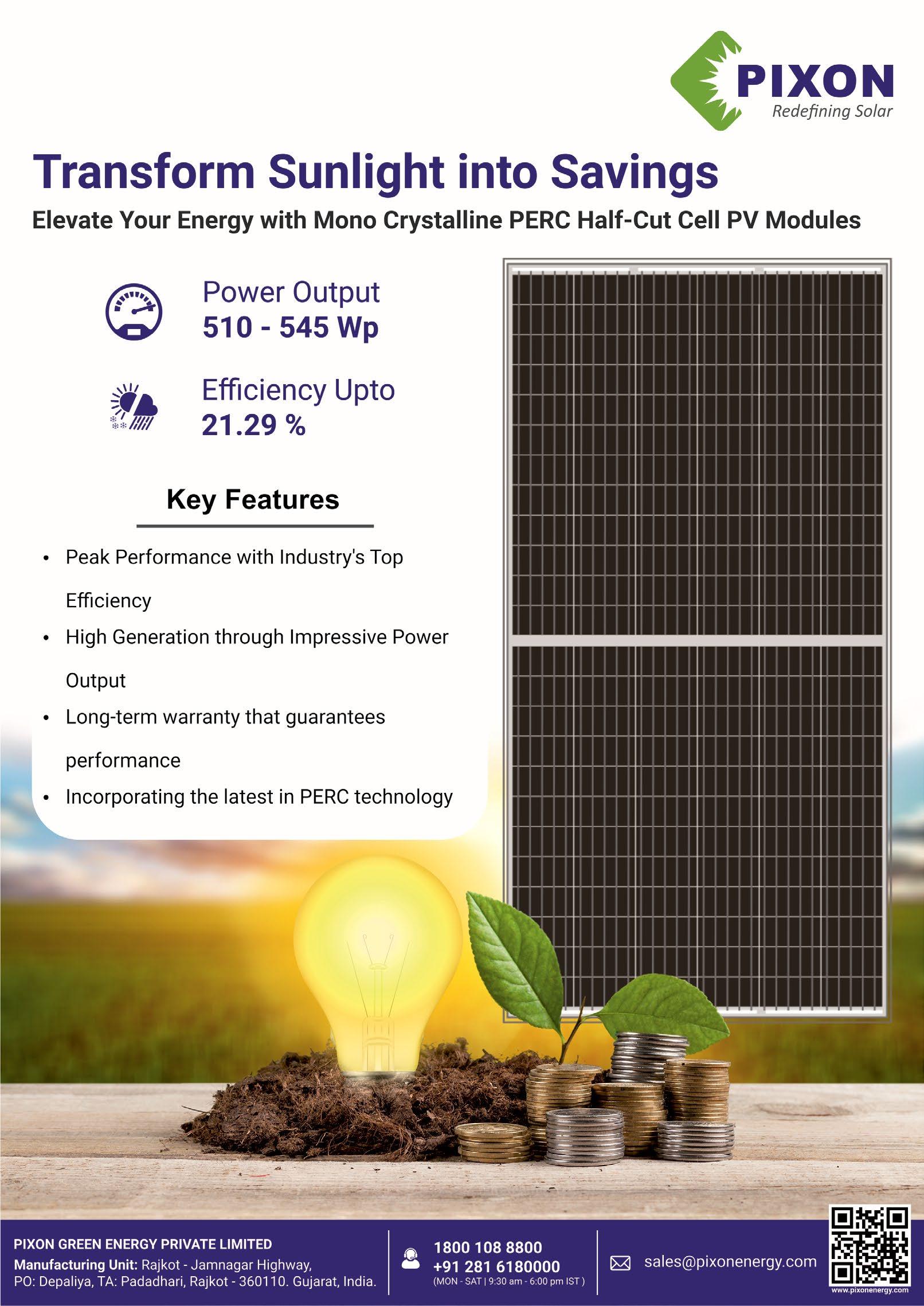
INDIA
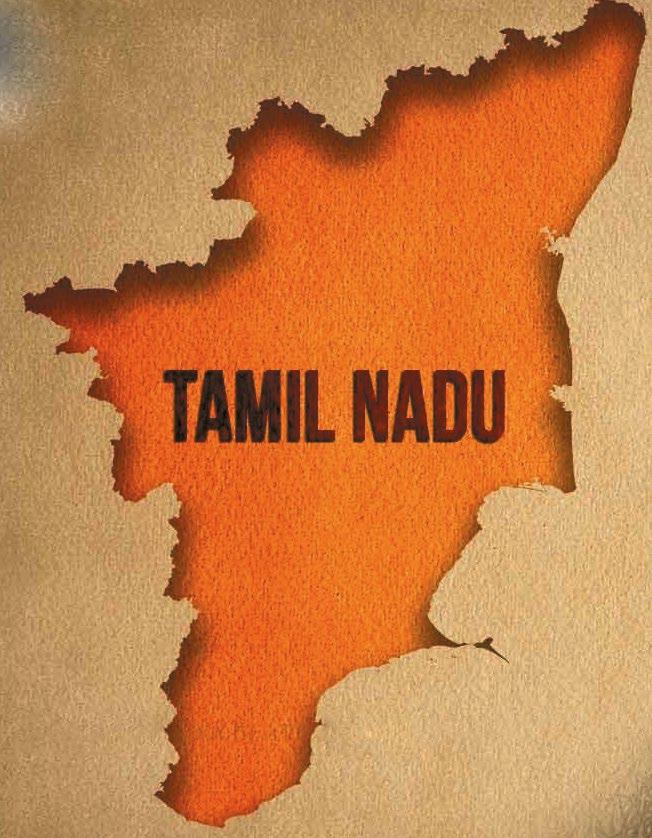
Global Investors Meet: Mukesh Ambani said that Tamil Nadu has become one of the most business-friendly states in the country and that he believes that the state would soon become a trilliondollar economy.
Reliance Industries Chairman Mukesh Ambani has said that they will make new investments in renewable energy and green hydrogen in Tamil Nadu. Ambani, who skipped the Global Investors Meet hosted in the state, sent in a video message, addressing the summit. He said that the conglomerate would work closely with the state government to promote sustainable development.
Ambani said that Tamil Nadu has become one of the most business-friendly states in the country and that he believes that the state would soon become a trillion-dollar economy. “Reliance has proudly partnered in Tamil Nadu’s growth over the years. We have opened nearly 1,300 retail stores across the state, investing over Rs 25,000 crores. Jio has invested over Rs 35,000 crores in Tamil Nadu, bringing the fruits of the digital revolution to 35 million subscribers in every town and village in the state,” he said.
The billionaire said that Reliance has partnered with Canada’s Brookfield Asset Management and US-based Digital Reality to set up a state-of-the-art data centre that will be opened next week.
“Reliance has committed to making new investments in Tamil Nadu in renewable energy and green hydrogen. We shall work closely with the state government to promote sustainable development, which is necessary to save Mother Earth from the climate crisis,” he said, adding that he is confident that the Tamil Nadu government will support them with viable policies. Meanwhile, the Tamil Nadu government announced that it has signed investment pacts worth over $4.39 billion with firms such as Tata Electronics and Pegatron, both of which are suppliers for Apple, as well as auto major Hyundai Motors. Tata Electronics has committed to invest Rs 12,080 crore, while Pegatron has said it would invest Rs 1,000 crore.
JSW Energy committed to invest Rs 12,000 crore to develop re-
RELIANCE TO INVEST IN RENEWABLE ENERGY, GREEN HYDROGEN IN TAMIL NADU, SAYS MUKESH AMBANI
The billionaire said that Reliance has partnered with Canada’s Brookfield Asset Management and US-based Digital Reality to set up a stateof-the-art data centre that will be opened next week.

newable energy projects. Hyundai Motors committed Rs 6,080 crore, some of it earmarked for electric vehicle battery and car manufacturing.
Vietnamese EV maker VinFast agreed to set up its first manufacturing facilities in India and work toward an investment of up to $2 billion in Tamil Nadu.
Additionally, Tata Power stated that it plans to invest Rs 55,000 crore in wind and solar power generation in Tamil Nadu in the next 5-7 years.
16 EQ FEBRUARY 2024 www.EQMagPro.com
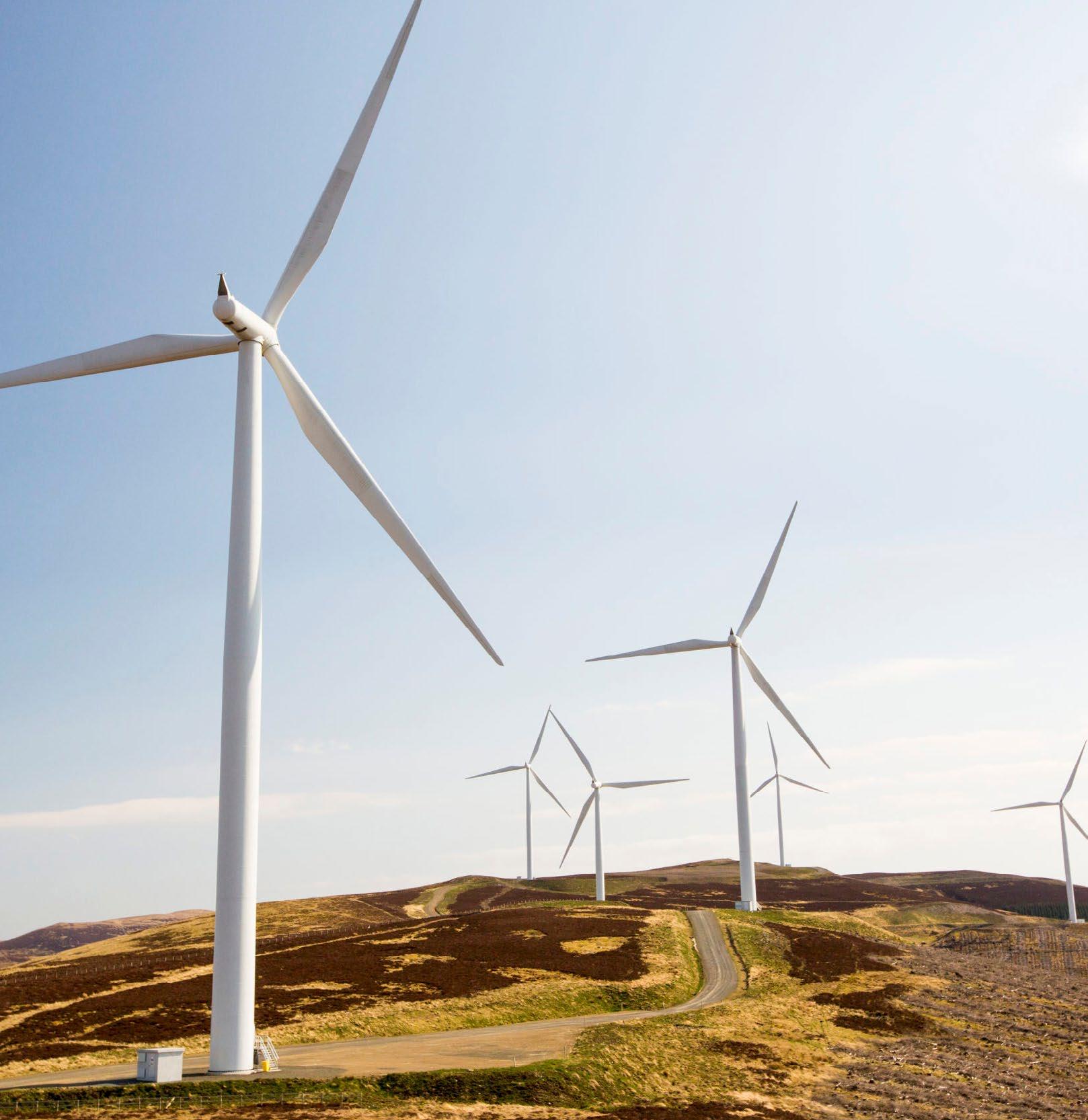
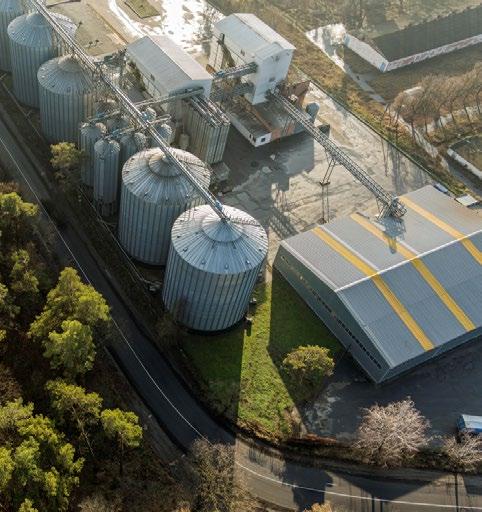
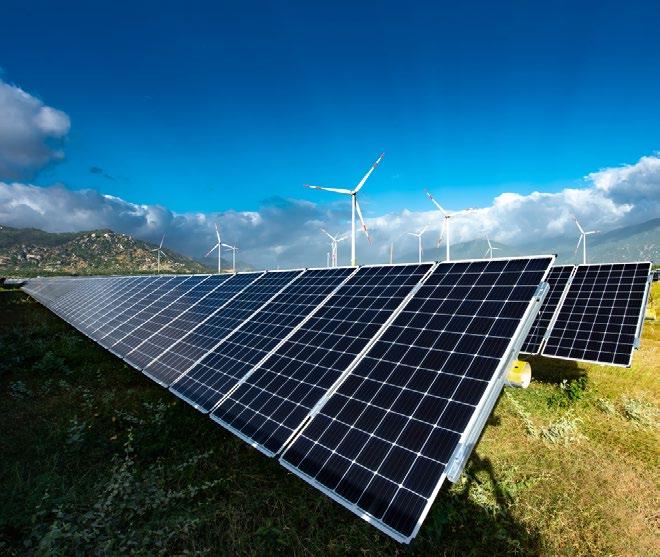

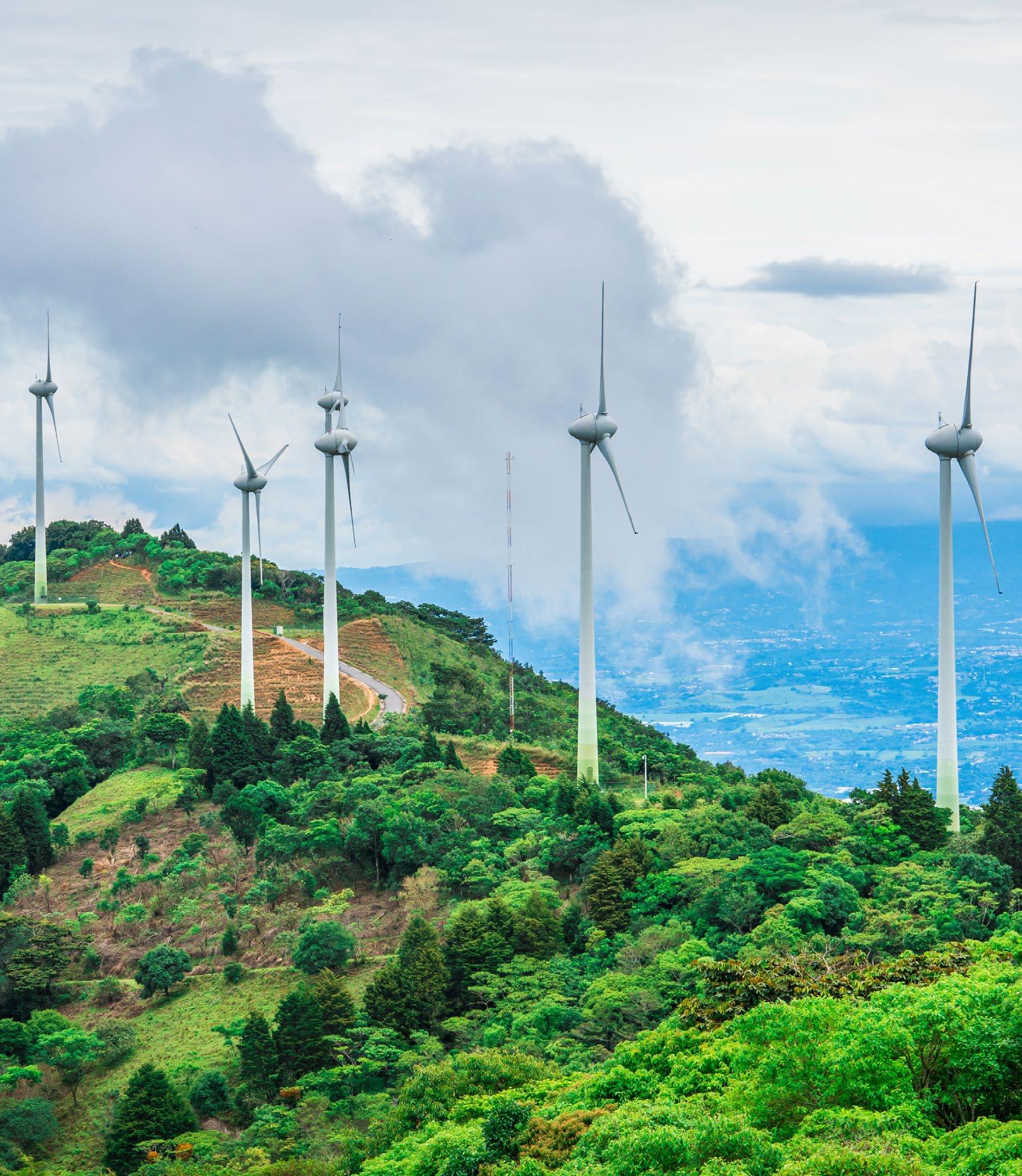
www.EQMagPro.com 17 EQ FEBRUARY 2024 EARN ADDITIONAL REVENUE THROUGH CARBON OFFSETS (+91) 731 42 89 086 business@enkingint.org www.enkingint.org EKI ENERGY SERVICES LIMITED One of the world’s largest carbon credits developer & supplier 40+ Countries | 3500+ Clients | 200+ Million Offsets Traded | BSE Listed also known as EnKing International Scan QR code to visit our website Get your renewable energy projects registered through us
NGEL SIGNS MOU WITH GOVT OF MAHARASHTRA FOR DEVELOPMENT OF GREEN HYDROGEN PROJECTS
NTPC Green Energy Limited (NGEL) signed a Memorandum of Understanding (MoU) with Govt of Maharashtra for development of Green Hydrogen and derivatives (Green Ammonia, Green Methanol) of up to 1 million Ton capacity per annum, including Pump Hydro Projects of 2 GW and development of RE projects with or without storage up to 5 GW in the state.
The MoU was exchanged between Shri Mohit Bhargava, Chief Executive Officer, NGEL and Shri Narayan Karad, Deputy Secretary (Energy), GoM in the presence of Hon’ble Chief Minister, Hon’ble Deputy CM and other senior officials. The above MoU has been signed as a part of Green Investment Plan of Govt of Maharashtra in the next five years and envisages a potential investment of approximately ₹ 80, 000 Crore. NTPC is in the path of building up RE capacity of 60 GW by 2032. NGEL is a wholly-owned subsidiary of NTPC and aims to be the flag bearer of NTPC’s Renewable Energy journey with an operational capacity of over 3.4 GW and 26 GW in pipeline including 7 GW under implementation.

ADANI GREEN DELIVERS CASH BACKED REDEMPTION PLAN FOR USD 750 MILLION HOLDCO BOND
Eight months prior to maturity, the outstanding notes fully secured with cash balance in Senior Debt Redemption Account (SDRA) of Holdco Notes Editor Synopsis
• AGEL delivers on refinancing plan for USD 750 million of notes due on 09 September 2024
• With this, AGEL has fully defeased the Holdco Notes, eight months prior to the maturity date and has further resulted in significant deleveraging in AGEL by way of equity proceeds while continuing to deliver on the growth plans
• AGEL has delivered USD 1.4 bn equity raising and USD 1.6 bn of debt for ringfenced project SPVs from international banks, demonstrating strong market access at attractive pricing, enabling AGEL to achieve its target of 45 GW by 2030.
Adani Green Energy Limited (AGEL) announced the redemption plan for the USD 750 million 4.375 notes due 09 September 2024 (Holdco Notes). The outstanding amounts of the Holdco Notes shall be fully secured through cash balances set aside as part of various reserve accounts securing the Holdco Notes, eight months prior to the maturity.
The redemption plan for the Holdco Notes is as detailed below -
1. Amounts in the Reserve Accounts and Internal Accruals - USD 169 million (including Debt Service Reserve Account, Hedge Reserves & Interest on Reserve Account).
2. TotalEnergies 1,050 MW JV Consideration – USD 300 million, transaction closed on 26 December 2023, and the funds are already lying in the Senior Debt Redemption Account (SDRA) of the Holdco notes.
3. Proceeds from Initial tranche of the Promoter Preferential Allotment – ~USD 281 million, (USD equivalent of INR 2,338 crores), expected in the end of January 2024, and the funds shall be deposited into the Senior Debt Redemption Account (SDRA) of the Holdco notes.
4. Total amount - USD 750 million
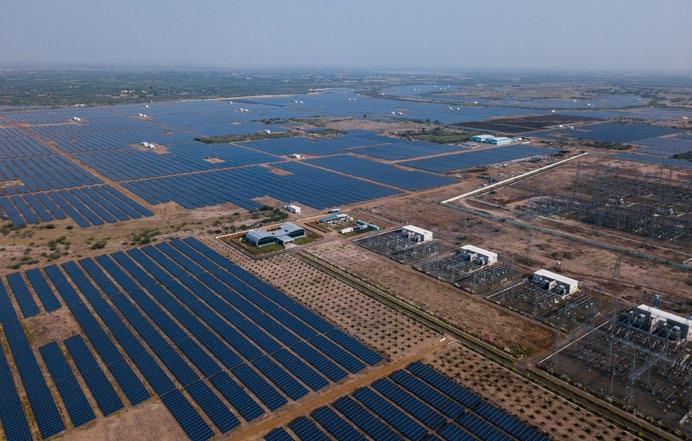
As a result, the entire amount of the USD 750 million Holdco Notes is fully secured eight months prior to its maturity date. With this outcome, AGEL has fully defeased the Holdco Notes, eight months prior to the maturity date and has further resulted in significant deleveraging in AGEL by way of equity proceeds while continuing to deliver on the growth plans.
Underpinning the repayment is the successful equity capital raise program of USD 1.425 billion (includes USD 1.125 billion of preferential issuance by promoters and USD 300 million from TotalEnergies JV), reflecting the deep interest of long-term investors, strategic partners, coupled with unwavering promoter commitment to meet AGEL’s strategic priorities of achieving its target of 45 GW by 2030.
18 EQ FEBRUARY 2024 www.EQMagPro.com INDIA
WELSPUN WORLD COMMITS RS 40,000 CRORE IN GUJARAT’S GREEN ENERGY SHIFT
The investment will be used to enhance the company’s production capacity and to diversify its product portfolio. This investment is expected to create numerous job opportunities and contribute to the economic growth of Gujarat.
Welspun World, through its entity Welspun New Energy Limited, is committed to supporting Gujarat’s decarbonisation ambitions with a cumulative investment of over Rs 40,000 crores. It plans to build a green hydrogen and green ammonia ecosystem in the state. In a release, Welspun said its new energy entity today entered into a strategic alliance with Gujarat Pipavav Port Limited (GPPL), promoted by APM Terminals, part of the AP Moller-Maersk Group, to mutually explore opportunities and develop green hydrogen facilities for the production of green hydrogen and its derivatives such as green ammonia and green methanol, at the land parcel provided by Gujarat Pipavav Port Ltd. The MoU, inked at the Vibrant Gujarat Global Summit 2024, will also explore collaboration in joint production and off-take arrangements for the green molecules to be developed at the facilities.



Kapil Maheshwari, Executive Director and CEO of Welspun New Energy said “This initiative reflects our dedication to contributing to the prosperity of the State and creating a positive impact on its economic landscape. Welspun New Energy is eager to be a catalyst for transformative changes in the energy sector across India by developing robust and reliable green energy infrastructure.”
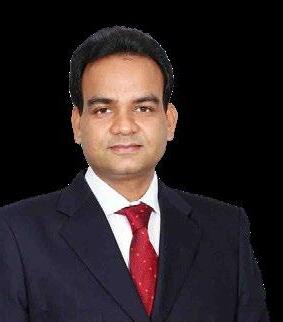

BK Goenka, Chairperson, Welspun World, “As a responsible global conglomerate, Welspun World continues to invest in longterm, strategic projects that are aligned with Welspun’s Vision and our desire for a greener planet. Our initiatives align with Prime Minister Narendra Modi’s mission of making India a leader in Green Energy and transforming Gujarat as one of the growth engines on our journey towards achieving sustainable economic growth. We are delighted that our partnership with GPPL will explore avenues for reducing emissions by the shipping industry, a sector which is facing significant challenges in transitioning to Green Energy.”
With annual revenues of over USD 3 billion and a presence of over three decades, Welspun World is one of India’s fastestgrowing conglomerates, with businesses in line pipes, home textiles, building materials, infrastructure, water, steel, warehousing, new energy, advanced textiles and flooring solutions.
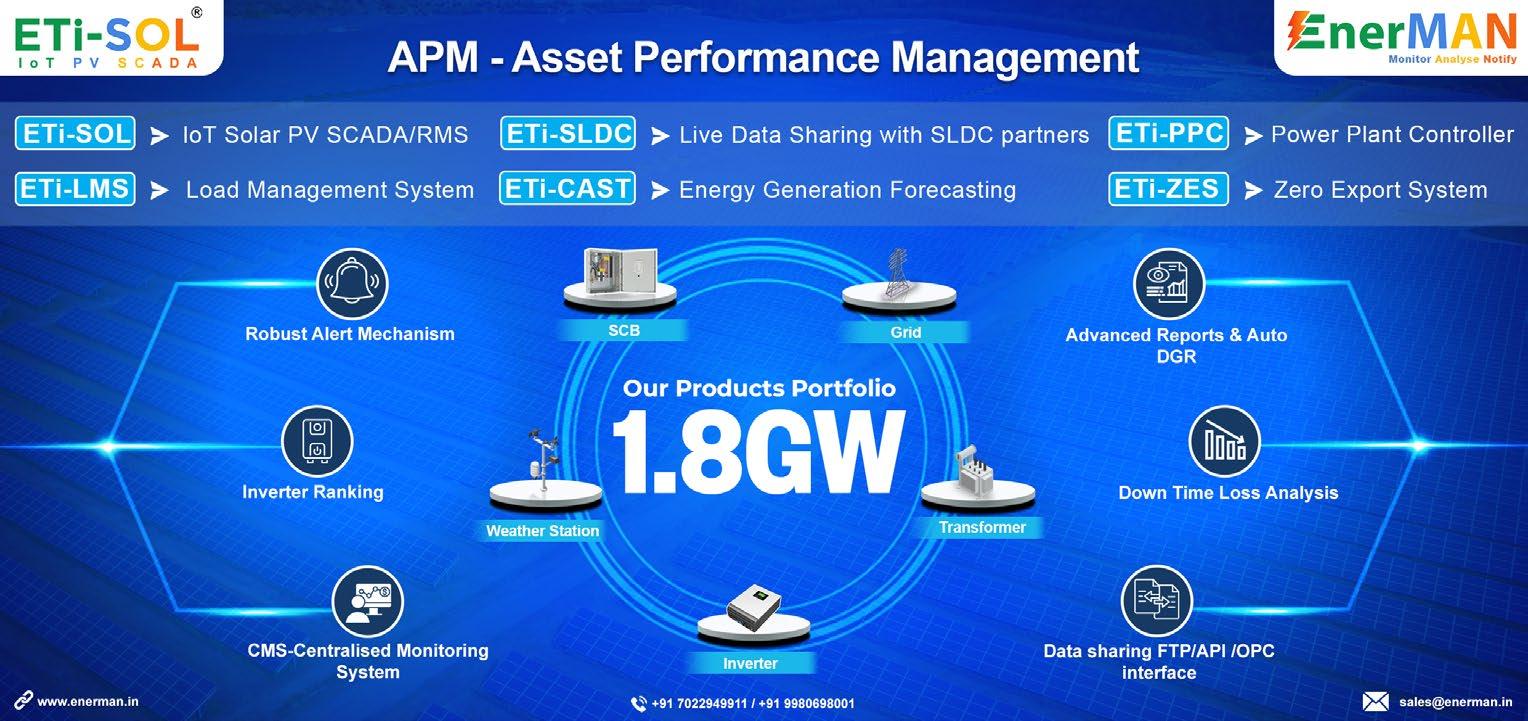
INDIA
UNION MINISTER R K SINGH ANNOUNCED RS 17.05 LAKH CRORE
INVESTMENT IN ENERGY SECTOR
Union Minister R K Singh announces a substantial investment of Rs 17.05 lakh crore in the energy sector. This significant financial commitment reflects the government’s focus on advancing energy infrastructure, promoting sustainability, and fostering economic growth in India.
Union Minister R K Singh declared a substantial investment of Rs 17.05 lakh crore in the energy sector. The funds are earmarked for the power and renewable energy domains, attracting a cumulative investment of about 16.93 lakh crore since 2014, as stated by Singh. In his briefing on the recently introduced Electricity (Amendment) Rules 2024, Singh highlighted that a total of Rs 16.93 lakh crore has been infused into the power and renewable energy sectors, as reported by ET. The detailed breakdown includes Rs 11.2 lakh crore directed towards generation, distribution, and trans-
mission, with an additional Rs 5.73 lakh crore allocated to the renewable energysector. Singh further emphasised the allocation of Rs 7.4 lakh crore for the power sector and Rs 9.65 lakh crore for the renewable energy sector. Singh also revealed that a power plant with 80 GW of thermal power generation capacity is currently under construction, anticipated to be operational by 2030. Simultaneously, approximately 99 GW of renewable energy is currently in the construction phase. Notably, he projected India’s power generation capacity to surpass 800 GW, a substantial increase from the current 428 GW. India’s ambitious plan includes bidding out 50 GW of renewable energy projects annually.
SUNPURE, AN INTELLIGENT PHOTOVOLTAIC ROBOTIC SOLUTIONS FIRM, HAS SUCCESSFULLY SECURED SERIES A FUNDING
Sunpure Technology Co., Ltd. (Sunpure) is pleased to announce the successful completion of its Series A financing round on January 24th. The round, which exceeded a hundred million yuan, was led by Hengxu Capital, with participation from Yuantai Investment Partners Fund, Guoyuan Fund, and existing shareholder GL Ventures.
Sunpure, a China-based high-tech innovative company, specializes in the research and development, manufacturing, sales, and service of intelligent photovoltaic (PV) robots. The company is dedicated to addressing installation, cleaning, and operation and maintenance challenges in renewable energy power plants through intelligent robotic solutions.
Since 2020, Sunpure has rapidly emerged as the fastest-growing company in the field. By the end of 2023, Sunpure had secured contracts for over 13 GW capacity. Sunpure's PV cleaning robot has been successfully deployed in 14 countries and regions, including the Middle East, Latin America, China, and India. The company's achievements were acknowledged in the Middle East, where it received the "Regional Robotic Solar Cleaning Solution" award from the Middle East Solar Industry Association (MESIA). Notably, Sunpure achieved over 1 GW in signed contracts during its inaugural year in the Indian market.
Sunpure has established a robust technological foundation, investing over 25% annually in research and development. The company has assembled a team of experienced experts in robotics and renewable energy, holding over 160 patents and securing a leading position in the industry. Additionally, Sunpure operates the industry's only TUV qualified client testing facility, ensuring international-standard testing levels and reliable product performance. With these advantages, Sunpure has received over 30 awards worldwide.
Presently, Sunpure's solution encompasses various scenarios, including mountains, deserts, fisheries, and commercial and industrial rooftops. The company is actively exploring robotic applications in different stages of PV plant development, with the aim of comprehensively enhancing power generation efficiency, increasing the overall internal rate of return (IRR), lowering the levelized cost of electricity (LCOE), and delivering higher value to global customers. The funds raised in this round will primarily be directed towards the research and development of intelligent robots for PV plants, as well as the optimization and upgrading of comprehensive cleaning solutions across various scenarios.
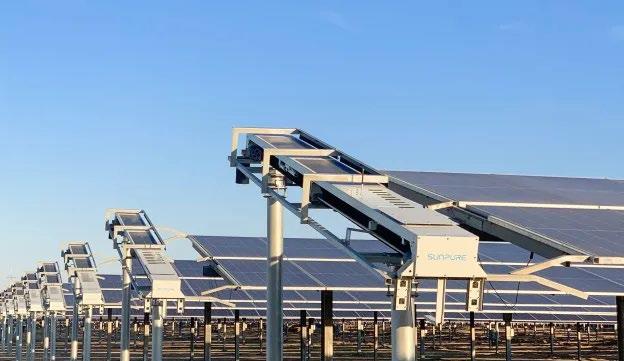

20 EQ FEBRUARY 2024 www.EQMagPro.com
INDIA

HARTEK POWER ACHIEVES 7 GW SOLAR GRID CONNECTIVITY, EYES FURTHER EXPANSION
Hartek Power, a leading power solutions provider, has achieved a significant milestone by achieving 7 GW (gigawatts) of solar grid connectivity. This accomplishment underscores the company’s expertise and capabilities in the solar power sector. With this achievement, Hartek Power has positioned itself as a key player in the renewable energy industry, contributing to India’s ambitious solar energy targets.
Key projects that have contributed to this milestone include collaborations with renowned entities, such as Azure Power, Aditya Birla, Renew Power, and Tata Power. Hartek Power said it has installed more than 7 GW of solar grid-connected projects. “In a remarkable leap, the company has expanded its projects from 5 GW (Giga Watt) to an impressive 7 GW in the second half of 2023, signifying a substantial 40 per cent increase in capacity,” it said in a statement. Key projects that have contributed to this milestone include collaborations with renowned entities, such as Azure Power, Aditya Birla, Renew Power, and Tata Power. The company is also in the process of executing a 22 MW floating solar project with SJVN, slated to be commissioned in the middle of this year.
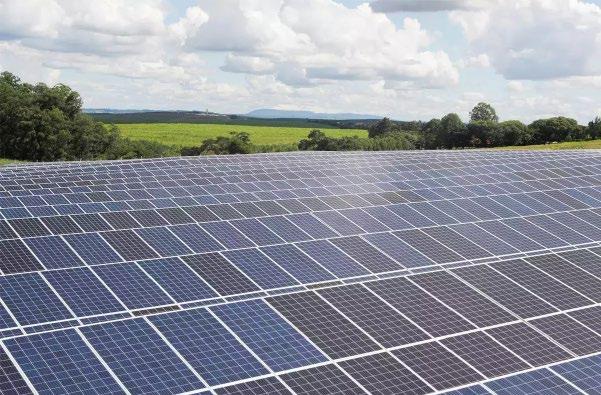
REC TO RAISE ABOUT RS 3,500 CRORE VIA YEN-DENOMINATED GREEN BONDS
Rural Electrification Corporation Limited (REC) aims to raise approximately Rs 3,500 crore through yen-denominated green bonds. This initiative reflects REC’s commitment to financing environmentally sustainable projects and contributing to the green bond market
The bonds will issued as part of REC’s $10-billion global medium-term note programme, the company said in a regulatory filing State-owned REC Ltd announced it will raise 61.1 billion yens (about Rs 3,500 crore) through issuance of green bonds. The bonds will issued as part of REC’s USD 10-billion global medium-term note programme, the company said in a regulatory filing. Giving the break-up of each note, the company said a five-year bond worth 31 billion yens will have a coupon rate of 1.67 per cent, a 27.4-billion yen paper with maturity in 5.25 years will have a coupon rate of 1.79 per cent, and another 2.7-billion yen bond having maturity period of 10 years will carry a coupon rate of 2.20 per cent. These bonds will be listed on Global Securities Market of India International Exchange (India INX) and NSE IFSC, the company said. REC said the net proceeds from these notes will be used to finance green projects in accordance with the REC’s Green Finance Framework and the external commercial borrowing guidelines and directions of the Reserve Bank of lndia (RBI). REC, under the Ministry of Power, is a non-banking finance company focussed on power sector lending in India.

22 EQ FEBRUARY 2024 www.EQMagPro.com
INDIA

PM SURYA GHAR: MUFT BIJLI YOJANA LAUNCHED TO BOOST SOLAR POWER ADOPTION
The prime minister has allocated more than Rs 75,000 crore in investment, which aims to bring up to 300 units of free electricity per month to 10 million households
Prime Minister Narendra Modi unveiled the ‘PM Surya Ghar: Muft Bijli Yojana’ on Tuesday to accelerate solar power adoption and foster sustainable development ahead of the Lok Sabha 2024 elections. The project entails an investment of more than Rs 75,000 crore, in order to boost renewable energy while also enhancing people’s welfare. The initiative seeks to illuminate 10 million households by offering up to 300 units of free electricity per month. Modi highlighted the importance of grassroots engagement, announcing incentives for urban local bodies and panchayats to encourage the adoption of rooftop solar systems within their jurisdictions.
In a post on the prime minister’s official account on X (formerly Twitter), he wrote, “In order to popularise this scheme at the grassroots, Urban Local Bodies and Panchayats shall be incentivised to promote rooftop solar systems in their jurisdictions. At the same time, the scheme will lead to more income, fewer power bills, and employment generation for people.” READ: NDA provided 1.5x more govt jobs than UPA, says PM Narendra Modi

The prime minister also added that subsidies would be provided to people as well as “concessional bank loan” to ensure there is “no cost burden on the people”. Furthermore, all stakeholders will be seamlessly integrated into a National Online Portal to streamline the implementation process.
The prime minister also encourages youth to join this effort. He said, “Let’s boost solar power and sustainable progress. I urge all residential consumers, especially youngsters, to strengthen the PM – Surya Ghar: Muft Bijli Yojana.”
HERO FUTURE PLANS TO LAUNCH GREEN HYDROGEN PROJECTS IN COMING MONTHS
Hero Future Energies, a leading renewable energy company, is set to venture into green hydrogen projects in the coming months. The move reflects the company’s commitment to exploring sustainable and innovative energy solutions. Green hydrogen, produced using renewable energy sources, is gaining traction as a clean alternative for various industrial applications and energy storage. Hero Future Energies’ foray into this space signifies a strategic response to the evolving landscape of renewable energy and its potential role in the broader energy transition.
Hero Future Energies (HFE), a renewable energy developer, is exploring green hydrogen project opportunities in India. HFE, an arm of the Hero Group, anticipates making some announcements in the coming months as these discussions progress and materialise into concrete initiatives. The company is actively engaging with various customers across India to scout diverse project opportunities. Further, it is looking at green hydrogen in two ways- one is for supplying for conventional usage to replace alternate materials.
HFE has partnered with Ohmium International, an electrolyser company which manufactures in Bangalore, to develop 1,000 MW of green hydrogen production facilities in India, the UK and the rest of Europe. There are again two areas that could work in making green hydrogen available directly to consumers or the public. One which could have a significant impact is to blend it in the city gas distribution (CGD) system. The other way to get closer to the consumer is in heavy-duty mobility.
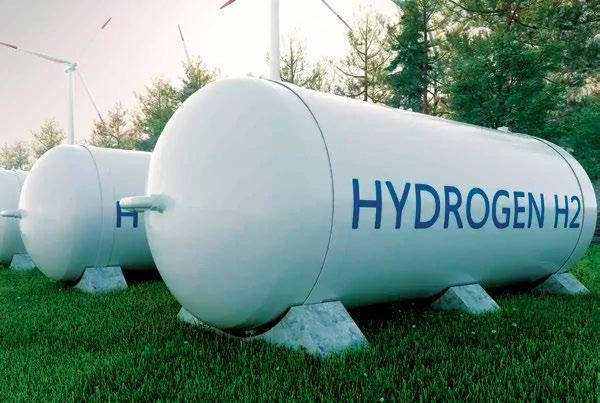
The firm has a global portfolio of three GW of renewable energy assets across India, Ukraine and Vietnam, comprising operational and under-construction projects. It has another two GW of projects in the pipeline across the above geographies as well as the UK and Bangladesh.
24 EQ FEBRUARY 2024 www.EQMagPro.com
INDIA
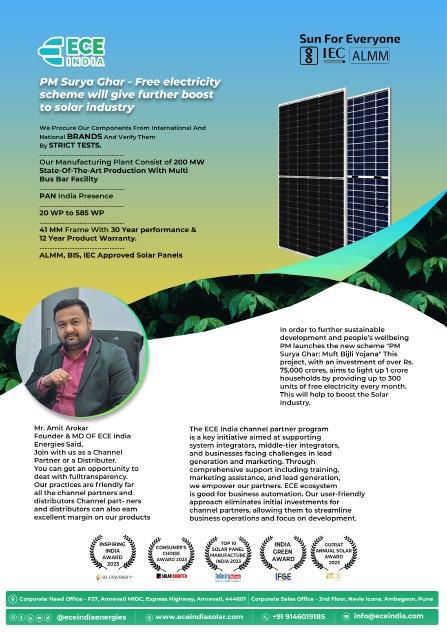
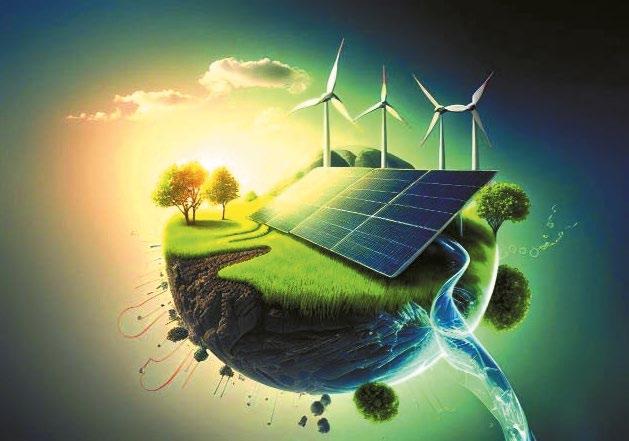
SWITCHING TO GREEN POWER JUSTLY
The move towards green power is inherently just, fostering environmental sustainability and addressing climate change. Transitioning to renewable energy sources ensures a fair and equitable distribution of resources, benefiting communities, and mitigating the impact of environmental degradation on vulnerable populations. The just transition also involves considering the socio-economic aspects, providing job opportunities in the green energy sector, and promoting inclusive growth. Ultimately, the shift to green power aligns with principles of justice, balancing ecological well-being with social and economic equity.
As can be seen from the case of Maharashtra, planning is essential for a just transition. One only has to read the newspaper headlines to realise that climate change is no longer a distant threat. For instance, a headline from January this year announced, “Mumbai experiences its hottest January day with temperatures soaring above 35 degrees Celsius.” Another alarming headline highlighted, “Delayed snowfall, forest fires, migration, and dwindling tourism signal a distress call from India’s mountains.” These examples vividly illustrate the local repercussions of global warming. They underscore that the real journey toward a sustainable future will unfold at the district and state levels. But what strategy can states and districts adopt to become the focal point of climate action? My colleagues and I explored this inquiry last year, selecting Maharashtra as a case study.
Maharashtra, both highly vulnerable to the changing climate and a major greenhouse (GHG) gas emitter, presents a microcosm of challenges posed by the climate crisis at the sub-national level. On the one hand, the climatic impacts will affect the state’s growth and development; on the other, transitioning away from fossil fuel, essential to reduce emissions, threatens to close thousands of factories and leave behind millions of workers. The critical question explored was how Maharashtra can adapt to these climatic shifts and transition towards sustainable energy sources without compromising its economic vitality and social welfare. The research suggests that the solution lies in a “just transition”—a strategic approach that weaves together climate action, green growth, and social justice.
In most studies on climate vulnerability, Maharashtra emerges as one of the most vulnerable states in the country. This is because climate change-driven extreme weather events are impacting every part of the state. While Marathwada and Vidarbha confront drought, the Konkan region experiences flood. The state has also been experiencing increasing heatwaves in the past two decades. A deadly example of this was the heatwave in Kharghar last year in which 14 died, and many were hospitalised. Mumbai, the country’s financial capital, is now hammered by floods and heat. All this is translating into a massive loss to the economy. Take the agriculture sector, which is badly affected by drought, floods, hailstorms, and cyclones. About threefourths of Maharashtra’s cropped areas are vulnerable to these extreme events, which is now causing real losses. In 2021-22, for example, the state government sanctioned about Rs 4,300 crore to farmers as compensation for crop losses. This increased to Rs 7200 crore in 202223—a two-third increase. However, these costs are just a fraction of the total losses, as the state is also paying for infrastructure damage and repairs. The losses to businesses and individuals are likely manifold due to work disruptions and loss of property.
Maharashtra is also one of the major emitters of GHGs, accounting for 10% of the country’s emissions. The emissions have grown at 4.1% per year since 2011-12, a rate higher than the national average. Besides, its per capita emissions are 2.5 tonnes, 15% higher than the national average.
26 EQ FEBRUARY 2024 www.EQMagPro.com INDIA
These emissions arise as the state’s economic engines run on fossil fuels. It has the largest fleet of coal-based power plants and is the second-largest consumer of petroleum products. It is the largest manufacturer of automobiles and the fifth-largest coal producer. Besides, it has the third-largest number of factories in the country, about 40% of which are heavily dependent on coal, oil, and gas. The transition to green energy will affect all these sectors, but most importantly, it will impact over a million formal workers and many lowpaid informal workers.
The top three sectors facing challenges within the next 10 years are coal mining, coalbased power, and automobiles. Over 60% of the currently operational coal mines in Maharashtra will likely close in the next 10 years due to economic unviability and resource exhaustion. Similarly, one-fourth of the thermal power fleet too is likely to be decommissioned due to economic and environmental factors. On the other hand, the automobile sector, which accounts for 7% of the gross state domestic product (GSDP), will be impacted by the electric vehicle transition, especially 2 and 3-wheelers. These sectors require transition plans soon to minimise disruptions to jobs and livelihoods.
Geographically, the green energy transition will affect 14 districts with a large concentration of fossil fuel-dependent industries. Many of these districts are also highly vulnerable to climatic impacts. For example, Nagpur, Chandrapur, and Yavatmal have large concentrations of coal mines, coalbased power plants, and factories. These districts are also draught-prone and highly vulnerable to extreme events. The other hotspot is the Pune district, with a large concentration of the auto industry. To deal with the climate emergency and the transition to green energy, the state needs a multi-pronged approach to enable a just transition. First, it needs a comprehensive just transition policy focusing on economic diversification, green energy, and industry development in the hotspot districts; land and infrastructure repurposing; workforce development; and social infrastructure investments. Second, it must develop tailored regional plans for hotspot districts to prioritise interventions and attract investments. The priority regions for such a plan are the Chandrapur-Nagpur-Yavatmal and Pune clusters. Third, repurposing land and factories will be essential to avoid economic disruptions. In Maharashtra, over 20,000 ha of land is available with closed and unprofitable mines, which can be repurposed for the development of green energy and green industries. This will also avoid the pains of land acquisition and displacement. Fourth, preparing the workforce for the green economy through skilling and reskilling will be essential to create millions of green jobs and push for the next stage of growth. Lastly, significant investments would be required from public and private sources to develop green energy, industry and infrastructure. Some existing funds, like the District Mineral Foundation (DMF) funds with coal districts, can be used to kick-start transition measures.
By prioritising a just transition, Maharashtra can navigate the disruptions due to economic and climatic change, create new green jobs, and achieve its ambitious goal of a trillion-dollar GSDP by 2030.
GOA’S PUSH FOR SOLAR POWER PROGRESSING AT SNAIL’S PACE
Goa’s efforts to promote solar power are progressing slowly, facing challenges in implementation. Despite intentions to boost solar adoption, factors such as regulatory hurdles, land constraints, and public awareness may be impeding the state’s solar initiatives. The government might need to address these issues to accelerate the growth of solar energy in Goa.
The generation of 150 megawatt of renewable power by 2050 seems to be a distant dream for Goa, that is making progress at a snail’s pace in transition to clean electricity.
In the last five years, the State has generated 110.91 million units (MU) of green energy, with an annual rise. From generating just 4.46 MUs of power in 2019, when the State launched its solar mission, to achieving 41.64 MUs of power by the end of November 2023, the coastal State has generated almost eight times more green energy. According to the Economic Survey report tabled in the House, the number of solar connections in the State as on December 2023 are 1134 with total installed capacity of 53.03 megawatts which has so far generated only 110 MU of power.
According to the Goa State Energy Vision 2050, the State aims to generate 150 megawatts of renewable power by 2030. The State intends to become the first in the country to run on 100 per cent renewable energy by 2050. As per data, the State’s power demand at present is 540 megawatt per day and it touches 750 megawatts per day during the peak hour. The State government had in February 2019, notified the Goa State Solar Policy and was subsequently amended in August 2020. Following lack of response, the policy was further amended in March 2023 to allow consumers with demand load of 1 MW and above to take power under Open Access from Solar project during day time generation and during the peak hours (6 pm to 11 pm) through Battery Enabled Storage System with maximum of 15% of demand of the State.
www.EQMagPro.com 27 EQ FEBRUARY 2024
INDIA
ENGIE PLANS TO INVEST RS 17,200 CR TO SET UP RENEWABLE PROJECTS IN GUJARAT
ENGIE has announced intentions to invest Rs 17,200 crore to establish renewable projects in Gujarat. This strategic investment reflects ENGIE’s commitment to advancing clean energy initiatives, contributing to Gujarat’s renewable energy goals and fostering sustainable development in the region.
The company has signed a MoU with the Gujarat government in this regard at the ongoing 10th edition of Vibrant Gujarat Global Summit 2024 in Gandhinagar Pune-based ENGIE plans to invest Rs 17,200 crore for the development of 2.5 GW of renewable energy projects in Gujarat. The company has signed a MoU with the Gujarat government in this regard at the ongoing 10th edition of Vibrant Gujarat Global Summit 2024 in Gandhinagar. These proposed projects are in addition to the ongoing development of a 400 MW solar project at Surendernagar in Gujarat, ENGIE said in a statement. “This MoU signifies an investment of Rs 17,200 crore along with creating 14,000 new jobs, reflecting ENGIE India’s commitment to contributing to the region’s socio-economic development,” the company said.

Amit Jain, Country Manager, ENGIE India, said, “Through this cooperation with the government of Gujarat, our goal is to play a significant role in advancing the state’s renewable energy sector and thereby making substantial contributions to India’s overarching clean energy objectives.” The company is mainly into renewable power generation.

IREDA, INDIAN OVERSEAS BANK INK PACT TO CO-FINANCE RENEWABLE ENERGY PROJECTS
IREDA (Indian Renewable Energy Development Agency) and Indian Overseas Bank have signed an agreement to co-finance renewable energy projects. This collaboration signifies a joint effort to support and fund initiatives in the renewable energy sector, contributing to India’s sustainable development goals.
The agreement was signed in the presence of IREDA CMD Pradip Kumar Das and IOB MD and CEO Ajay Kumar Srivastava in the national capital, a statement said State-owned IREDA announced a partnership with Indian Overseas Bank (IOB) to co-finance renewable energy projects in India.
The agreement was signed in the presence of IREDA CMD Pradip Kumar Das and IOB MD and CEO Ajay Kumar Srivastava in the national capital, a statement said. Indian Renewable Energy Development Agency (IREDA) and Indian Overseas Bank have joined hands by signing a memorandum of understanding (MoU). The agreement sets the stage for co-lending and loan syndication for a diverse spectrum of renewable energy projects across the nation, it added.
The IREDA CMD said, “By combining our strengths and resources, we aim to provide robust financial support to renewable energy projects. The partnership aims to streamline loan syndication and underwriting processes, management of Trust and Retention Account (TRA) for IREDA borrowers, and work towards fixed interest rates over a 3-4-year period for IREDA borrowings”.
This collaboration builds upon IREDA’s successful partnerships with other prominent financial institutions, including Bank of Baroda, Bank of India, Union Bank of India, India Infrastructure Finance Company Limited and Bank of Maharashtra, Das said. IREDA, under the Ministry of New and Renewable Energy, is a non-banking financial institution engaged in promoting, developing and extending financial assistance for setting up projects related to new and renewable sources of energy and energy efficiency/conservation.
28 EQ FEBRUARY 2024 www.EQMagPro.com
INDIA

RECYCLEKARO SIGNS
AN MOU WITH BHABHA ATOMIC RESEARCH CENTRE (BARC) FOR COPPER OXIDE NANOPARTICLES PRODUCTION
FROM E-WASTE
Recyclekaro, one of the leading e-waste and lithium-ion battery recycling companies in India, has entered into a Memorandum of Understanding (MOU) with Bhabha Atomic Research Centre (BARC), India's foremost nuclear research institution. The collaboration aims to utilize/leverage BARC's advanced technology for the extraction of high-purity copper oxide nanoparticles from depopulated printed circuit boards (PCBs).
The produced copper oxide nanoparticles hold immense potential as a catalyst for various industrial processes, antibacterial coatings for medical and electronic devices and sensors, as well as conductive inks and water purification. Beyond the evident environmental advantages, this strategic move is poised to create a positive socio-economic impact by generating employment opportunities throughout the PCB recycling process, from collection and transportation to processing and manufacturing of recycled materials. Notably, the recovery of precious metals from PCBs not only proves economically viable but aligns with circular economy principles, providing essential raw materials for manufacturing. In light of stringent regulations governing electronic waste disposal in India, this collaborative effort underscores Recyclekaro’ s unwavering commitment to sustainability.


Speaking on the association, Mr. Rajesh Gupta, Founder & Director, Recyclekaro, said, "At Recyclekaro, we are committed to exploring innovative methods within the recycling industry. This MOU represents a significant step in advancing our technological capabilities. Our ongoing research and development efforts are driving progress in sustainable technologies and waste management practices, underscoring our commitment to environmental responsibility and our contribution to a more sustainable future."

It's encouraging for Recyclekaro to actively contribute to the efficiency and sustainability of PCB recycling operations using the advanced technologies, aligned with global environmental goals, which emphasize the essential role of technology in addressing electronic waste challenges and promoting responsible resource management. This collaboration reflects our dedication to advancing a cleaner and greener future, and we're pleased to be part of initiatives that positively impact the ecosystem.
Rich in metal content, PCBs are considered a high-value waste. India generates around 3.2 million tons per year of electronic waste, which contains many precious materials. PCB recycling stands as a cornerstone for resource conservation, environmental protection, and economic growth.
Recyclekaro is currently in the stage of establishing its Nickel Metal plant and is in ongoing discussions with new partners for technology transfer, aiming to strengthen the ecosystem. This strategic approach aligns with our commitment to environmental sustainability and the cultivation of a robust Circular Economy and Urban Mining model.
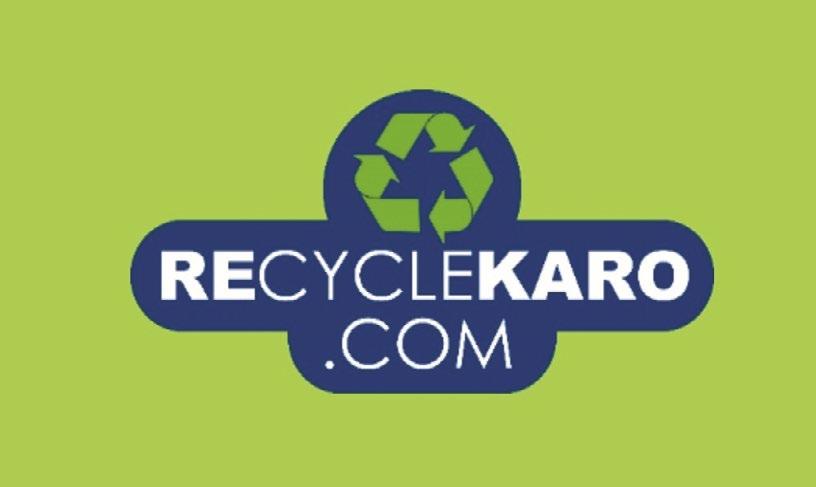
www.EQMagPro.com 29 EQ FEBRUARY 2024 FEATURED

FEATURED
GENERA 2024: SINENG ELECTRIC EMPOWERS GLOBAL ENERGY TRANSITION
Sineng Electric, a leading global provider of photovoltaic (PV) and energy storage system solutions, unveiled its cutting-edge PV inverters and energy storage systems designed for diverse applications, garnering significant attention from attendees.
PIONEERING THE GREEN REVOLUTION WITH UTILITYSCALE PV SOLUTIONS
Sineng Electric showcased its utility-scale PV solutions as the center piece of Genera, creating a buzz in the atmosphere. The spotlight was on the 4.4MW central inverter, the EP4400-HA-UD, featuring isolated internal control, higher power output, simplified O&M, and larger array capacity, which optimizes every touch point of the user journey. Tailoring offerings to local market needs, Sineng emphasized its commitment to meeting the growing energy demands. The SP-350K-H1, with its high compatibility, increased power generation, lower system cost, and grid-friendly design, underscores Sineng’s dedication to propelling the global energy transition towards a greener and more sustainable future.

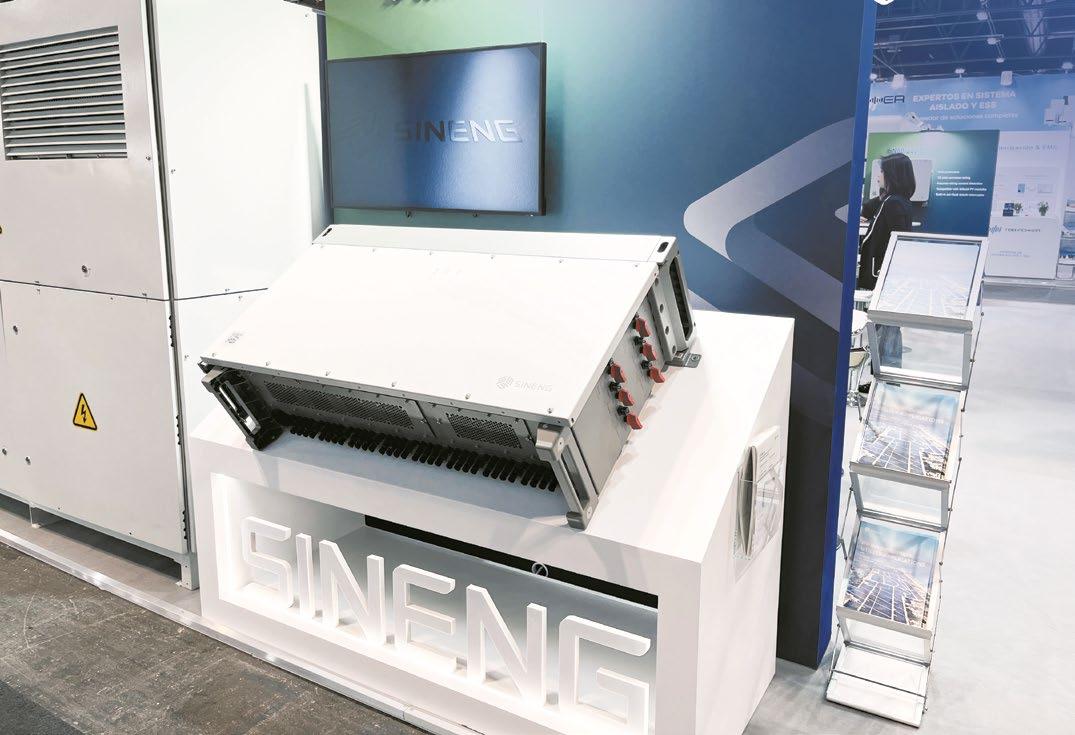
ENERGY STORAGE ON THE RISE WITH 1500V STRING PCS
Sineng showcased the EH0200-HA-M with exceptional system efficiency, achieved through battery rack level management and flexible modular design, which is well-suited for utilityscale and C&I applications. The higher battery capacity utilization ensures stable solar energy usage during peak consumption periods, reaffirming the belief that energy storage is poised to become a key player in Europe’s renewable energy market.
30 EQ FEBRUARY 2024 www.EQMagPro.com
FEATURED

RESIDENTIAL AND C&I SOLUTIONS FOR ENVIRONMENT-FRIENDLY ELECTRICITY
To meet the escalating demands of the future, Sineng introduced a solution for generating clean electricity for solar-powered homes. The SN3.0-6.0HS, with its wide battery voltage range, rapid on-off switch time, and intelligent management, stands out in optimizing hybrid inverter technologies, capturing the attention at the exhibition.


Jianfei Li, Vice President of Sineng Electric, remarked, “Sineng Electric has made remarkable strides in recent years, solidifying its position as a key player in the solar industry. Platforms like Genera serve as invaluable opportunities for meaningful exchanges, fostering stronger collaborations and a positive outlook for the future. Together, let’s continue shaping a green and sustainable tomorrow.”
Sineng also provided C&I energy solutions, enabling EPCs, developers, and owner-operators to harness rooftop resources efficiently. The SN50/60PT, an advanced string inverter, enhances generating capacity and PV system safety while streamlining installation and O&M efficiency, setting the benchmark of product reliability and driving industry transformation.

www.EQMagPro.com 31 EQ FEBRUARY 2024

FEATURED
PRADHAN MANTRI SURYODAY
YOJANA : A REVOLUTIONARY SCHEME
FOR THE SOLAR INDUSTRY
PM Modi of our country, Narendra Modi, recently launched PM Suryoday Yojana on 22nd January 2024. With PM Suryoday Yojana, more than 1 crore rooftop solar will be installed on house roofs of poor and middle-class people of the country.
By installing rooftop solar under this scheme, people do not need to pay the electricity bills. In this way, PM Modi’s scheme becomes self-reliant on the energy front as well. The Pradhanmantri Suryoday Yojana will assist the poor and BPL citizens with power bills and energy related troubles. To avail benefits of Pradhanmantri Suryoday Yojana, applicants can observe the scheme from the website.Objective of PM Suryoday Yojana People of the country who are bothered by higher electricity bills can seek help from the Suryoday Yojana of the Indian government. The objective of the scheme is to reduce the electricity bills of poor and middle-class people in the country through installing rooftop solar panels at their homes & to make each house in India vibrant.
Under this scheme, the government will give subsidies on the installation of solar panels, which will help even the poorest of the poor to take advantage of this scheme. The central authorities have set a target of putting rooftop solar plant on 1 crore homes across India in the coming time.
PM Suryoday Yojana Registration
PM Suryoday Yojana is launched recently and soon the application process will be started. Applicants can sign up for the PM Suryoday Yojana easily by visiting the official site https://solarrooftop.gov.in/. There, you may see the scheme details and click on apply, enter all the required information, upload the files that are required, submit your application consent and Now, it is time to submit your application form. Download the application copy for your future references.
Citizens who belong to the BPL or poor category can register/apply for the scheme to get the benefits of the scheme. The approximate eligibility criteria for this scheme may be as follows:
• The applicant must be an Indian.
• There will be some specific earnings standards to make sure the scheme benefits the needy ones.
• Ownership of the assets where in the solar panels will be set up may be a criterion.
• Those who have no longer previously benefited for solar energy schemes from the comparable authorities are often prioritized.
With PM Suryoday Yojana will not only reduce the electricity bills of the Poor and middle-class citizens of the country but the country will become self-reliant in the subject of energy.

Vineet Mittal, Director- Finance & Strategy, Navitas Solar Finance Minister Nirmala Sitharaman while presenting Interim Budget 2024 said that PM Suryoday Yojana will aid households in saving up to ₹15,000-18,000 annually households from free solar electricity and selling the surplus to the distribution companies. This indicates that incremental budget allocation from the government will remain critical for successful implementation over the scheme period. Through rooftop polarization, one crore households will be enabled to obtain up to 300 units of free electricity every month. The scheme will also help to enable more EV charging, create entrepreneurship opportunities for a large number of vendors for supply and installation as well as provide more employment opportunities for the youth with technical skills in manufacturing, installation and maintenance.
At Navitas Solar, we believe that with this scheme approximately 20-25 GW of rooftop solar capacity will be supported. Due to solarization of homes, the demand from these households will save approximately about ₹2 lakh crore for DISCOMs over the next 25 years that is the life of a solar power plant. This scheme has massive upside for the solar manufacturers, developers and consumers leading to long-term investment opportunities. We thank Honorable PM Modiji and Indian Government for this bold move. We appreciate Government's approach and efforts for transition towards the Clean Energy.
32 EQ FEBRUARY 2024 www.EQMagPro.com


In 2021, India was ranked fourth globally in solar energy generation. With this, it would be fair to say the use of solar energy for self-consumption would greatly contribute towards greener, cleaner, and cheaper energy, which in turn helps reducing the carbon footprint, decrease in energy cost, or the possibility of re-selling this energy to the national grid when local regulations allow it. Solar panels are directly connected to the grid through inverters; the energy produced is transmitted to the load for self-consumption or is returned to the grid. However, in some regions, the local grid operator does not allow energy injection into the grid which is called a zero export or injection limitation. The injection limitation consists of controlling the amount of energy produced by a photovoltaic (PV) plant injected into the grid. Limiting active power injection may be necessary to relieve the grid and reduce the reinforcement costs that this would imply. Zero export system helps in achieving the goal by not injecting any amount of electrical power into the grid.
ZES?
To ensure the electric grid’s stability, the solar plants may require limiting the power injection into the electric grid. In some countries, the injection of electricity is prohibited i.e., it is called zero export. In compliance with the law and to ensure the supply of a reliable electric grid some countries prohibit electric power injection limitations. It helps mitigate the abnormal events in electric grid through the generation of “undesirable” harmonics. By default, excess solar energy is clipped by an injection limiter. A more economical approach would be to include an intelligent energy management system such as ETi-ZES, which helps optimize the amount of energy lost by clipping the right amount of solar-generated power.
Controlling the energy production of a PV plant by considering climatic variations and consumption while ensuring that the current is not injected into the electric grid proves to be a real challenge. Fortunately, there are solutions to facilitate the energy management of the PV plant. Before installing PV, you can make sure that your installation size best matches the consumption, the aim being not to resell energy to the grid but to optimize your rate of self-consumption.
EnerMAN’s ETi-ZES has a wide range of compatibility with commercially available inverters. It helps:
Manage the power flow: reduce the solar inverters’ electricity production to ensure that solar production is not exported to the grid.
Records the data of equipments connected to it: collecting all data and alarms from multi-function-meters, PV inverters, Weather monitoring stations, etc.
ETI-ZES: THE SMART ZERO EXPORT SYSTEM FOR SOLAR PLANTS - FROM ENERMAN
It helps benefit from extended compatibility: the communication protocol supported is Modbus RTU/TCP. A simple logic to help explain how ZES works is as follows:
Step 1. Read the Active Power from the net meter.
Step 2. Check if Active power > Max Set point? If yes, increase the power on the inverter side.
Step 3. Check if Active power < Min Set point? If yes, decrease the power on the inverter side.
Step 4. Check again from step 1.
Minimum set point: it is the minimum required power input from the grid supply.
Maximum set point: it is the maximum required power input from the grid supply in case there is enough solar power being produced to cater the load.
Key features of ETi-ZES are:
It ensures zero export of energy from Solar PV to grid as per DISCOM guidelines to avoid penalties.
It can be installed on Local workstation/PC/Server and if required data can be shared with cloud server for remote monitoring/ access.
Real time active power control of Solar Inverter(s) by monitoring on-premises power consumption.
Is Solar Still Beneficial, Even with Zero Exports?
Yes, the real savings come from using the solar electricity generated locally rather than purchasing it from the grid. With grid electricity costing roughly Rs. 4/- to Rs. 5/- per kilowatt hour, reducing this cost by using the locally generated solar power immediately saves money.
Conclusion
The zero-export system maximizes self-consumption and uses most of the solar power generated locally. ETi-ZES helps achieve this goal economically.
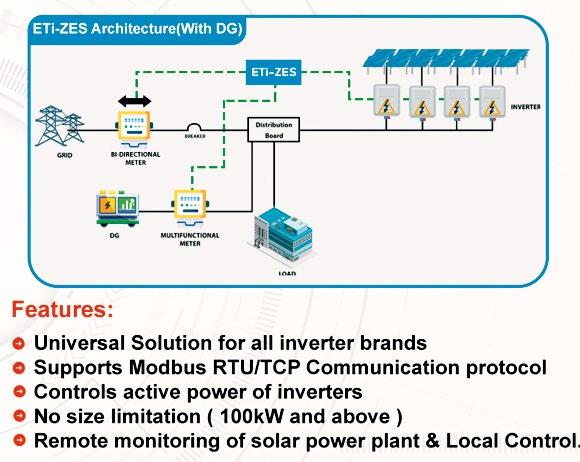
www.EQMagPro.com 33 EQ FEBRUARY 2024
WHY
EXISTING SOLUTIONS TO MANAGE ZERO FEED-IN ETI-ZES
FEATURED

FEATURED
PUNE APARTMENTS GO SOLAR WITH GROWATT’S RESIDENTIAL PV SOLUTION
Imagine the first gentle rays of morning sunshine greeting your rooftop, not just warming your heart but also carrying an invisible force. Growatt’s residential rooftop PV solution is that magical key that turns this force into the daily electricity powering your home.
India has unique solar conditions and great potential for solar energy generation with about 250 to 300 sunny days per year. But these potential are not fully realized in residential rooftop segment, thus, the Ministry of New and Renewable Energy (MNRE) introduced supportive policies for its development. According to the Council of Energy, due to the subsidies, the installation of residential rooftop projects in India will reach 32GW. The booming rooftop solar market in India plays an important role in advancing the country’s renewable energy goals.
As the global No.1 residential PV inverter supplier, Growatt has provided products and services to global families across 180 countries and regions. Last year, they successfully empowered many homes, businesses and communities in India. Growatt unveiled a 350kW rooftop PV project for a prominent apartment, Rohan Kritika, in Pune.
Rohan Kritika comes with best in state amenities, tranquil surroundings and best in class architectural design for a luxurious and divine feeling for the occupants. The apartment has a incorporated several sustainable practices, one among them being installation of solar rooftop system. It is expected to generate 500,000 kWh per year for over 60 homes seeking solar energy to fulfill their daily needs and minimize their electricity bills. Witnessing these advantages, the remaining households in the apartment are planning to switch to renewable power very soon.
The installation is done by 'Harshal Enterprises', a renowned solar trader and service provider in Pune. The residents have opted the best in class inverter brand for this project- 46 nos. Growatt’s MOD 5000TL3-X & MOD 6000TL3-X, 10 nos. MIC 3300TL-X, and 4 nos. Growatt 5000TL3-S residential inverters. Growatt residential products feature user-friendly, high yields, great reliability. The new products are lighter, smaller and easier to install and transport. In addition, Growatt developed touch key and OLED display for an easier control. For safety, all inverters are all equipped with Type II SPD, optional AFCI 2.0 function and transfomerless design.
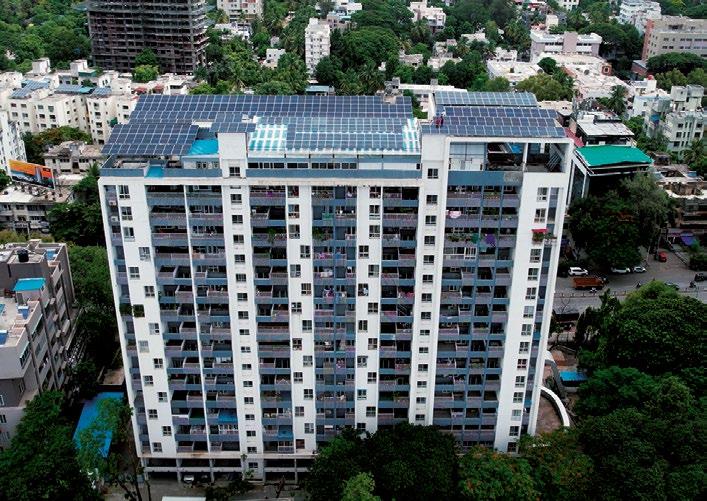
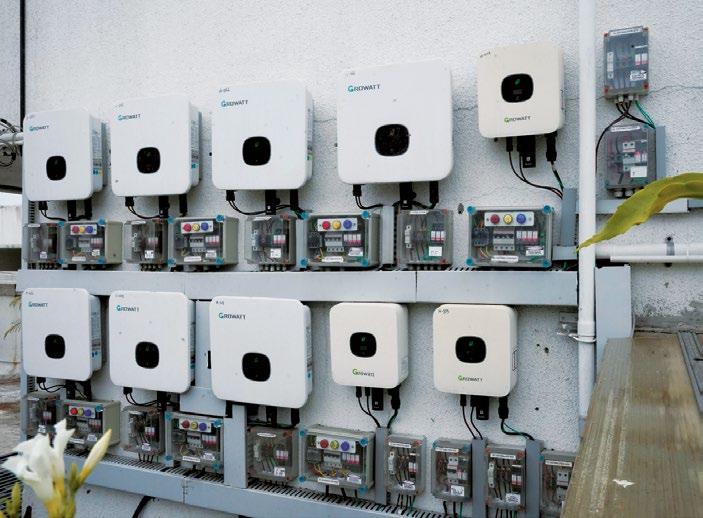
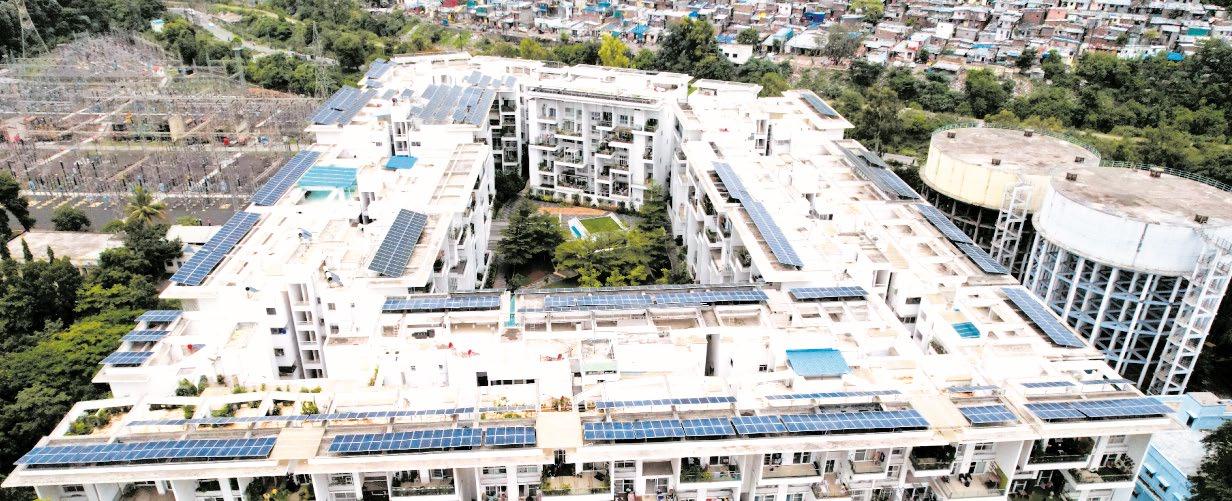
In recent years, facing with rapid economic growth and expanding population, India is eager to accelerate energy transformation at this stage. Reliable power supply is crucial to solve India’s power shortage and environmental problems. “We are committed to paving the way for more residents to embrace sustainability and enrich every aspect of life with clean power and vitality”, said Shantanu Sirsath, the India Technical Head of Growatt.

ONGC IN JOINT VENTURE AGREEMENT WITH NTPC GREEN FOR RENEWABLE ENERGY
ONGC and NTPC Green Energy Limited (NGEL) signed a Joint Venture Agreement (JVA) to develop renewable energy projects focusing on offshore wind. This was signed on 7 February 2024 during India Energy Week held at Goa. The JVA was signed in the presence of Hon’ble Minister of Petroleum and Natural Gas and Minister of Housing and Urban Affairs Hardeep Singh Puri.
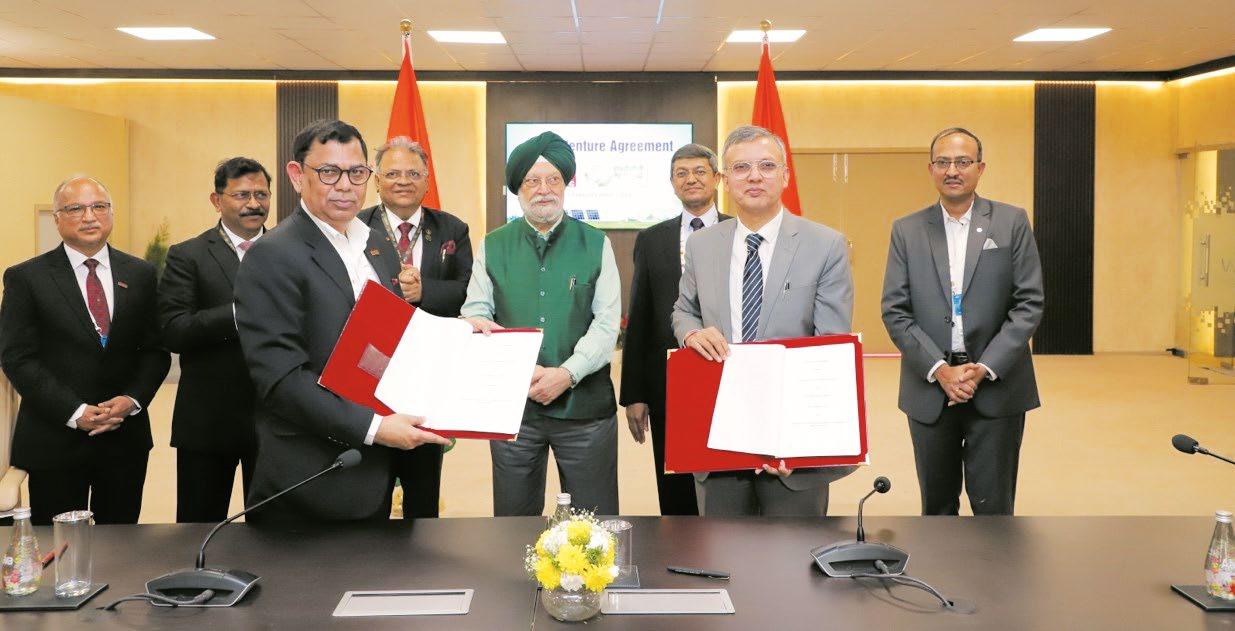
The
The JVA marks a pivotal collaboration aimed at spearheading Renewable Energy Projects both within India and on the international stage. Specifically, the agreement encompasses ventures in offshore wind projects while also delving into potential opportunities in Storage, E-mobility, Carbon Credits, Green Credits, Green Hydrogen business, and its derivatives such as Green Ammonia and Green Methanol.
ONGC had earlier inked a Memorandum of Understanding (MoU) with NGEL on 27 September 2023 to advance its renewable energy goals in alignment with the energy transition. The primary focus of the MoU was to assess feasibility and establish renewable energy projects across various sectors. This strategic partnership between NGEL and ONGC signifies a concerted effort towards advancing sustainable energy initiatives, aligning closely with the nation's ambitious goals for a greener future. By synergizing expertise and resources, both entities are poised to contribute significantly to India's renewable energy landscape, driving innovation and fostering environmental stewardship.

www.EQMagPro.com 35 EQ FEBRUARY 2024
Joint Venture agreement was signed between NGEL CEO Mohit Bhargava, and ONGC Executive Director Satish Kumar Dwivedi. The signing took place in the presence of ONGC Chairman and CEO Arun Kumar Singh, and NTPC Limited Chairman and Managing Director Gurdeep Singh in the presence of Minister Puri
FEATURED
FEATURED

MAHINDRA SUSTEN WINS A NEW 300 MW SOLAR PROJECT AT SJVN 1500 MW
SOLAR TENDER
In an exhilarating development for the renewable energy landscape, Mahindra Susten Private Limited (“Mahindra Susten”), a leading Independent Power Producer (IPP), is proud to announce successful acquisition of a landmark project, awarded through competitive bidding processfollowed by e-reverse auction conducted by SJVN Limited (“SJVN”), a Renewable Energy Implementing Agency (REIA) of Government of India.
This accomplishment not only highlights Mahindra Susten's relentless pursuit of excellence but also its robust commitment to fostering sustainable energy solutions.
Tender / Tranche : SJVN 1500 MW Solar
Project Capacity
Won by Susten : 300 MW
Tariff Quoted : 2.53
Off taker : SJVN Limited
As a testament to this groundbreaking project, SJVN is set to formalize a 25-year Power Purchase Agreement with Furies Solren, a Special Purpose Vehicle (SPV) of Mahindra Susten, with completion timeline of 24 months. This project is poised to significantly bolster our renewable energy portfolio, illustrating our dedication to delivering sustainable energy solutions with precision and efficiency. At Mahindra Susten, our journey towards a greener future is marked by developed portfolio with over 1.54 GWp of renewable Independent Power Producer (IPP) projects across the Indian. Our strategic involvement as a co-sponsor of the Sustainable Energy Infra Trust (SEIT), India's largest renewable Infrastructure Investment Trust (InvIT), further underscores our commitment to pioneering sustainable energy infrastructures, showcased by its successful listing on January 15th, 2023. The fiscal year 2024 heralds a significant era of strategic achievements for Mahindra Susten, marking the acquisition of our fourth reverse auction renewable project
win. This victory not only enhances our aggregated under development capacity to over 1.3 GWp but also solidifies our position as a key contributor to India's decarbonization efforts.

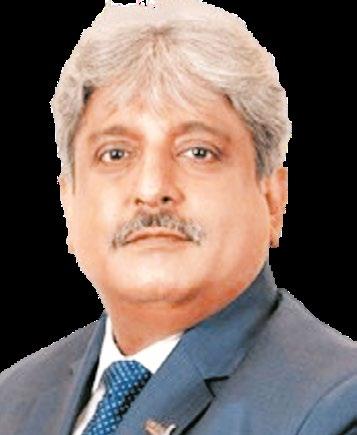
Deepak Thakur, MD & CEO of Mahindra Susten, said, "This is our fourth bid win this fiscal year, subsequent to our strategic alliance with Ontario Teachers' Pension Plan in December 2022, signifies a pivotal moment in our journey. Our judicious selection in tender participation, achieving a win rate of over 40%, exemplifies our strategic acumen in navigating the competitive landscape. Our unwavering dedication to growing our renewable portfolio by 5x in the coming years is stronger than ever. With a special focus on solar, hybrid, and integrated energy storage projects, we look forward to announcing further growth in the coming days”

36 EQ FEBRUARY 2024 www.EQMagPro.com

APRAAVA ENERGY STRENGTHENS ITS LOW- CARBON PORTFOLIO WITH A NEW TRANSMISSION PROJECT WIN IN MADHYA PRADESH
Apraava Energy, a leading integrated energy solutions provider, announced that it has secured a new greenfield interstate transmission project in Madhya Pradesh through the Government of India's Tariff-Based Competitive Bidding (TBCB) process. The project involves setting up of ~ 40 kms of 765 kV double-circuit transmission lines and a 3,000 MVA substation. This is Apraava’s third transmission project win within the last 12 months, reflecting an increased momentum in growing its low-carbon business.
As part of the Transmission Service Agreement (TSA), the project will be developed by Apraava under BOOT (build, own, operate and transfer) model. The completion timeline is set at 24 months from the date of Special Purpose Vehicle (SPV) transfer. The project will cater to the increasing demand of the state.

Commenting on the win, Mr. Naveen Munjal, Director –Business Development & Commercial, Apraava Energy, said, “We are happy to add yet another significant transmission project in Madhya Pradesh, further cementing our commitment to addressing the increasing power demands in the state. Given the impressive progress witnessed in Madhya Pradesh in recent years, the seamless transmission of power across all regions is paramount for sustaining and accelerating this growth. Apraava Energy remains dedicated to being a trusted partner in advancing India's green goals and ensuring power for all.”
Apraava Energy will be responsible for the ownership, financing, development, design, engineering, procurement, construction, commissioning, operation, and maintenance of the project, and to provide transmission services for a period of 35 years post Commercial Operation Date (COD). In 2023, Apraava Energy secured two greenfield interstate transmission projects in Rajasthan, involving ~ 250 kms of 400 kV double circuit transmission lines and a pooling substation of 2500 MVA to be built as part of the Rajasthan REZ, phase-III, Transmission scheme that will enable evacuation of 20GW of renewable energy in the state of Rajasthan.
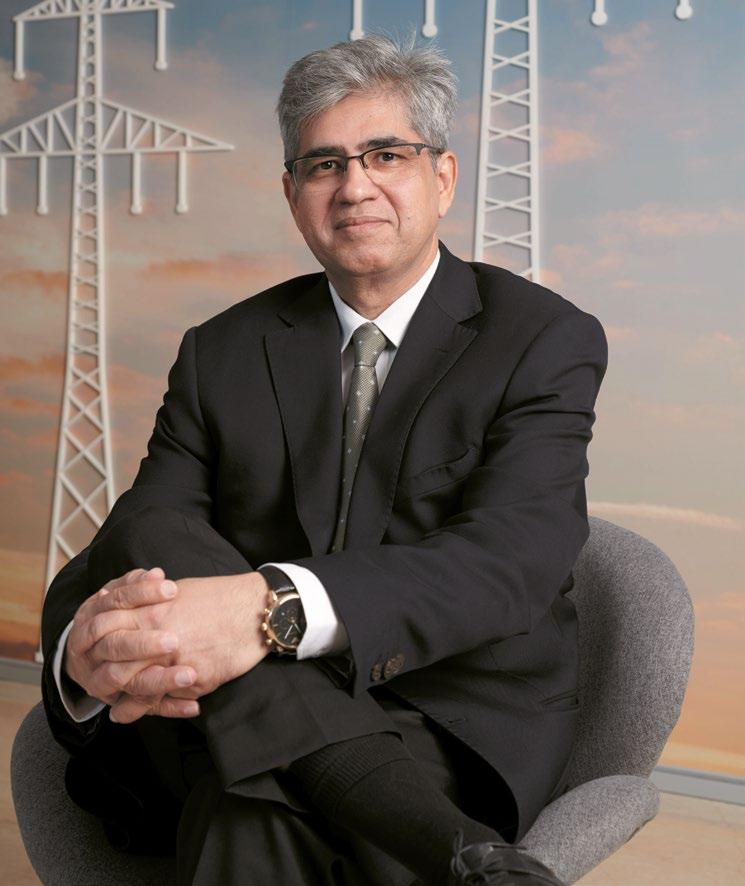

www.EQMagPro.com 37 EQ FEBRUARY 2024
FEATURED
€110 MILLION FUND FOR THE DIGITALISATION OF THE ENERGY TRANSITION ESTABLISHED
E.ON, the European Investment Fund (EIF) and Future Energy Ventures (FEV) jointly foster smart innovations for the energy transition with the help of a newly established fund. The fund managed by FEV already has a volume of €110 million and a target size of €250 million. Both E.ON and the EIF are holding a mid double-digit million euro stake as anchor investors. The fund invests primarily in start-ups and scale-ups that develop and implement digital solutions to drive the energy transition.

The capital of the fund is allocated entirely towards sustainable investments across three core investment themes with clear decarbonization potential: future energy, future cities, and future technologies. With an average initial ticket size of between €1-10 million for early-stage investments, it aims to target thirty new investments located in the innovation hubs of Europe, North America, and the Middle East. Future investors benefit from the partners' expertise in the energy sector.

“The clean energy economy is the greatest business opportunity of our generation, and we are excited to be raising our second fund at this pivotal moment. With FEV’s track record of portfolio successes, an ex tensive network of industry partners, our highly collaborative approach and deep sector focus, we are in a unique position to drive the digitization and decarbonization of the energy system. We are grateful to our investors and look forward to continuing discussions with potential institutional and strategic investors that share our vision.” said Jan Lozek, Founder and Managing Partner of FEV.



Marjut Falkstedt, EIF Chief Executive says: “Better managing our energy needs is one of the most important challenges of our time. That’s why we are excited about our participation in the newly established fund. This investment aligns perfectly with the EIF’s strategic objectives and our commitment to driving the energy transition and supporting decarbonization efforts across Europe.”

Thomas Birr, Chief Strategy and In novation Officer at E.ON, says: “This is a milestone for E.ON on our way to making the new world of energy work. Having access to ClimateTech and the resulting digital solutions is a central cornerstone of our innovation initiatives through which we continuously integrate new technologies and startup solutions into the E.ON business. The newly established fund which is open for external investors builds on our success of the existing venture portfolio and is the next important step for E.ON to broaden impact through collaboration.”

With this newly established fund, E.ON can further expand its many years of expertise in the field of innovation and, through a stable innovation ecosystem, bring new partners on board, who jointly have the confidence to invest in the energy transition. Today, FEV already runs one of the biggest global funds investing in Climate-Tech investing primarily in start and scale-ups that develop and implement digital solutions to drive the energy transition. The fund is expected to hold its final closing in the fourth quarter of 2024.
38 EQ FEBRUARY 2024 www.EQMagPro.com
FEATURED
FEATURED

HON’BLE PRIME MINISTER SHRI NARENDRA MODI TO LAUNCH POWER PROJECTS WORTH RS 28,978 CRORE
Hon’ble Prime Minister Shri Narendra Modi will dedicate to the Nation NTPC Darlipali Super Thermal Power Station (2x800 MW), NSPCL Rourkela PP-II Expansion Project (1x250 MW) and lay the foundation stone of NTPC Talcher Thermal Power Project, Stage-III (2x660 MW) with a total investment of Rs 28,978 Crore during a programme at Sambalpur on 3rd February, 2024.
Located in Sundargarh district of Odisha, Darlipali STPP is a pit-head Power Station with Supercritical (highly efficient) Technology, and is supplying low-cost power to its beneficiary states, such as Odisha, Bihar, West Bengal, Jharkhand, Gujarat and Sikkim. The 250 MW project of NTPCSAIL Power Company Ltd is established in Rourkela Steel Plant (RSP) to provide reliable power for the steel plant which is vital for economic growth. Further, NTPC is developing Talcher Thermal Power Project, Stage-III within old TTPS plant premises in Angul district of Odisha, which was taken over by NTPC from Odisha State Electricity Board in the year 1995. The old TTPS plant was decommissioned after completing more than 50 years of service to the Nation. The upcoming plant will have highly efficient Ultra Super Critical Technology based units and approxi-
capacity from this project is dedicated to the state of Odisha, other beneficiary states such as Tamil Nadu, Gujarat and Assam will also get low-cost power from this pit-head station. This project is being constructed with all modern environmental features like efficient electrostatic precipitator, Flue gas desulphurization, bio-mass cofiring, covered storage space for coal and will thus help in lesser Specific Coal Consumption and CO2 emissions.
Besides creating direct and indirect employment opportunities in the region, these projects have contributed to improvement of physical infrastructure such as approach road, drainage, transportation and communication facilities. Various community development initiatives are also being undertaken by NTPC in the surrounding villages in the area of education, drinking water, sanitation, health, women empowerment, rural sports, etc. NTPC has also set up a Medical College cum Hospital in Sundargarh, Odisha.

www.EQMagPro.com 39 EQ FEBRUARY 2024
FEATURED
GINLONG (SOLIS) EARNS HIGH RANKING IN 2023 INVERTER BANKABILITY SURVEY
In a significant development for the global solar industry, Ginlong (Solis) proudly announces its notable position in the 2023 BloombergNEF (BNEF) Inverter Bankability Survey. The survey, engaging diverse industry stakeholders such as banks, solar engineering contractors, and technical advisers, sheds light on the solar inverter bankability landscape.
Ginlong (Solis) stands recognized for its bankability, a testament to its commitment to quality and adaptability in a rapidly evolving solar market. In the solar industry, bankability influences investment decisions and financial institutions' support for projects employing specific inverter brands. The acknowledgment in the survey reflects growing confidence in the Ginlong (Solis) brand among global solar industry players. This recognition gains prominence in a landscape where preferences for local service and support are crucial. Ginlong (Solis)’s technology is meticulously optimized for local markets, ensuring a significant long-term return on investment and expediting the transition to a more sustainable future. The cutting-edge technology is supported by an exceptional technical service and support offering. Solis prides itself on after-sales service, with offices and service centres worldwide, including expert technicians across Europe, providing a seamless experience for users who prefer communication in their local language – whether online or over the phone. A notable example of Solis technology in action is the positive impact at a leading rehabilitation center (Rehabiliteringssenteret AiR) in Norway. Solis 80 kW inverters, equipped with intelligent monitoring,
have facilitated sustainable energy usage at the facility. Through stable, clean power, the centre aims to achieve two-thirds energy self-sufficiency. The project exemplifies a commitment to collaboration between industry partners, and customers, to foster a more sustainable future.


“We recently hit our 18th-anniversary at Solis,” commented Lucy Lu, Deputy General Manager at Ginlong (Solis). “Throughout these years, our unwavering mission has been to 'Developing technology to power the world with clean energy.' In our pursuit of this goal, we have consistently pushed the boundaries of innovation, earning notable accolades such as this recent bankability ranking. This announcement underscores the tireless efforts of our robust team of over 4,500 individuals and 800+ R&D innovators strategically positioned worldwide. We are more motivated than ever to propel advancements that will play a pivotal role in shaping the future of clean energy.”
Notably, Ginlong (Solis) has been designated a Tier 1 inverter manufacturer by BloombergNEF, further solidifying its global standing. This achievement underscores the brand's manufacturing excellence and commitment to advancing the renewable energy sector.
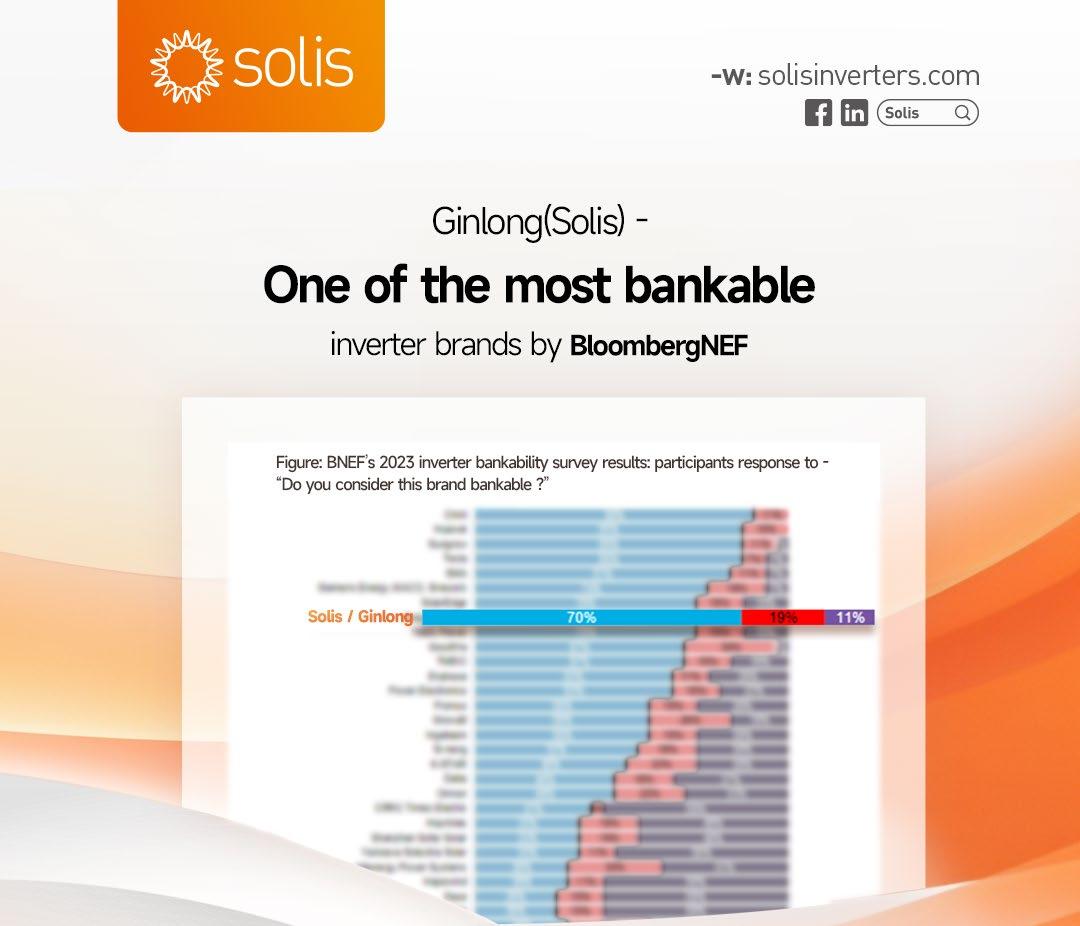
40 EQ FEBRUARY 2024 www.EQMagPro.com
POWER AND NEW & RENEWABLE ENERGY MINISTER MEETS
INDUSTRY, DISCUSSES PATHWAYS TO ACCELERATE USE OF GREEN HYDROGEN IN IRON AND STEEL SECTOR
If need arises, additional funds under National Green Hydrogen Mission can be allocated for decarbonization of the iron and steel sector: Union Power and NRE Minister R. K. Singh
The Union Minister for Power and New and Renewable Energy Shri R. K. Singh chaired a meeting of government and industry stakeholders of the iron and steel sector in New Delhi, in order to discuss the pilot projects under the National Green Hydrogen Mission in the sector. Officials of Ministry of New & Renewable Energy, Ministry of Steel and industry representatives from the Iron & Steel sector participated in the deliberations.
Addressing the officers and the industry, the Union Minister underlined the Government’s thrust on energy transition and how this is important for the iron and steel sector as well. He stressed that use of Green Hydrogen in Steel making process can help the decarbonization of the sector. “Our idea is to help you to transition. If we use green hydrogen, then carbon content becomes low; so, we need to think of ways and means of doing that.” The Minister added that in the wake of trade barriers being put up by developed countries, energy transition is
important for competitiveness of the sector as well.
The Union Power and New & Renewable Energy Minster informed that the funds available under the Mission should be used to develop technology for integration of Hydrogen in the Steel making process. “Some manufacturers have already begun to experiment using green hydrogen in steel sector. The idea of this meeting is to decide the avenues in which the funds can be channelled to accelerate this transition, through a transparent selection process which also addresses the technology gaps which need to be addressed.”
The industry representatives shared their concerns regarding the challenges faced for conducting trials. The possibility of executing projects by a consortium was also discussed. The Minister directed that all efforts should be made to zero in on the right technology and pathways for decarbonization of the steel sector. If need arises, additional funds can be allocated, besides the Rs. 455 Crores already allocated for the steel sector under the National Green Hydrogen Mission, said the Minister.
GREEN HORIZONS: SOLIS INDIA’S 4GW EXPEDITION IN DRIVING SOLAR TRANSFORMATION
In 2015, Solis India embarked on a transformative journey within the Indian solar power sector, emerging as a Tier 1 global inverter brand by BNEF. Today, the company proudly announces the achievement of a significant milestone – 4GW in shipments since its inception. This remarkable feat not only underscores Solis’ commitment to sustainable energy but also highlights the reliability and technological leadership of its products.
At the core of Solis India’s success is a dedication to continuous innovation and an expansive product portfolio catering to diverse needs, from residential to utility segments. The company’s ability to adapt and evolve with the dynamic solar market has been a key driver in its ascent to prominence. Solis has been a proactive force, introducing cutting-edge technologies and expanding its product offerings to meet the evolving demands of the market. The reliability and technological leadership of Solis products have played a pivotal role in achieving the 4GW milestone. The company’s commitment to quality and reliability is evident in the Bloomberg Tier 1 accreditation, emphasizing its position as a trusted and preferred choice in the Indian solar power landscape. Additionally, being ranked as No. 1 in Rooftop in India by Bridge To India, a Crisil Company, further solidifies Solis’ commitment to excellence.
Behind this success story stands Mr. Yiming Wang, the visionary Chairman whose leadership and guidance have been instrumental in steering Solis towards prosperity over the last 18 years. His forward-thinking approach and strategic vision have positioned Solis as a market leader, setting industry benchmarks and fostering a culture of excellence within the organization. A significant factor contributing to Solis India’s success is the local service infrastructure. Solis offers hassle-free support from local technicians, both over the phone and online,
ensuring a seamless experience for installers, electricians, and end-users. Moreover, Solis provides a clear and easy-to-follow after-sales support process, with a commitment to achieving service excellence. Additionally, installers benefit from direct replacements for any failing inverters through trusted partners. Solis’ inverters, built for reliability and easy installation, feature multiple MPPT connections for diverse roof conditions. The setup is effortless through SolisCloud, using Bluetooth or an internet connection, and hybrid models seamlessly integrate with various battery brands, complete with a Smart Meter. Looking ahead, Solis India plans to further enhance its service infrastructure by opening a service warehouse in the East part of the country. This strategic expansion aligns with the company’s commitment to providing timely and reliable service to its customers.
Solis’ journey is marked by a commitment to sustainability, innovation, and customer satisfaction. The 4GW shipment milestone, achieved through reliability, technological leadership, and robust local service, represents the tangible impact Solis has made in reducing carbon footprints and promoting a cleaner, greener future for India. With Mr. Yiming Wang at the helm, the company is poised for even greater heights, leveraging its strong foundation, innovative spirit, and the trust of its customers to continue leading the way in sustainable energy solutions. Solis’ successful journey is a testament to the power of vision, perseverance, and a genuine commitment to making a difference in the world of renewable energy.
www.EQMagPro.com 41 EQ FEBRUARY 2024
FEATURED
FEATURED
ALMM TO KEEP MARGINS OF SOLAR MODULE MAKERS AT 12-14 PER CENT NEXT FISCAL: CRISIL
CRISIL suggests that the Approved List of Module Manufacturers (ALMM) policy in India is expected to maintain margins for solar module makers at 12-14% in the next fiscal year. This policy is likely to play a crucial role in shaping the financial landscape for solar module manufacturers in the renewable energy sector.
This fiscal, profitability is expected to almost double over the previous fiscal as rising share of exports, which fetch a 15-20 per cent premium over domestic prices, will more than offset the surge in imports in the absence of ALMM.
The implementation of the Approved List of Models and Manufacturers (ALMM) from April 1, 2024, is expected to help keep operating margins of domestic module makers strong at 12-14 per cent in fiscal 2025, in line with the level likely this fiscal, said a report by CRISIL Ratings. This will be mostly driven by healthy domestic and export demand, the report added. This fiscal, profitability is expected to almost double over the previous fiscal as rising share of exports, which fetch a 15-20 per cent premium over domestic prices, will more than offset the surge in imports in the absence of ALMM.


“Indian module manufacturers are facing an onslaught of cheaper imports because of the temporary suspension of ALMM till April 1, 2024. However, the trade restrictions on China — mainly by the US — are boosting overseas demand for Indian modules. In fact, India’s module exports are seen tripling to 8-9 GW this fiscal. Markets abroad will stay good for Indian manufacturers next fiscal, too, as the US will continue to face a supply deficit due to its increasing demand and continuing restrictions on Chinese supply,” said Ankit Hakhu, Director, CRISIL Ratings.
Also, with ALMM coming back, domestic demand for Indian modules will become stronger.



Ankush Tyagi, Associate Director, CRISIL Ratings, said, “The return of ALMM in fiscal 2025 should curb the competition from imports. As a result, we expect domestic module prices to firm up after having fallen by more than 50 per cent this fiscal. Moreover, demand growth will increase utilisation rates, as 70-75 per cent of domestic demand (2628 GW) will be met by Indian module producers next fiscal, up from 30-35 per cent this fiscal. These factors will help offset the pressure on profitability due to the decline in the share of exports for domestic module manufacturers (to 35-40 per cent in fiscal 2025 from 50 per cent in fiscal 2024).”
Higher sales volumes (both domestic and exports) and healthy margins will lead to robust accruals for module makers rated by CRISIL Ratings in the current and next fiscals. This will support capital expenditure for capacity expansion and technology upgrade and sustain healthy credit profiles. That said, CRISIL said, any further extension in the ALMM implementation would be a risk to the estimates. Also, any change in the US policy towards imports from China, will remain monitorable.
ADANI ENERGY SOLUTIONS APPOINTS KUNJAL MEHTA AS CFO
Adani Energy Solutions has appointed Kunjal Mehta as Chief Financial Officer (CFO). This strategic leadership appointment reflects the company’s focus on strengthening its financial management and underscores Adani’s commitment to developing its energy solutions sector.
The official change will take place on March 31, 2024, when Rohit Soni will resign from his position as CFO. Kunjal Mehta has been appointed as Adani Energy Solutions Ltd.’s Chief Financial Officer (CFO), with effect from April 1, 2024. This choice comes after the resignation of the existing CFO, Rohit Soni, who will assume the position at Adani New Industries Ltd. (ANIL), Adani Enterprises’ green hydrogen subsidiary. The official change will take place on March 31, 2024, when Rohit Soni will resign from his position as CFO. Kunjal Mehta will take on the CFO position and be accountable for the company’s financial leadership at the same time. Mehta presents significant financial experience to her post as CFO at Adani Electricity Mumbai Ltd., the distribution division of Adani Energy Solutions.
The board of the firm has accepted Kunjal Mehta’s appointment as the new CFO-designate. This calculated action is a compo nent of a larger Adani portfolio company leadership capabil ity building programme. The programme’s objectives are to increase worker engagement, develop improved people skills, and create a capable and dedi cated leadership pipeline in an inclusive, equitable, and courteous work environment

42 EQ FEBRUARY 2024 www.EQMagPro.com
NEW SCHEME FOR SOLAR ROOFTOPS
The government has introduced a new scheme to promote solar rooftops, offering subsidies and incentives to encourage their adoption. This initiative aims to boost the use of solar energy in residential and commercial spaces, contributing to the country’s clean energy goals and reducing dependence on conventional power sources.
Solar rooftops have problems like cost and maintenance but PMSY deserves a fair shot.Recently, the government announced the Pradhan Mantri Sarvoday Yojana (PMSY), a scheme specially designed to give a boost to rooftop solar systems for poor and middle-income households. The scheme will provide a solar rooftop system to one crore households that will provide 300 units of electricity per month free of charge. Strangely, this scheme makes no mention of the capacity that is being targeted. However, going by thumb-rule, if one were to provide 300 units of electricity per month, one would need a capacity of a little under 3 kilowatts (kw) and if one crore such systems are to be installed, the total capacity would be 30 gigawatts (GW). Of the target of grid-connected 175 GW of renewables by 2022, the share of the solar sector was 100 GW, which included a solar rooftop capacity of 40 GW. Out of this, we have only about 11 GW in place. Moreover, most of the solar rooftops are in the commercial and industrial sectors and the share of the residential sector is only around 21%. If we talk about potential capacity (technical) of solar rooftops in the country, a think-tank in Delhi (CEEW) has estimated it to be about 637 GW covering about 25 crore households. Of course, all such estimates have a lot of accompanying assumptions and are not really cast in stone, but is definitely indicative and it shows that as of today, we have installed less than 2% of our potential.
There are several reasons as to why we have not been able to meet our targets. First, information dissemination amongst households, especially lower-income households, is poor. The general feeling is that solar rooftops are an expensive proposition (which is true) with too many uncertainties and are difficult to maintain and operate. It is also plagued by poor after-sales service. Moreover, this sector has had too many ‘fly-by-night’ operators who cheated their clients. The second issue is that of finance. Getting banks to provide credit on easy terms has been difficult, especially on occasions where the consumers cannot provide collateral. In the case of other sectors where banks provide credit, the asset being built (including the land) can be hypothecated to the lender. In the case of solar rooftops, there is no resale value of the used components like the solar panels, inverters etc. The third problem is the distribution of subsidies. Subsidies are being provided by the central and some state governments. All such subsidies are routed through the distribution company (discom). For consumers, it has been harrowing to avail the same.
Another major impediment for solar rooftops which merits a separate mention is that of the metering being offered by the discom, net or gross. Under gross metering, a feed-in tariff is decided by the state and the consumer is paid at that rate for the units fed into the grid. The consumer is separately billed for the units that she has consumed at the normal retail tariff rate. For example, if the consumer has consumed 600 units from the grid and has generated 250 units and fed into the grid, she will be billed for the 600 units at the normal retail tariff rate and the discom will adjust for the
250 units that has been fed to the grid on the basis of the feed-in tariff. In contrast, under the net metering system, the discom will bill the consumer for only 350 units (600-250). Since tariff rates are telescopic, the consumer falls under a lower tariff schedule when she is billed for 350 units visa-vis 600 units. Moreover, the feed-in tariff is usually lower than the retail tariff and therefore, the consumers always prefer net metering. By the same logic, the discoms prefer gross metering and to strike a balance between the interests of the consumers and the discoms, the union government, in its Electricity (Rights of Consumers) Rules 2020, stipulated that rooftop solar systems below 10 kw will have net metering and anything above 10 kw will be gross metering.
Coming back to PMSY, the scheme will be implemented through renewable energy service companies (RESCOs). Under the RESCO model, all capital cost is borne by the RESCO (which also maintain the system) and the consumer pays a per unit cost decided through a contract, something akin to a power purchase agreement (PPA). Under PMSY, however, the consumer gets 300 units free of charge and the balance (ie. over and above 300 units) is fed into the grid. What is earned by feeding into the grid will be used to pay off the loan. There are nine central public sector units (CPSUs) who will act as RESCOs. After the payback period (which can range from 4-5 years), the asset will be transferred to the consumer, whose only responsibility was to provide rooftop space. This will no doubt get rid of the problem of finance, collateral etc. but the moot point is whether the nine CPSUs will be able to cater to one crore households despite having the option of setting up new special purpose vehicles (SPVs)/subsidiaries to do this job. The transactions cost involved will be enormous as it implies supervising one crore PPAs. Another related issue is whether the consumer, especially from the poorer lot, have the wherewithal to maintain the system after the asset transfer.
Finally, a grid-connected solar rooftop does not have a battery. So, the consumer will depend on the discom for power during non-solar hours. Consequently, the discom will not be able to alter its PPA with the generator and continue to pay for the fixed charge and simultaneously lose revenue, since many residential consumers would have switched to solar during the day hours. If PMSY turns out to be successful, it could worsen the financial health of the discom which, in turn, will adversely affect investor sentiments. This downturn may affect meeting our target of 500 GW of non-fossil fuel generation capacity by 2030, as practically all investments in the renewable sector is through private hands! Nevertheless, PMSY does address some of the lingering problems of rooftop solar and must be given a fair try.
www.EQMagPro.com 43 EQ FEBRUARY 2024 FEATURED
FEATURED
GOVT ALLOCATES RS 455 CRORE FOR GREEN HYDROGEN PILOT PROJECTS IN STEEL SECTOR
The government’s allocation of Rs 455 crore for green hydrogen pilot projects in the steel sector indicates a significant investment in promoting sustainable and low-carbon technologies. This funding aims to support the development and implementation of green hydrogen initiatives within the steel industry, aligning with India’s broader goals of reducing carbon emissions and fostering a cleaner energy landscape.
The Centre’s schemes for the power sector, including renewables, have received an allocation of at least Rs 28,352 crore in the Interim Budget 2024, up 50 percent from the revised estimate (RE) of Rs 18,945 crore in 2023-24, an analysis showed. While the National Green Hydrogen Mission (NGHM), Bio Energy initiative and hydroelectric projects were the top three gainers, schemes aimed at reforming the power distribution sector also received at least a 39 percent higher budgetary allocation.
Also read: Budget 2024 on Green Energy: Rooftop solar, offshore wind, coal gasification, biomass get boost.
Wind energy is the only sector that saw a downward revision in the budget, despite Union Finance Minister Nirmala Sitharaman announcing a viability gap funding (VGF) for offshore wind of up to 1 gigawatt (GW) capacity without specifying the amount. Senior officials in the Ministry of New and Renewable Energy (MNRE) said offshore wind is yet to take off in the country, which is why actual budgetary allocation will happen at a later stage. “Provisions can be made later in FY25 if required, but offshore wind is still at a nascent stage. Bids for the nonVGF seabed allocation have been called this month. The VGF bids are likely later in FY25,” said an official who did not want to be named. When seen separately, renewable energy schemes (under MNRE) were allocated Rs 12,491 crore, up 65 percent from Rs 7,586 crore in RE 2023-24. Power sector initiatives (under the Ministry of Power) got a 40 percent hike from Rs 11,359 crore to Rs 15,861 crore.
GREEN HYDROGEN
Much has happened in a year since the NGHM was approved by the Union Cabinet on January 4, 2023. Budgetary allocation for NGHM increased to Rs 600 crore from Rs 100 crore in the revised estimate for 2023-24. This is because the government not only intends to begin a few pilot projects, but is also inching closer to finalising the winners for its incentive schemes. Also read: Energy Budget: Power PSUs get 17% more budgetary allocation. Two modes of incentive schemes have been announced – 1. The lowest incentive bid demanded 2. Demand aggregation route. Under Mode 1, Reliance Industries, JSW Energy, Torrent Power and Bharat Petroleum Corp are among 14 companies that have made bids under India’s green hydrogen plan. Besides, 20 companies including Reliance Industries, the the Adani Group, Jindal India, Larsen & Toubro and Bharat Heavy Electricals have also submitted bids for incentives to manufacture electrolysers.
BIO ENERGY
MNRE is running the National Bioenergy Programme from April, 2021 to March 31, 2026. Funds for this increased 300 percent to Rs 300 crore from Rs 75 crore in RE 2023-24. Also read: Govt temporarily eases mandate on biomass pellet co-firing in thermal power plants. The programme has three sub-schemes: Waste to Energy Programme (scheme to generate energy from urban, industrial and agricultural); Biomass Programme (scheme to support manufacturing of briquettes & pellets used by thermal power plants for blending); Biogas Programme.
HYDROPOWER
Hydropower projects have received Rs 51 crore, up 155 percent from Rs 20 crore in RE 2023-24. The 2,000 MW Subansiri Lower project, under construction in Arunachal Pradesh and Assam, is likely to be fully commissioned by December 2024. Besides, two units of the delayed Parbati-II project in Himachal Pradesh will start operations between April and June.
Also read: MC Exclusive | RK Singh vows to double India’s hydropower capacity.
The budgetary allocation for schemes to promote solar energy touched Rs 8,644 crore, up 75 percent from Rs 4,941 crore in RE 2023-24. This is excluding the Pradhan Mantri Kisan Urja Suraksha Evam Utthaan Mahabhiyan Yojana (PM-KUSUM), aimed at solarisation of the agriculture sector. The PM-KUSUM scheme also got an enhanced allocation of Rs 1,496 crore, up 36 percent from Rs 1,100 crore.


Miren Lodha, Director- Research, CRISIL Market Intelligence & Analytics said the domestic rooftop solarisation project announced by the FM in her Budget speech on February 1 could translate into capacity additions of 20-22 GW in the residential rooftop segment. “It could result in investments of Rs 91,000-1,10,000 crore. Through this, the overall solar rooftop base is expected to reach 31-33 GW from 11 GW as of December 2023,” Lodha said.
Pradhan Mantri Suryoday Yojna – Houses consuming up to 300 units to get rooftop solar free.
In her Budget speech, the FM said solar installations in such households will result in savings of about 300 units of electricity per month. “On an annual basis, the scheme could result in savings of Rs 15,000-18,000 for households that install rooftop solar systems,” she said.
SOLAR ENERGY REVAMPED DISTRIBUTION SECTOR SCHEME (RDSS)
The Centre’s Revamped Distribution Sector Scheme (RDSS), aimed to cover more households with prepaid smart meters and reduce the aggregate technical and commercial (AT&C) losses of the country, got a 39 percent boost from Rs 10,400 crore to Rs 14,500 crore in the Interim Budget. Also read: Power discoms’ average AT& C losses have reduced to 13.5% in FY23: Power Secretary. RDSS is meant to be a facilitator to improve the operational efficiencies of discoms and help reduce their losses and make them financially sustainable. The scheme aims to reduce technical and commercial losses pan-India to levels of 12-15 percent by 2024-25 and cut the cost-revenue gap to zero by 202425.
44 EQ FEBRUARY 2024 www.EQMagPro.com


Vikram V, Vice President, Co-Group Head – Corporate Ratings, ICRA Limited, said the increased allocation to the distribution sector will help the discoms augment their infrastructure and improve operating efficiencies. Also, the increase in allocation to the RDSS scheme would aid in scaling up smart meter installations, he said.
GREEN ENERGY CORRIDORS
Green energy corridors or laying transmission lines for the evacuation of renewable energy saw a 38 percent growth, from Rs 434 crore in 2023-24 (RE) to Rs 600 crore in the Interim Budget 2024. This is significant because India aims to achieve 50 percent cumulative installed power generation capacity from non-fossil fuel sources by 2030.
Also read: Exclusive: PowerGrid can start work on Leh-Kaithal Green Energy Corridor only by 2026
For this, the country needs to add about 50 GW per annum of renewable energy capacity for the next five years, starting in 2024. So far, India has been able to add only about 15 GW each year. Green Energy Corridors are now needed to transmit the green energy produced at renewable energy parks to other parts of the country to meet India’s burgeoning power demand.
FIRST SHIPMENT TO INDIA! HUASUN DELIVERS 10MW 700W+ HIGHEFFICIENCY HETEROJUNCTION MODULES
Huasun Energy has made a groundbreaking move in the Indian solar market with the delivery of its first shipment of high-efficiency heterojunction (HJT) modules. On February 5th, just prior to the Chinese Lunar New Year, Huasun successfully shipped over 10MW of its revolutionary 700W+ HJT modules to India for the very first time.
Himalaya G12-132, a standout product from Huasun's HJT module family, is the centerpiece of this shipment. Notably, Himalaya G12-132 was certified by TÜV SÜD with its highest power output of 750.54W and conversion efficiency of 24.16%. The successful shipment of the 700W+ modules highlights Huasun’s robust manufacturing capabilities and underscores the significant advantages of HJT technology.
India boasts abundant solar resources and a rapidly developing solar industry, it has become one of the most promising photovoltaic markets worldwide. In January, Huasun’s independently developed and produced Himalaya G12 series, including the 132 and 120 models, received certification from the Bureau of Indian Standards (BIS). These modules, meeting the standards such as IS 14286, IS/IEC 61730-I, IS/IEC 61730-II, are qualified for local participation in tenders and other large projects in India. BIS certification reflects Huasun’s outstanding abilities in product R&D, quality management and sustainability, laying a solid foundation for long-term expansion in the Indian market.
As a leading global supplier of HJT module products, Huasun is dedicated to becoming a world-leading high-efficiency solar technology company. With advanced manufacturing and excellent power generation performance, Huasun's high-efficiency HJT modules are poised to cater to the growing Indian PV market. Through continuous certification and shipments, Huasun aims to drive local sustainable development by providing greener and cleaner energy solutions.


www.EQMagPro.com 45 EQ FEBRUARY 2024
FEATURED
FEATURED NXTRA TO PROCURE 140,208 MWH RENEWABLE ENERGY FOR ITS DATA CENTRES
Commits to reduce its carbon footprint annually by ~ 99,547 tCO2e
Nxtra by Airtel, one of India’s leading data centre companies, today, announced a power-wheeling agreement with Ampln and Amplus Energy to procure an additional 140,208 MWh of renewable energy. With this, Nxtra has enhanced its existing commitment of reducing its carbon footprint through renewable energy sources annually by ~ 99,547 tCO2e.
As per the agreement, AmpIn Energy and Amplus Energy will set up captive solar and wind power plants of 48 MWdc and 24.3 MW, respectively for Nxtra’s data centres in Tamil Nadu, Uttar Pradesh and Odisha. The 25-year agreements are in line with Nxtra’s commitment to achieving its net-zero target of 2031 and further strengthen its credentials as India’s largest chain of green data centres in the country. This is in addition to Nxtra’s multiple other interventions to reduce absolute scope 1 and 2 greenhouse gas (GHG) emissions across its operations by 100% by FY2031. As part of these interventions, Nxtra has accelerated the adoption of green energy across all its operations, put in place energy efficient infrastructure and processes and implemented sustainable business practices at its workplaces.


Ashish Arora, CEO — Nxtra by Airtel, said, “These new partnerships reflect our commitment to lead India’s green data centre space and fulfill our commitment to achieve Net Zero emission by 2031. The additional clean energy supply will increase our renewable energy share to approximately 70% in the overall energy mix for our core data centers. As we work towards building more capacity in coming years and gear up for Generative AI powered loads, we are fully cognizant of our responsibility towards environment and are prepared to mitigate the impact on climate”.
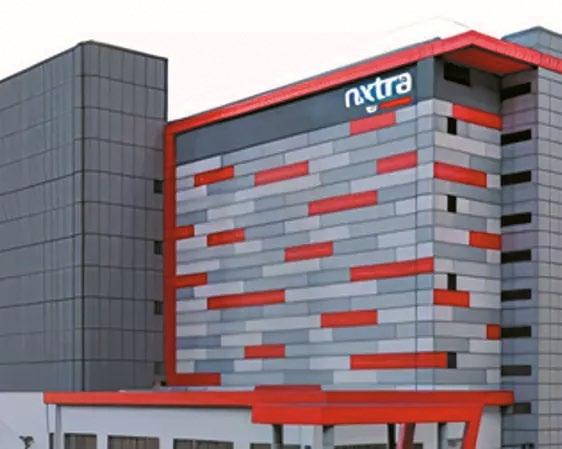
The details of the agreement are as under:
• Power plant in Tamil Nadu in partnership with Amplus Energy - 24.3 MW Wind + 28 MWdc Solar | 109,798 MWh | ~77,957 tCO2e annual carbon reduction.
• Power plant in Uttar Pradesh in partnership with AmpIn Energy Transition – 12 MWdc Solar | 17,880 MWh | ~12,694 tCO2e annual carbon reduction.
• Power plant in Odisha in partnership with AmpIn Energy Transition – 08 MWdc Solar | 12,530 MWh | 8,896 tCO2e annual carbon reduction.
Nxtra by Airtel has the largest network of data centres in India with 12 large and 120 edge data centres across the country. It will invest over Rs 5000 crores over the next few years to build six new hyperscale data centres across key metro cities in India and expand its capacity by 2X to over 400 MW.

46 EQ FEBRUARY 2024 www.EQMagPro.com
1.2GW! HUASUN’S EVEREST G12R RECTANGULAR CELLS SECURE INDUSTRY'S FIRST GIGAWATT-LEVEL ORDER
Anhui Huasun Energy Co., Ltd. (Huasun) has recently announced a landmark cooperation agreement with a globally renowned clean energy solutions provider. Under the terms of this agreement, Huasun is set to supply 1.2GW of its G12R rectangular heterojunction (HJT) cells. Furthermore, both parties will engage in comprehensive collaboration across various domains including HJT product technology R&D and new energy project development. This partnership aims to foster the market adoption of HJT technology and drive the photovoltaic industry's high-quality advancement. Notably, this contract represents the industry's inaugural GW-level order for rectangular HJT cells.
As a pioneer who provides the world’s first rectangular HJT cells and modules, Huasun continues to spearhead advancements in the HJT solar sector. The company is dedicated to heeding the industry's call for standardization in dimensions and propelling HJT production into the "rectangular" era
As a key innovation from Huasun, the Everest G12R rectangular HJT cell amalgamates several cutting-edge technologies on a rectangular half-cell silicon wafer measuring 182mm*105mm. These include the mature HJT3.0 bifacial microcrystalline mass production technology, and advanced silver-coated copper and SMBB processes. This integration significantly enhances photoelectric conversion efficiency, with mass production averages exceeding 25.5%. With its substantial production capabilities, Huasun is well-equipped to support its clients in expanding their rectangular HJT module production capacities and diversifying their HJT product offerings.
Yang Zongyuan, General Manager of Huasun's Sales Division in China, emphasized the critical role of product excellence in navigating market competition. Huasun's leadership in HJT technology is evidenced by its impressive track record of over 3GW in cumulative shipments in 2023 alone. This achieve-
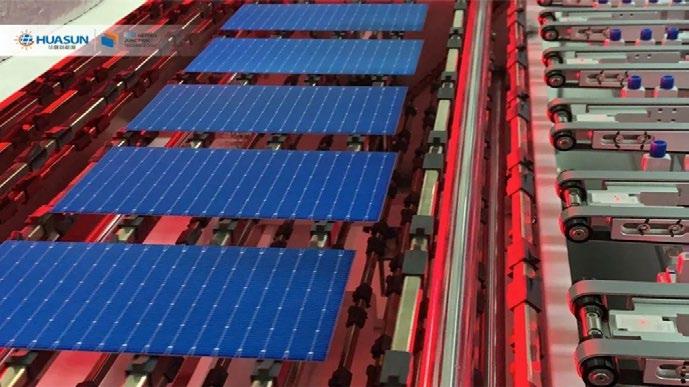
ment has solidified the foundation for the HJT solar industry's growth. Huasun's history of successful collaborations and shipments with key centrally-administered State-owned enterprises (SOEs), achieving GW-level project contracts, is a testament to its industry prominence. In 2024, Huasun commits to continuing its delivery of superior products, ensuring stable and reliable supply, and upholding high-quality service standards to contribute towards China’s "dual carbon" goal of peaking carbon dioxide emissions by 2030 and achieving carbon neutrality by 2060.
CSIR IS IMPLEMENTING MISSION MODE PROJECT FOR DEVELOPING INDIGENOUS ELECTROLYZERS; DST IS SUPPORTING HYDROGEN AND FUEL CELL PROGRAM: UNION POWER AND NEW & RENEWABLE ENERGY MINISTER
The Union Power and New & Renewable Energy Minister highlights that CSIR (Council of Scientific and Industrial Research) is implementing a Mission Mode project for developing indigenous electrolyzers. Furthermore, the Department of Science and Technology (DST) is supporting the Hydrogen and Fuel Cell Program. This suggests a concerted effort to advance indigenous technology and research in the field of electrolyzers and hydrogen fuel cells.
The Union Minister for New & Renewable Energy and Power has informed about the steps taken by the Government to provide guidance for developing a vibrant research and development ecosystem which can help commercialization of Green Hydrogen.
The Ministry of New and Renewable Energy is implementing the National Green Hydrogen Mission, launched by the Government in January 2023. The overarching objective of the Mission is to make India the Global Hub for production, usage and export of Green Hydrogen and its derivatives. The following components have been announced as part of the Mission: Pilot Projects for steel, mobility, shipping, decentralized energy applications, hydrogen production from biomass, hydrogen storage, etc. with an outlay of Rs. 1,466 crores;
Research & Development programme including through a public-private partnership framework for R&D with an outlay of Rs. 400 crores. The Research and Development roadmap for the Mission has been released on 7th October 2023, which outlines the important research areas in this field. Council of Scientific & Industrial Research (CSIR) is implementing a Mission Mode Project, with an outlay of Rs. 75 crores, to develop different types of indigenous electrolysers, namely Anion Exchange Membrane (AEM) electrolyser, Proton Exchange Membrane (PEM) electrolyser, and Solid Oxide Electrolyser (SOE) electrolysers; Fuel Cells and Hydrogen Storage Cylinders. The emphasis is on making the electrolysers and fuel cells with efficiency comparable to global benchmarks. Department of Science & Technology (DST) has supported the Hydrogen and Fuel Cell program with an objective to promote and support activities related to the indigenous development of materials, catalysts, membrane, components for fuel cells, electrolyzers, hydrogen storage materials, materials for type IV cylinders and prototypes for implementation of various applications of hydrogen and fuel cell in the country. This information has been given by the Union Minister for New & Renewable Energy and Power Shri R. K. Singh, in a written reply to a question, in Lok Sabha.
www.EQMagPro.com 47 EQ FEBRUARY 2024
FEATURED
OPINION
US SOLAR BOOM OPENS $2 BILLION INDIAN DOOR TO BANNED PRODUCTS FROM CHINA
The flourishing solar industry in the United States is creating a substantial opportunity for India, opening up a potential $2 billion market for solar equipment, including products banned in the U.S. due to concerns about forced labor in China. This development highlights the interconnected global dynamics of the solar supply chain and the implications for trade relationships amid sustainability and ethical considerations.
US efforts to promote the expansion of India’s solar industry may have opened a back door to components made with forced labour in China.
India’s largest solar producer, Waaree Energies Ltd., has sent millions of panels to the US with components from a Chinese company whose products were repeatedly denied entry to the US market over concerns about forced labour, a Bloomberg News examination of Indian and US import records shows. Those components, solar cells produced by China’s Longi Green Energy Technology Co. at plants in Malaysia and Vietnam, are used in Waaree panels blanketing solar farms in Texas and other states.
Imports of Waaree panels raise questions about how US Customs and Border Protection officials are enforcing a ban on products tied to the repression of Uyghur people in China’s Xinjiang region. The agency has detained thousands of shipments of solar panels made by Chinese-owned companies since it began enforcing the ban in June 2022 — interventions that companies can overturn by providing evidence their supply chains don’t involve Xinjiang sources.
That focus on China has created an opportunity for Indian solar producers, which exported almost $2 billion worth of panels to the US in the first 11 months of last year, a fivefold increase over all of 2022, according to data compiled by BloombergNEF. “Even panels that say, ‘Made in India’ are likely to be affected by Uyghur forced labour,” Laura Murphy, co-author of an August 2023 report about the solar supply chain, said in October before being named a Customs enforcement adviser at the Department of Homeland Security. Her report said that because polysilicon from multiple sources in China is often blended together, there’s a “very high” risk that panels made at Longi factories in Southeast Asia had used at least some materials from Xinjiang. Longi, the world’s largest solar producer, based in Xi’an, China, didn’t respond to requests for comment. The company has said, in response to Murphy’s report, that it has created a separate supply chain for the US market that uses material only from non-Chinese sources.


Sunil Rathi, Waaree’s sales director said in an emailed statement that the Indian firm “has been complying with the law of the land wherever we operate.” He said its customers “have stringent requirements, and they make sure we meet those for every shipment.”
Global concerns that Chinese officials were incarcerating or forcing members of the Uyghur minority to work in factories led Congress to enact the Uyghur Forced Labor Prevention Act, known as UFLPA, in December 2021. The Chinese government has denied any human rights violations in Xinjiang, saying its policies there are aimed at education, eradicating extremism and alleviating poverty.
Some members of Congress and industry groups have criticized Customs for uneven enforcement of the law, which covers a range of products from tomatoes to shoes. At least 16 members of the US House or Senate have written to the Department of Homeland Security requesting stricter enforcement. The latest, in January, from representatives Mike Gallagher, a Wisconsin Republican who chairs the Select Committee on the Chinese Communist Party, and ranking member Raja Krishnamoorthi, an Illinois Democrat, cited “a failure to fully prosecute or otherwise deter trans-shipment of forced labour goods through third countries.” The value of apparel and textiles detained for inspection by Customs in the first seven months of 2023 dropped 52% from the previous seven months, according to the National Council of Textile Organizations, which analyzed data from the agency. At the same time, the value of intercepted electronics shipments rose 6%. A spokesperson for Customs said the bureau “employs a dynamic, risk-based approach to enforcement that prioritizes action against the highest-risk goods based on a dynamic data and intelligence environment.”
The bureau’s website shows that since June 2022 Customs has detained $2 billion worth of products categorized as electronics, which industry analysts say are primarily solar panels. After reviewing supply-chain documents, officials barred about one-quarter of the total for violating the UFLPA.
Customs doesn’t identify the companies affected by these actions, which took place even as US imports of solar products reached a record high last year. The agency’s data show that US officials have concentrated enforcement efforts on solar products from Southeast Asia, where Chinese companies including Longi shifted production a decade ago in part to avoid US tariffs. Longi has acknowledged the impact. In a September earnings call, Chairman Zhong Baoshen cited “a massive impairment” as a result of Customs officials denying US entry for its products. “Since they cannot enter the United States, we need to process the returns of these products and resell them globally,” he said. Since then, some Longi shipments have been getting through, Philip Shen, an analyst at investment bank Roth Capital Partners, wrote in an October note, suggesting that the company was making progress in its efforts to establish a US supply chain that doesn’t rely on Chinese polysilicon. No shipments from Indian companies are known to have been detained, according to Pol Lezcano, a solar industry analyst at BloombergNEF. “It’s hypocritical, and it’s targeted at the big Chinese companies,” Lezcano said of US enforcement. “If you are a big, China-headquartered company, the likelihood your shipment gets detained at the border is higher.” Indian products made up 9.3% of the volume of US solar imports in the first 11 months of last year, up from 1.9% in all of 2022, according to BNEF data. Imports jumped to 4.4 gigawatts — or about 11 million panels — in the first 11 months of 2023, up from 0.6 gigawatts in 2022, the data show. Most of that came from Waaree. China produces more than 80% of the world’s polysilicon, which is used to make solar panels, and Chinese companies make roughly 98% of all ingots and wafers. About one-third of China’s polysilicon capacity is in Xinjiang, according to BNEF, compared with 54% of production before the ban. But there isn’t enough non-Chinese polysilicon to meet the demand, meaning some producers need to source polysilicon from China, Lezcano said.
48 EQ FEBRUARY 2024 www.EQMagPro.com


“CBP doesn’t have the resources or capacity to fully implement” the Xinjiang imports ban, said Shannon O’Neil, a senior fellow at the Council on Foreign Relations in New York who has written about global supply chains. “It has had to pick and choose cases, and in the choosing of cases, it sure looks like geopolitics is in play.”
The Biden administration has been trying to foster alternative supply chains in countries considered allies, a policy it calls friend-shoring, to counter Chinese manufacturing dominance.
On a visit to India in 2022, Treasury Secretary Janet Yellen spoke about US support for India’s solar manufacturing industry, including $500 million in debt financing for the largest US solar maker’s plans to open a plant there. She cited the need to diversify away from China, where solar materials “like those from the Xinjiang region are known to be produced with forced labour.” The US first banned polysilicon from Xinjiang in 2021, when it was placed on the list of goods deemed to have been produced by forced labour. The US began enforcing the UFLPA the following year. Under that law, US officials apply what’s called a “rebuttable presumption” that products linked to Xinjiang were made with forced labour.
Importers can challenge that determination by supplying documentation showing their supply chains don’t rely on polysilicon from Xinjiang. But polysilicon has been co-mingled with material from other parts of China, making such proof difficult.
The polysilicon production process entails mining quartz, then crushing and heating it to produce metallurgical grade silicon, known as MGS. That material is refined into polysilicon, which is melted into ingots, and then turned into wafers and ultimately solar cells that make up solar panels. MGS and polysilicon from different Chinese locations are often blended, which could introduce Xinjiang-sourced material “into any batch made by a company sourcing any amount” of it from the region, according to “Over-Exposed,” the report by Murphy, who is also a professor at Sheffield Hallam University in the UK, and solar consultant Alan Crawford. A 2021 US State Department advisory cited evidence of coercive labour practices at each stage in China’s solar supply chain. “The pervasiveness of forced labour programs in Xinjiang and co-mingling of solar-grade polysilicon supplies by downstream manufacturers raise concerns throughout the entire solar supply chain,” the advisory said. As a result, it’s likely that “the majority of global solar products may continue to have a connection to forced labour.” Industry analysts draw similar conclusions. “We believe, based on our ongoing industry research, that smaller solar module manufacturers outside of China, including in India and Southeast Asia, are using material inputs from China that are possibly, and in some cases likely, exposed to forced labour while continuing to export to the US,” said Reginald Smith, a solar industry analyst at Eventide Asset Management in Boston.
The “Over-Exposed” report compiled publicly available records, corporate annual reports, press releases, customs data, email exchanges with companies and other sources.
The report included a supply-chain map showing links between Xinjiang-sourced polysilicon and Longi’s factories in Southeast Asia. But a rebuttal map provided by Longi and included in the report said the company had created a separate supply chain for the US that uses polysilicon only from non-Chinese sources.
Neither that claim nor Murphy’s could be independently confirmed. But Longi modules containing polysilicon produced in China were among those that Customs officials denied entry to the US market, according to a July note by Roth Capital’s Shen. Modules containing polysilicon from other sources may have been among Longi shipments that US authorities later released, Roth wrote in another note in September. Indian customs records compiled by trade data aggregator ImportGenius and reviewed by Bloomberg show that Waaree has received hundreds of shipments of solar cells, which convert light into electrical energy for solar panels, from Longi-owned plants in Malaysia and Vietnam since mid-2022.
India, which has limited capacity to produce its own solar inputs, has ambitious plans to build a vertically integrated manufacturing industry to take advantage of opportunities in the US market and at home. Waaree has three plants in Gujarat, the home state of Prime Minister Narendra Modi, and has announced plans to tap government incentives and expand production capacity over the next two years, as well as to develop its own solar cell and wafer manufacturing. It is planning to open a plant near Houston later this year and is seeking approval for an initial public offering to raise as much as 30 billion rupees ($362 million).
Longi also has plans to manufacture in the US. It recently started module production at a facility in Ohio, a venture with Chicago-based renewables firm Invenergy.
Waaree products have been shipped to residential and commercial solar providers in California, North Carolina and Texas, including the Red-Tailed Hawk and Danish Fields solar farms near Houston, US import records show. Neither project responded to requests for comment, and it couldn’t be confirmed independently whether the components of those panels were made with materials from Xinjiang.
India is poised to further expand its US solar market share this year when anti-dumping and countervailing duty tariffs on solar products from Southeast Asia come into effect in June.
Eric Choy, the top Customs official in charge of UFLPA enforcement, said at a June webinar organized by risk intelligence firm Kharon that third-country risk “is probably the highest risk that’s out there.”
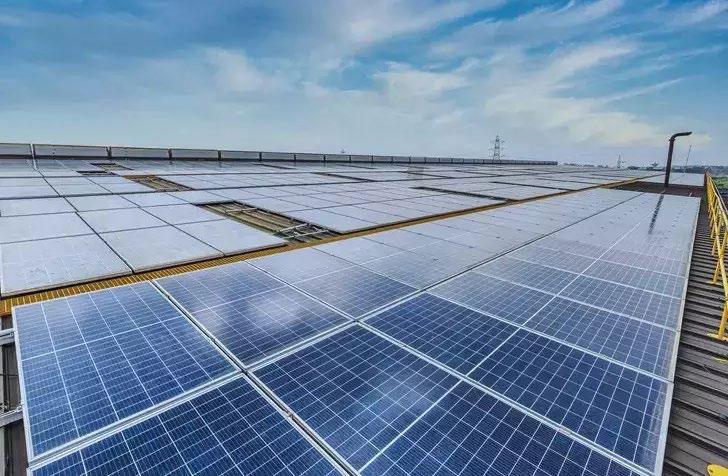
www.EQMagPro.com 49 EQ FEBRUARY 2024
OPINION

INDIA BUDGET 2024
BUDGET 2024-25 AND INDIA'S ENVIRONMENTAL
VISION: WATCHING CLIMATE ACTION
Amidst mounting environmental challenges, the Indian government’s 2024-25 Union Budget holds significant promise to tackle escalating environmental challenges and promote sustainable practices. It introduces innovative measures aimed at green energy adoption, enhancing climate resilience, and fostering the growth of the bio-economy. For stakeholders in the environmental services sector, this budget provides a strategic framework aligning with the goal of promoting a greener, cleaner future.
Finance Minister Nirmala Sitharaman's budget speech underscored India's determination to confront climate change during its G20 presidency, setting the tone for a comprehensive strategy to tackle this global challenge head-on. The budget exemplifies the government's proactive stance in prioritizing climate action, leveraging India's leadership to foster international collaboration and innovation, thereby exemplifying its dedication to leading by example.
Green Energy and Net Zero Commitment
The budget outlines ambitious plans for rooftop solarization and are epitomized by its commitment to rooftop solarization. With a target to equip 10 million households with 300 units of green electricity monthly at no cost to marginal consumers, this initiative represents a significant stride towards democratizing clean energy access and achieving energy independence. It is poised to generate substantial savings for households, estimated at ₹15,000 to ₹18,000 annually, while contributing to carbon emission reductions and generating carbon credits, thereby laying the groundwork for India's journey towards achieving net-zero emissions by 2070.
Bio-Economy: The New Frontier
The budget's focus on the bio-economy marks a significant leap forward in sustainable economic development. Through the introduction of innovative schemes for bio-manufacturing and bio-foundries, the government is actively fostering the growth of key sectors such as biodegradable polymers, bioplastics, bio-pharmaceuticals, and bio-agri inputs.
This strategic pivot towards a regenerative economic model not only promotes green growth but also underscores the paramount importance of practices that contribute to environmental restoration and preservation. By incentivizing the development and adoption of bio-based technologies and products, the government is laying the foundation for a more sustainable and resilient economy.
This proactive approach addresses current environmental challenges and also ensures long-term viability and prosperity by aligning economic growth with environmental sustainability. Ultimately, this initiative represents a crucial step towards building a more inclusive, equitable, and environmentally conscious economy for future generations.
Coal Gasification and Compressed Biogas
In the area of energy sustainability, the budget's focus on coal gasification and compressed biogas signifies a paradigm shift towards cleaner fuel alternatives. Targeting a capacity of 100 million tonnes by 2030, this initiative aims to reduce India's dependency on imported natural gas, methanol, and ammonia, thereby advancing energy self-sufficiency and sustainability. The phased mandatory blending of compressed biogas in CNG further underscores the government's holistic approach to reducing carbon emissions across various sectors.

Blue Economy and Coastal Sustainability
Additionally, the budget's emphasis on the blue economy underscores a profound recognition of the complex relationship between terrestrial and marine ecosystems. Through prioritizing measures for restoration and adaptation, alongside initiatives to bolster coastal aquaculture and mariculture, the government aims to not only improve the livelihoods of coastal communities but also to protect and rejuvenate marine biodiversity. This strategic allocation of resources reflects a holistic approach to environmental conservation, acknowledging the vital role played by healthy marine ecosystems in supporting both local communities and global biodiversity.
Viability Gap Funding for Offshore Wind
Introduction of viability gap funding for offshore wind energy, targeting an initial capacity of 1 GW, is a commendable step towards harnessing India’s vast shore wind energy potential. This initiative is expected to accelerate the country’s journey towards achieving ambitious net-zero targets, showcasing a proactive approach in embracing renewable energy technologies.
Budget 2024-25 and the Planet
The budget presents an opportunity for corporate and government sectors to collaborate closely in driving innovation and leading the transition towards a sustainable economy. As we navigate the challenges and opportunities of the 21st century, partnerships between the government and the private sector will be pivotal in shaping a sustainable, prosperous, and resilient future for India and the world. Looking beyond the financial aspects, the 2024-25 Union Budget serves as a manifesto for environmental and economic transformation.
The Indian government's 2024-25 Union Budget stands as a testament to its unwavering commitment to environmental sustainability and economic growth. Through a comprehensive strategy encompassing green energy adoption, bio-economic development, and climate resilience enhancement, the budget sets a new precedent for proactive environmental stewardship and sustainable economic development. As we embark on this transformative journey towards a greener and more prosperous future, collaboration and innovation will be the cornerstones of success.
50 EQ FEBRUARY 2024 www.EQMagPro.com

POST-BUDGET QUOTE FROM RAJESH KUMAR MEDIRATTA, MD & CEO, INDIAN GAS EXCHANGE
“The budget has laid a roadmap for ensuring a green gas-based economy in India. The policy mandating phased blending of CBG for CNG and PNG will help in greening the gas supply chain and balancing the demand-supply for clean fuels. Financial assistance for procuring biogas aggregation machinery would tremendously help in energizing the biofuel segment. We feel this budget has created a conducive environment for the trading of clean and eco-friendly biofuels, in alignment with India’s net-zero goals.”
UNION INTERIM BUDGET 2024- QUOTES FROM NEERAJ KULDEEP AND GAGAN SIDHU | COUNCIL ON ENERGY, ENVIRONMENT, AND WATER (CEEW)

Solar Rooftop:
Budget announcement on rooftop solar further emphasises the active role Indian citizens will play in the country’s energy transition and supporting India’s climate commitments. Analysis by the Council on Energy, Environment and Water (CEEW) suggests that 20-25 GW of rooftop solar capacity would be supported through solarisation of 1 crore households. Further, given that residential consumers receive subsidised electricity from discoms, solarisation of the demand from these households will save about INR 2 lakh crore for discoms over the next 25 years (the solar plant’s life). All states can leverage this opportunity as rooftop solar potential exists everywhere, unlike utility-scale solar, which is primarily restricted to seven RE-rich states. CEEW analysis has already established the 637 GW of technical potential in India for rooftop solar. Neeraj Kuldeep, Senior Programme Lead, Council on Energy, Environment and Water (CEEW)
“The announcement of viability gap funding for offshore wind as a measure to meet In dia’s net-zero commitment is welcome as the sector needs some support to kick start. As per CEEW’s analysis, while 65 per cent of the USD10 trillion of investments required for India to achieve net-zero by 2070 can be mobilised from conventional sources, the balance 35 per cent will need interventions. Further, wind as a generation source is also critical for our nearer-term energy ambitions. In fact, per the CEA’s own assessment, wind capacity would have to grow 1.9x from its current 44.7 GW to 100 GW by 2030 to meet the expected increase in power demand in the country by then.” Gagan Sidhu, Director – CEEW Centre for Energy Finance (CEEW-CEF)

www.EQMagPro.com 51 EQ FEBRUARY 2024
QUOTE ON BUDGET 2024
QUOTE ON BUDGET 2024
REACTION QUOTE FROM SUMANT SINHA, FOUNDER, CHAIRMAN AND CEO, RENEW

“This is a very welcome and forward looking Vote on Account presented by the Finance Minister. The strategy laid out reflects the Prime Minister’s vision of a modern, inclusive, resilient, innovative and green India. The continued thrust on capital expenditure and reduced market borrowings will enable acceleration in private investments and employment creation. The budget balances growth with fiscal prudence.
Continued priority to achieve rapid growth of the green energy sector is clear. Announcements on viability gap funding for offshore wind energy and allocations for solar rooftop projects will support development of the whole industry. The announcement of the corpus of Rs. 1 lakh crore for R&D in sunrise sectors sets a positive tone for the future, encouraging us to accelerate our investments and innovations in renewable energy technologies.”
STATEMENT ON INTERIM BUDGET
– ANVESHA THAKKER, PARTNER BUSINESS CONSULTING AND NATIONAL INDUSTRY LEAD –CLEAN ENERGY, KPMG IN INDIA
The thrust towards bio-based economy has been stepped up with announcement of new scheme on bio foundry, bio manufacturing, financial support for biomass aggregation machinery and mandates for CBG blending. This should result in debottlenecking some of the constraints such as biomass availability as well as provide new use cases for this sector to grow for e.g. bio based substitutes in industries such a polymers, pharmaceuticals etc. This not only provides income and growth opportunities for farmers, but offers avenues for decarbonization to industries including promoting regenerative principles in manufacturing.

Statement No 1 Statement No 2
The budget has a strong focus towards decentralized opportunities such as solar roof top, EV charging which is aimed to create a step change in sector with a strong underlying theme of inclusion of households, SMEs, and youth in the energy transition opportunities. A wider adoption of solar roof top is likely to be propelled by the scheme for 300 units free electricity every month for 1 crore household through roof top installations providing savings up to fifteen to eighteen thousand rupees annually. This along with the support towards manufacturing and charging infrastructure for EVs, is likely to create entrepreneurship opportunities for large number of vendors for supply and installation as well as employment opportunities for youth with technical skills in manufacturing, installation, and maintenance.
52 EQ FEBRUARY 2024 www.EQMagPro.com
POST-BUDGET QUOTES FROM OUR INDUSTRY LEADERS: VAREYN SOLAR & ETRICA POWER

Mr Ishan Chaturvedi, Co founder, Vareyn Solar Pvt. Ltd.
The budget is working towards incentivising clean and renewable energy which is great for the sector. To ensure accelerated adoption of solar energy, the minister announced that the government will support about 1 crore households under the rooftop solarisation scheme. This will help these households save up to 15000-18000 in a year.
In addition to this to meet the commitment for net zero by 2070 viability gap funding will also be provided for harnessing off shore wind for initial capacity or 1 gigawatt. The focus is on becoming Atma Nirbhar and reduce our country’s dependency on the export of natural gas. The budget had laid down a growth conducive environment for the renewable energy sector.


Mr Aditya Poonia, Founder, Etrica Power

The budget aims to promote clean and renewable energy, particularly through encouraging the adoption of solar power. The government plans to support approximately 1 crore households in implementing rooftop solarisation, leading to potential savings of 15000-18000 annually. Additionally, to fulfill the commitment to achieve net zero by 2070, the budget allocates viability gap funding for the initial capacity of 1 gigawatt in offshore wind harnessing. The emphasis is on achieving self-reliance and diminishing the country’s reliance on natural gas exports, fostering a growth-friendly environment for the renewable energy sector. The budget aims to promote clean and renewable energy, particularly through encouraging the adoption of solar power. The government plans to support approximately 1 crore households in implementing rooftop solarisation, leading to potential savings of 15000-18000 annually. Additionally, to fulfill the commitment to achieve net zero by 2070, the budget allocates viability gap funding for the initial capacity of 1 gigawatt in offshore wind harnessing. The emphasis is on achieving self-reliance and diminishing the country’s reliance on natural gas exports, fostering a growth-friendly environment for the renewable energy sector.
INTERIM BUDGET REACTION
QUOTE BY THE CMD OF JAKSON GROUP AND MD & CEO OF JAKSON GROUP


Mr. Sameer Gupta, Chairman and Managing Director of Jakson Group."Aligned with the government's strategy to 'Reform, Perform, Transform', to stimulate strategic growth. In parallel, Jakson aligns seamlessly with the government's visionary initiatives, including a substantial 11.11 lakh crore infrastructure investment and the introduction of 'Pradhan Mantri Suryodaya Yojana.' This program aims to provide 1 crore households with 300 units of free electricity through rooftop solarization, symbolizing our shared commitment to economic growth and net zero journey. These dynamic measures not only enhance energy security and promote clean energy accessibility but also drive a tech revolution, supported by a INR 1 lakh crore corpus for R&D. Jakson is committed to this journey towards a sustainable, and inclusive future, championing synergies between innovation and economic empowerment."


Mr. Bikesh Ogra, Managing Director and Chief Executive Officer of Jakson Green. "The recently announced budget's substantial infrastructure investment marks a significant stride in accelerating the renewable ecosystem. We anticipate dedicated allocations for crucial elements such as port infrastructure, renewable energy integration, and specialized infrastructures for green hydrogen. Notably, PM Gati Shakti's railway corridors emerge as a game-changer for green hydrogen and its derivatives, fostering dedicated transport links between production hubs, ports, and markets. This strategic move is poised to reduce costs, enhance accessibility, and expedite India's transition towards clean energy.
Furthermore, the government’s decision to reduce borrowing from markets is a pivotal development, unlocking opportunities for increased private investment, particularly in sectors like renewables. This shift acts as a catalyst for India’s clean energy transition, propelling us closer to a sustainable future. Additionally, the viability gap support for offshore wind and bio-based solutions holds immense promise, presenting opportunities to lower the levelised cost of green hydrogen and its derivatives. In a seemingly neutral yet strategically significant move, the budget’s stable tax and duty regime ensures a steady flow of foreign investments, particularly in critical sectors like renewable energy. This commitment to continuity prioritizes investor confidence and predictability, serving as essential pillars for fostering long-term commitments and accelerating growth in key sustainability sectors.”
www.EQMagPro.com 53 EQ FEBRUARY 2024
QUOTE ON BUDGET 2024
QUOTE ON BUDGET 2024
POST BUDGET QUOTE REACTION – MR, S . K GUPTA, CFO, AMPIN ENERGY TRANSITION
Being an interim budget only, it is still heart warming to see that “Green Energy Promotion” continues to be a key message of the finance minister in her limited agenda budget speech for 2024. Her reiteration that India is committed to be “Net Zero” by 2070 shows the government’s continuing commitment to all round promotion and development of renewable energy in India in coming years also. Extension of “Viability Gap Funding” for harnessing offshore untapped wind energy potential and take it to 1 GW+ in initial phase along with schemes such as the Pradhan Mantri Suryodaya Yojana set the direction for government’s final budget proposals for renewable industry, post elections in April 2024.
Commitment to expand and strengthen EV ecosystem will further give boost to the growth of renewable green energy demand and help government meet its target of 500 GW of green energy by 2030. With this positive framework in the interim budget, the industry feels confident that the final budget proposals of the government will favorably reconsider and implement its following key long pending demands:
1. Further rationalization and realignment of renewable policy framework between State and Central government to tap the large C&I segment.
2. Rationalize and reduce import duty and GST on critical inputs (cells, modules, battery storage solutions, Green Hydrogen equipment etc.) to further give impetus to green energy growth in the country.
3. Prompting industry to exploit PLI scheme benefits to promote in house manufacturing of wafers, ingots and silicon to optimize the solar value chain.
4. Larger allocation of priority capital investment in the sector and helping source project finance through international renewable development organizations at very competitive cost.
5. Extending income tax benefits to newly incorporated power generation companies for one more year beyond 31st March 2024.
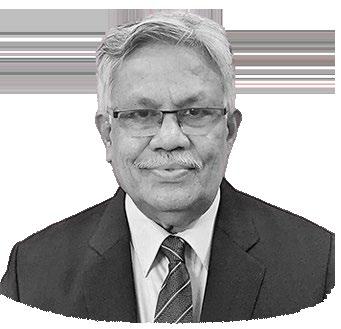
POST BUDGET QUOTE BY MR. VINAY THADANI, DIRECTOR & CEO OF GREW ENERGY PVT. LTD.
We welcome this budget presented by Hon’ble Finance Minister Smt. Nirmala Sitharaman. With the target to achieve Net Zero by 2070, the focus is now on Green Energy. The country is aiming at energy security in terms of availability, accessibility and affordability. The roof-top solarization scheme will enable upto 1 crore households to obtain up to 300 units of free electricity every month.
As emerging solar manufacturers and EPC players, this announcement motivates us to increase our solar PV modules manufacturing as well as optimise EPC services .In synergy with measures announced to achieve the 2070 target, adoption of solar energy will enable India towards securing the uninterrupted availability of energy sources at an affordable price.

54 EQ FEBRUARY 2024 www.EQMagPro.com
RENEWABLE ENERGY
MAHINDRA GROUP, ONTARIO TEACHERS’ CO-SPONSOR INVIT IN RENEWABLE ENERGY SPACE
The Mahindra Group and Ontario Teachers’ Pension Plan Board are co-sponsoring an Infrastructure Investment Trust (InvIT) in the renewable energy sector. This collaboration underscores joint efforts to invest in sustainable infrastructure projects, contributing to the growth of the renewable energy space.
Mahindra Group, a leader in farm equipment, utility vehicles, information technology and financial services businesses in India, and Ontario Teachers’ Pension Plan Board (Ontario Teachers’), a leading global institutional investor, through their associates have cosponsored an Infrastructure Investment Trust (InvIT) holding assets in the renewable energy space. The InvIT, ‘Sustainable Energy Infra Trust’ (SEIT), is India’s largest InvIT in the renewable energy space*. SEIT has raised primary capital of INR 1365 Crore (USD 165 Million) as part of the initial offer of units (Offer). The Offer was subscribed by marquee global and Indian investors, including Asian Infrastructure Investment Bank (AIIB). SEIT made its debut on the National Stock Exchange of India Limited.
As announced earlier, and in line with the commitment made by Mahindra Group and Ontario Teachers’, SEIT has been set up to focus on the growth of the renewable energy sector in India at scale. SEIT holds operational renewable power assets seeded by Mahindra Susten with a generation capacity of approximately 1.54 GWp. The capital of INR 897.8 Crore (USD 108 Million) made available to Mahindra Susten by way of an offer for sale of units of SEIT as a part of the Offer will position Mahindra Susten for the next level of growth and development of a future pipeline of renewable energy assets. Mahindra Susten and SEIT, as a part of their growth strategy, have entered into a Right Of First Offer (ROFO) arrangement, in compliance with InvIT Regulations, whereby renewable energy assets developed by Mahindra Susten will be offered for sale to SEIT. As previously announced, both Mahindra Group and Ontario Teachers’ had committed to invest up to INR 3050 Crore (USD 368 Million) and INR 3550 Crore (USD 428 Million) respectively into Mahindra Susten and SEIT.

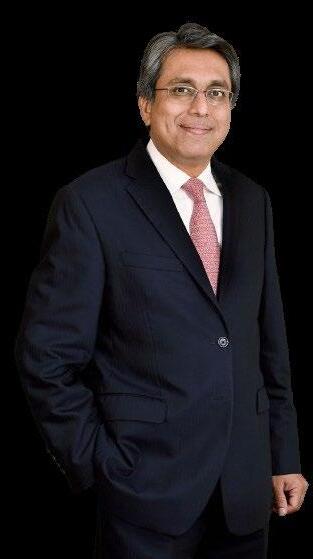
Dr. Anish Shah, Group CEO & MD, Mahindra Group, said, “The Government of India has laid down ambitious targets to reduce the carbon intensity of the nation’s economy by 45% by the end of the decade and achieve net-zero carbon emissions by 2070. The listing of SEIT is a testament to the Group’s ability to attract strong external investors. Mahindra Susten has ambitious plans to achieve 5X growth in the next five years and will contribute to both the Groups’ and the nation’s green energy goals. The renewable energy sector will continue to grow and attract investments and we are excited about both Susten’s and SEIT’s role in developing the right ecosystem.”
Deb Hajara, Managing Director, Infrastructure & Natural Resources at Ontario Teachers’ added, “We are proud to co-sponsor the SEIT alongside our partner Mahindra Susten and to contribute to India’s renewable energy ambitions. This milestone not only reinforces our commitment to invest globally in green and transition assets but also demonstrates the attractiveness of renewable energy investment opportunities in India.”

Avinash Rao, CEO of the Invest ment Manager to SEIT, mented, “Renewable energy is a core sector for India with significant growth potential. The Government’s focus on renewable and sustainable en ergy makes the industry very attractive for investments thereby enabling further growth of our portfolio.
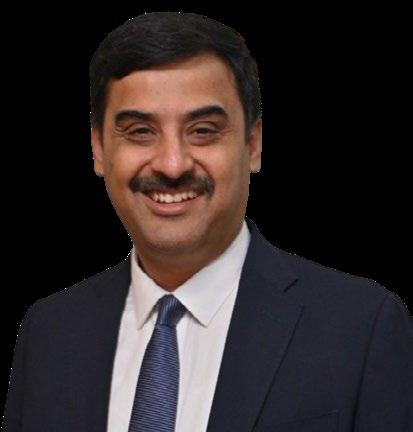
An InvIT as an instrument is investor friendly and attracts significant interest in operating renewable energy and infrastructure investments in India. We are delighted to have strong sponsors such as Mahindra Group, Ontario Teachers’ as well as AIIB and other marquee investors on board for current assets, and for building our pipeline of future assets.”
Kotak Mahindra Capital Company Limited, Axis Capital Limited and Avendus Capital Private Limited acted as Placement Agents to the transaction. Cyril Amarchand Mangaldas acted as legal counsels to SEIT and the Sponsors. S&R Associates acted as legal counsels to the Placement Agents.

www.EQMagPro.com 55 EQ FEBRUARY 2024
CLIMATE CHANGE
WE NEED $2.4 TRILLON, IF NOT MORE, TO TACKLE CLIMATE CHANGE: TOP UN OFFICIAL
A top UN official has stated that an estimated $2.4 trillion or possibly more is needed to effectively tackle climate change. This underscores the substantial financial resources required for global initiatives aimed at mitigating the impacts of climate change and transitioning to a more sustainable and resilient future.
The $2.4 trillion is what the High-Level Expert Group on Climate Finance estimates is needed every year to invest in renewable energy, adaptation, and other climate-related issues. New Delhi: Barely a month and a half after COP28, Simon Stiell, executive secretary, United Nations Framework Convention on Climate Change called on countries to deliver trillions in climate finance. Stiell who delivered a lecture at ADA University in Azerbaijan’s Baku said at least $2.4 trillion is needed every year for energy transition in developing countries (excluding China). COP29 is scheduled to be held in Baku and it is expected to be a critical COP for the global South because finance is one of key issues on agenda. The new collective quantified goal on climate finance, or NCQG, is set to be agreed this year. This goal will supersede the US$100 billion target agreed in 2009 and should be informed by the needs and priorities of developing countries. “What must we do this year to ensure the world’s shared goals remain within reach? We must spend the year working collectively to evolve our global financial system so it’s fit-for-purpose, with a clear plan to meaningfully execute the climate transition. Looking at the numbers, it’s clear that to achieve this transition, we need money, and lots of it. $2.4 Trillion, if not more,” Stiell said. The $2.4 trillion is what the High-Level Expert Group on Climate Finance estimates is needed every year to invest in renewable energy, adaptation, and other climate-related issues in developing countries, excluding China.
“Whether on slashing emissions or building climateresilience, it’s already blazingly obvious that finance is the make-or-break factor in the world’s climate fight – in quantity, quality, and innovation…In fact, without far more finance, 2023’s climate wins will quickly fizzle away into more empty promises. We need torrents – not trickles –of climate finance,” Stiell said.
The New Collective Quantified Goal on Climate Finance must be agreed. Countries must be confident that they will be able to rapidly access sufficient concessional support, he said.
Stiell also warned countries against capitalising on the loopholes in the COP28 agreement. “Whilst last year’s agreement on the Global Stocktake at COP28 was far from perfect, it would have been unthinkable just a few years ago, and sends a very strong signal about the inevitability of global decarbonisation,” he said adding: “But now is no time for victory laps. It’s time to get on with the job. Likewise, hiding behind loopholes in decision texts, or dodging the hard-work ahead through selective interpretation, would be entirely self-defeating for any gov-
equitable manner, accelerating action in this critical decade, so as to achieve net zero emissions by 2050, although experts said it doesn’t do enough on almost all fronts — climate targets, funding, phasing out fossil fuels, and holding historical polluters accountable. Still, fossil fuels have been a topic of taboo for years in climate negotiations, and while the text still doesn’t mention the words “oil” and “gas”, the very fact that there is a consensus is being seen as a victory in some quarters.
According to the agreement, one of the means is “accelerating zero- and low-emission technologies, including, inter alia, renewables, nuclear, abatement and removal technologies such as carbon capture and utilisation and storage, particularly in hard-to-abate sectors, and low-carbon hydrogen production”.
Experts have been wary of this because such a provision could

allow nations to continue expanding the use of planet- warming fossil fuels while depending on carbon capture technologies in a big way.
Stiell also said by 2025 he hopes the G20 – together responsible for 80% of the world’s emissions in 2025 – have seriously re-engineered their targets in line with 1.5 degree C goal. “Because they know that PR spin, re-branding or tinkering around the edges won’t cut it to meet their climate responsibilities, and that it would also leave them badly behind the innovation curve, not at the cutting edge,” he said.
“Basically this speech is about getting on with the job, and for the ES, being a neutral broker is central to that job. So giving this speech in Baku – rather than Davos or any other place –made sense for him,” said a senior advisor to the Executive Secretary.
“India has been continuously highlighting two major concerns of the global south – technology and climate finance. At G20, held under India’s Presidency, it was agreed that the climate finance requirement will be to the tune of trillions of dollars by 2030. And that this should be

56 EQ FEBRUARY 2024 www.EQMagPro.com

IREDA AND IIT BHUBANESWAR SIGN MOU FOR CLEAN ENERGY INNOVATION
IREDA and IIT Bhubaneswar have forged a strategic partnership through a Memorandum of Understanding (MoU) to drive innovation in clean energy. This collaboration aims to foster research and development initiatives for sustainable and efficient energy solutions.
Indian Renewable Energy Development Agency Ltd. (IREDA) has taken a significant step towards fostering innovation and research in the renewable energy sector, by signing a Memorandum of Understanding (MoU) with Indian Institute of Technology Bhubaneswar. The MoU, inked today, February 11, 2024, at the 100 Cube Start-up Conclave held at IIT Bhubaneswar, aims to support collaborative efforts in innovation and research initiatives, technology transfer, and nurturing the start-up ecosystem. The collaboration between IREDA and IIT Bhubaneswar is poised to facilitate joint research efforts, facilitate technology transfer, and provide comprehensive support for the start-up ecosystem. It will also encompass capacitybuilding initiatives such as training programs, seminars, and workshops to enhance the skills of IREDA officials.
$2 TRILLION ANNUAL
The MoU was signed by Chairman & Managing Director of IREDA Shri Pradip Kumar Das, and Independent Director of IIT Bhubaneswar Dr. Debi Prasad Dogra, in the presence of Union Minister for Education, Skill Development & Entrepreneurship Shri Dharmendra Pradhan and Director of IIT Bhubaneswar, Prof. Shreepad Karmalkar.


Speaking on the occasion, the IREDA CMD said: “This partnership with IIT Bhubaneswar marks a significant milestone in our journey towards fostering innovation and sustainable development in the renewable energy domain. By leveraging the expertise and resources of both organizations, we aim to drive impactful research initiatives and propel the growth of the renewable energy sector.”
INVESTMENT
REQUIRED TO TRIPLE RENEWABLES BY 2030: REPORT
A report highlights that an annual investment of $2 trillion is necessary to triple global renewable energy capacity by 2030. The report emphasizes the need for substantial investments to accelerate the transition to clean energy and achieve climate goals. Increased financial commitments, supportive policies, and technological advancements are crucial to meeting the rising demand for renewable energy and addressing climate change.
Report says USD 2 trillion per year needed to triple global renewables by 2030. The report by global think-tank Climate Analytics said Asia is the only region broadly on course to meet the goal of tripling global renewable energy capacity, driven mostly by policies in China and India. The region makes the biggest overall contribution, providing around half (47 per cent) of the 8.1 Terawatt of renewable capacity additions needed globally by 2030. However, the significant coal and gas pipelines in these countries risk stranded assets or slowing the transition. As renewables are set to grow strongly in the region, new fossil fuel plants are not needed and should be avoided, it said. The growth of renewable energy in China and India compensates for laggards such as South Korea, where it is set to grow at half the rate of the region as a whole.
The report finds that an investment of USD 8 trillion is needed for new renewables and USD 4 trillion for grid and storage infrastructure for tripling global renewable energy capacity to 11 Terawatt or 11,000 Gigawatt. According to the International Energy Agency, tripling the global renewable energy capacity and doubling the energy efficiency rate by 2030 are critical to limiting the average global temperature rise to 1.5 degrees Celsius. The majority of the global capacity gap needed to be closed by 2030 is found in OECD (Organisation for Economic Co-operation and Development) countries that are currently lagging behind the 1.5-degree-Celsius compatible benchmark by around 1 to 1.4 Terawatt. No country in the OECD is on track to triple renewable energy capacity relative to 2022 levels, the report said. Renewables capacity in Sub-Saharan Africa needs to scale rapidly by a factor of seven (double the global average) due to historic underinvestment and energy access needs, it said.

Neil Grant — Climate Analytics expert and the report’s lead author — said, “USD 2 trillion a year sounds like a cost but it’s really a choice. We are set to invest over USD 6 trillion in fossil fuels over this decade — more than enough to close the tripling investment gap. Faced with this choice, I would go with the safest, best-value option — renewables.”

According to Claire Fyson, the report’s co-author and policy head at Climate Analytics, “The OECD needs to triple renewables but is currently way off target. Countries in the region claiming to be climate leaders need to walk the talk, not just by ramping up renewables at home but by coming through for other regions that need finance to contribute to the tripling goal.”
The report finds renewables need to continue growing strongly beyond the end of the decade — scaling up five times by 2035 relative to 2022 — to limit warming to 1.5 degrees Celsius.
www.EQMagPro.com 57 EQ FEBRUARY 2024
BUSINESS & FINANCE
BUSINESS & FINANCE
SAEL RAISES $1 BILLION TO ADVANCE ITS RENEWABLE ENERGY
PORTFOLIO.
SAEL, a prominent Indian renewable energy company specializing in solar and waste-to-energy projects, announced the successful forging of partnerships and securing capital raise totalling up to $1 billion at an event in New Delhi attended by the Hon’ble Ambassador of Norway, Deputy Chief of Mission, United States of America and other dignitaries. Norfund, DFC, ADB, Tata Cleantech are the major participants in the capital raise besides other financial institutions.
In addition to the $1 billion partnership announcement, SAEL has plans to complete capital expenditure of ₹15,000 crore in FY 25 and execute 2-2.5 GW renewable capacity every year to reach its target of 10 GW in the next 4 years. This substantial investment will be utilized to expand the company's solar and biomass projects, capitalizing on the conducive market potential and government schemes in the renewable energy sector.
Over the course, SAEL has demonstrated unparalleled growth, building a portfolio of 2.7 gigawatts, which is a testament to the company's steadfast commitment to sustainable energy solutions. The $1 billion partnership signifies not only the financial confidence bestowed upon SAEL by prestigious investors and institutions but also underscores the collective dedication to advancing the frontiers of renewable energy on a grand scale.


Speaking on the occasion Norfund’s CEO Mr. Tellef Thorleifsson “We have been thrilled to partner with SAEL for the past year, and we are happy to be able to further finance the company’s effort to reach its ambitious targets for increasing its renewable energy capacity, in line with the mandate Norfund has for the management of the Norwegian Climate Investment Fund.”

Deputy Chief of Mission, Government of the United States of America, Ms. Patricia Lacina said, “As climate action and clean energy leaders, the United States and India share a common and ambitious vision to rapidly deploy clean energy at scale. DFC’s Investment in SAEL will increase renewable energy capacity, reduce particulate matter, and support increased farmer incomes”


Mr. Jasbir Singh, Chairman and Managing Director of SAEL said "This is a momentous occasion for SAEL and a testament to the hard work and dedication put in by the SAEL team. These partnerships will propel us to new heights in our mission to provide sustainable energy solutions to the people of India. We are grateful for the trust and support of our investors and are committed to delivering on our goals to advance renewable energy initiatives. The company's focus on solar and waste-to-energy projects aligns with India's commitment to harnessing clean and green energy sources.”

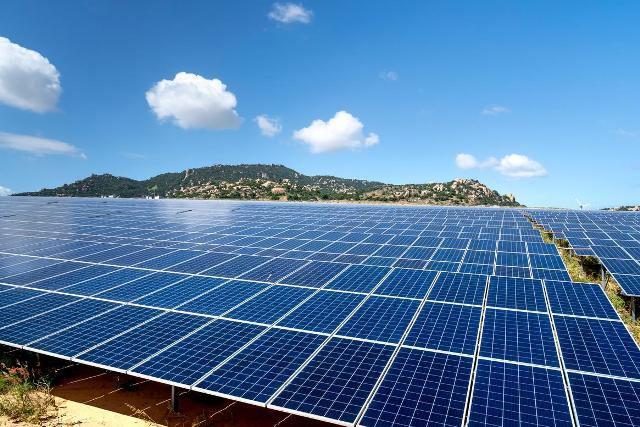
GIFT CITY PARTNERS WITH IGX, GSPC FOR GLOBAL HYDROGEN TRADING MECHANISM
GIFT City (Gujarat International Finance Tec-City) collaborates with IGX (Indian Gas Exchange) and GSPC (Gujarat State Petroleum Corporation) to establish a global hydrogen trading mechanism. This partnership reflects an initiative to advance hydrogen trading practices, contributing to the growth of the hydrogen economy.
The mechanism is expected to enhance transparency, boost investor confidence, and facilitate the growth of the green hydrogen market on a global scale, it said
The International Financial Services Centre (IFSC) at GIFT City in Gandhinagar announced a strategic collaboration with the Indian Gas Exchange (IGX) and state-owned Gujarat State Petroleum Corporation (GSPC) to set up a global hydrogen trading mechanism.
“A key aspect of this collaboration is the subsequent launch of the Global Hydrogen Price Index, a benchmark that will play a pivotal role in price discovery and market information on the burgeoning green hydrogen market in India,” the Gujarat International Finance Tec-City (GIFT City) said in a release.
The mechanism is expected to enhance transparency, boost investor confidence, and facilitate the growth of the green hydrogen market on a global scale, it said. GSPC jointly with IGX will develop a mechanism to create an index for hydrogen and attract global institutions to trade in GIFT IFSC, the release said.

GIFT City SEZ is a notified IFSC in India with banking, insurance, capital markets, asset management, and FinTech verticals, among others, operational here. Commodities such as gold and silver are largely traded through India International Bullion Exchange. The objective of GIFT IFSC is to develop and promote trading of global securities including commodities and create a leadership in deriving price for such globally traded commodities.
SUNSURE ENERGY SIGNS PPA WITH KSB LTD TO SUPPLY ONE CRORE UNITS OF GREEN POWER
Sunsure Energy signs a Power Purchase Agreement (PPA) with KSB Ltd to supply one crore units of green power. This agreement likely contributes to KSB Ltd’s commitment to sourcing sustainable energy and supports the growth of renewable energy in the region.
Sunsure Energy, a premier renewable energy producer in India, has inked a 25-year Power Purchase Agreement (PPA) with KSB Limited, a Pune-based leader in pump and valve manufacturing. The PPA will facilitate the annual reception of nearly one crore (10 million) units of green power by KSB Limited, thereby assisting in the transition to clean energy and supporting India’s objective of achieving net-zero emissions.
Green Energy Transition
Expected to offset a staggering 221 million kgs of CO2, the initiative equates to the environmental impact of planting around 3.5 lakh (350,000) trees over the next quarter-century. The green power will be supplied via open access to KSB Limited’s facilities in Maharashtra. The commitment to sustainability and alignment of this partnership with their respective environmental goals have been expressed by both Rajeev Jain, Managing Director of KSB Limited, and Shashank Sharma, FounderChairman & CEO of Sunsure Energy.
Sunsure Energy’s Commitment
Established in 2015, Sunsure Energy is known for its significant support from Partners Group AG and its ambition to develop over 5 GW of renewable energy assets by 2028. This partnership with KSB Limited, which will cater solely to the company’s power needs, is a testament to Sunsure Energy’s commitment to accelerating the transition to green energy and promoting a cleaner and healthier future.

www.EQMagPro.com 59 EQ FEBRUARY 2024 BUSINESS & FINANCE
BUSINESS & FINANCE
MAHAMETRO SIGNS SOLAR POWER DEAL WITH AMPIN ENERGY
MahaMetro signs a solar power deal with Ampin Energy. This collaboration likely involves the supply of solar power to meet the energy needs of MahaMetro, contributing to sustainable and eco-friendly public transportation infrastructure.
MahaMetro Rail Corporation recently signed a power purchase agreement (PPA) with Delhibased Ampin Energy Transition, a company engaged in renewable energy business.
MahaMetro Rail Corporation recently signed a power purchase agreement (PPA) with Delhi-based Ampin Energy Transition, a company engaged in renewable energy business. Ampin will be setting up a 6 MWp solar power plant at the premises of Nagpur Metro. The power generated through solar panels set up at metro stations and depots will be supplied to the corporation at ₹4.15 a unit, said a
MahaMetro spokesperson.
“The solar panels will have to be set up at the stations and depots within a period of one and a half years under the first phase of the metro rail route,” the official said.
The press release posted at Ampin’s website says the PPA stands for a period of 25 years. This will be the company’s third solar power project with a metro rail and the first in the state. The 6 MW capacity will be set up in two phases of 2.5 MWp and 3.5 MWp each.
The project is expected to result in savings upto ₹41% per unit. In terms of environmental impact, the carbon offset achieved by the initiative would be around 7000MT of CO2 annually, says the press release.
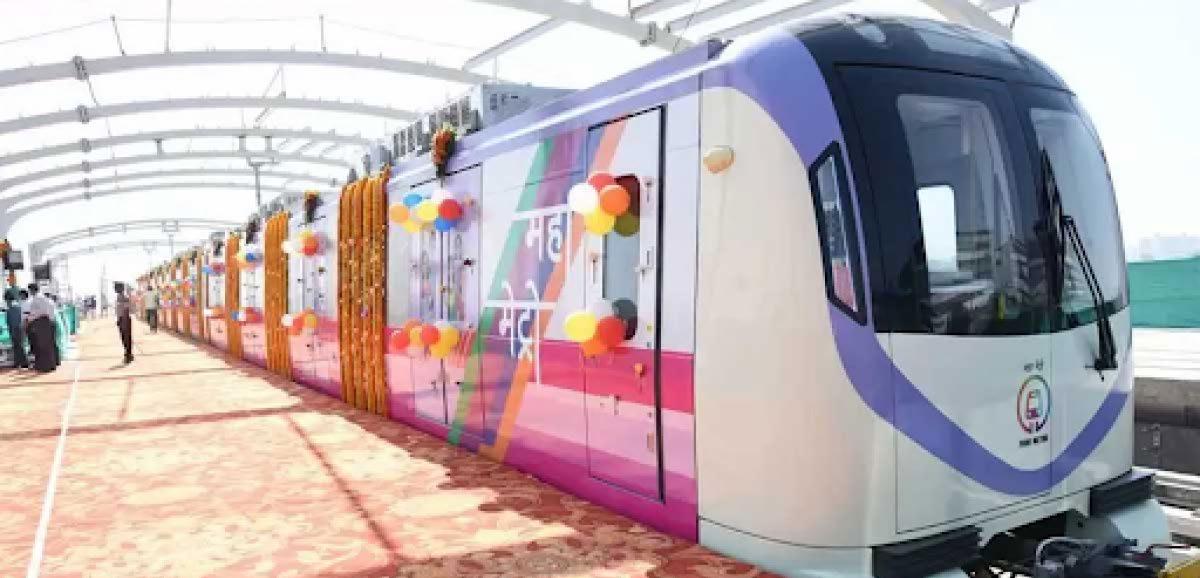
GENSOL SECURES ₹1.39 BILLION SOLAR EPC CONTRACT WITH SARDA
IGensol, a solar energy solutions provider, has successfully secured a solar Engineering, Procurement, and Construction (EPC) contract worth ₹1.39 billion with Sarda, marking a substantial step in advancing solar infrastructure projects. n a groundbreaking move towards sustainable energy solutions, Gensol, a key player in the renewable energy sector, has successfully secured a monumental ₹1.39 billion solar EPC (Engineering, Procurement, and Construction) contract with Sarda. This strategic partnership marks a significant milestone in the transition towards cleaner and greener energy practices. Gensol’s expertise in solar energy solutions positions them as a frontrunner in shaping the future of renewable power.
The massive financial commitment in this EPC contract underscores the scale and importance of the project, emphasizing a collective dedication to combating climate change and fostering environmentally conscious practices. This collaboration between Gensol and Sarda is poised to elevate solar energy infrastructure, contributing substantially to the reduction of carbon footprints. The ambitious project aligns with global efforts to embrace sustainable technologies and combat the challenges posed by traditional energy sources. As stakeholders rally
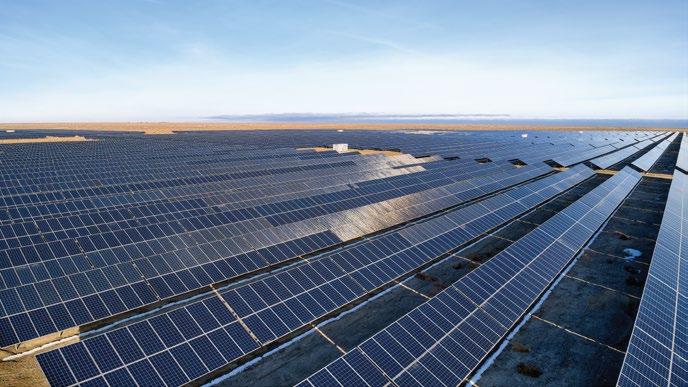
behind this transformative initiative, the partnership signifies not only a financial investment but a commitment to a cleaner, brighter future. With the link between Gensol and Sarda serving as a beacon of progress, the energy landscape is set for a paradigm shift, showcasing the pivotal role of solar solutions in shaping a more sustainable tomorrow.
60 EQ FEBRUARY 2024 www.EQMagPro.com
ADB, SAEL INDUSTRIES SIGN 12.23 BILLION INDIAN RUPEE DEAL FOR A 400 MW SOLAR POWER PLANT IN GUJARAT INDIA
The Asian Development Bank (ADB) and SAEL Industries Limited, through its subsidiary SAEL Solar P4 Private Limited, have signed a loan of up to 12.23 billion Indian rupees (about $147 million equivalent) for the development of a 400-megawatt (MW) greenfield solar power plant in Gujarat, India, to support the country’s ongoing transition toward clean energy and low-carbon growth.

The financing package comprises of 12.23 billion Indian rupees from ADB and a parallel loan of up to 6.11 billion Indian rupees underwritten by Tata Capital. ADB led the structuring of the financing package as well as the mobilization of domestic private capital.
“The private sector must play a pivotal role in the transition from fossil fuels to renewable energy generation, particularly in Asia and the Pacific region, which contributes over half of global greenhouse gas emissions. As the region’s climate bank, ADB provides long-term local currency financing to stimulate private sector investment in clean energy,” said ADB Director General for Private Sector Operations Suzanne Gaboury. “ADB’s partnership with SAEL supports the Government of India’s objective of achieving 500 gigawatts of renewable energy generation capacity by 2030.”

SAEL Solar P4 Private Limited will build and operate the solar powerplant, situated within the Khavda Ultra Mega Solar Park in Gujarat, India. The electricity generated by the solar plant will be supplied to Gujarat Urja Vikas Nigam Limited, the stateowned power distribution company, through a 25-year purchase agreement. The plant is anticipated to produce an average of 953 gigawatt-hours of clean energy annually, helping to avoid approximately 783,855 tons of carbon dioxide emissions annually. SAEL and ADB have previously partnered in a biomass power generation project that uses agricultural residue.

“We are delighted to announce our partnership with ADB, a significant milestone in our commitment to combat climate change and bolster environmental sustainability. This collaboration marks a pivotal moment as we join forces to construct solar as well as biomass power plants. Our association with ADB is of paramount importance, emphasizing our dedication to promoting environmental sustainability and contributing to a cleaner, greener future for all.” said SAEL Industries Limited Chairman and Managing Director Jasbir Singh.

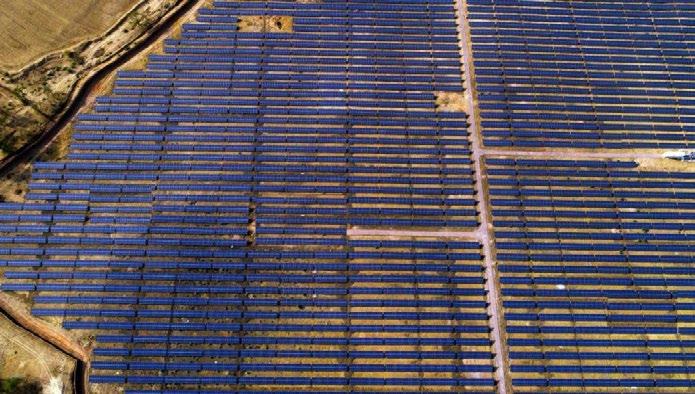
SAEL Industries Limited is a renewable energy company with a strong focus on the creation of green assets to contribute to the transition to green energy, with biomass and solar power projects in various states in India. It is a member of the SAEL group of companies which was founded in 1999 and has diversified business interests in renewable energy generation, warehousing, and agricultural processing. ADB is committed to achieving a prosperous, inclusive, resilient, and sustainable Asia and the Pacific, while sustaining its efforts to eradicate extreme poverty. Established in 1966, it is owned by 68 members—49 from the region.
NGEL SIGNS MOU WITH GOVT OF MAHARASHTRA FOR DEVELOPMENT OF GREEN HYDROGEN PROJECTS
NTPC Green Energy Limited (NGEL) signed a Memorandum of Understanding (MoU) with Govt of Maharashtra for development of Green Hydrogen and derivatives (Green Ammonia, Green Methanol) of up to 1 million Ton capacity per annum, including Pump Hydro Projects of 2 GW and development of RE projects with or without storage up to 5 GW in the state.
The MoU was exchanged between Shri Mohit Bhargava, Chief Executive Officer, NGEL and Shri Narayan Karad, Deputy Secretary (Energy), GoM in the presence of Hon’ble Chief Minister, Hon’ble Deputy CM and other senior officials.
The above MoU has been signed as a part of Green Investment Plan of Govt of Maharashtra in the next five years and envisages a potential investment of approximately ₹ 80, 000 Crore. NTPC is in the path of building up RE capacity of 60 GW by 2032. NGEL is a wholly-owned subsidiary of NTPC and aims to be the flag bearer of NTPC’s Renewable Energy journey with an operational capacity of over 3.4 GW and 26 GW in pipeline including 7 GW under implementation.

www.EQMagPro.com 61 EQ FEBRUARY 2024 BUSINESS & FINANCE
WAAREE RENEWABLE TECHNOLOGIES BAGS SOLAR PROJECT
WORTH RS 547 CRORE
Waaree Renewable Technologies has secured a contract worth Rs 547.5 crore for 412 MWp solar energy project. The order has been awarded by one of the global leading biggest utilities in the world in renewable energy.
The company has received a letter of award (LoA) for the execution of engineering, procurement and construction (EPC) work for this plant. The LoA also includes operations and maintenance (O&M) for a period of two years from the date of handover, with an order value of Rs 6.798 crore.
The project is scheduled to be completed in December 2024 as per the terms of the order. The solar power plant is to be carried out on turnkey basis. Waaree Renewable’s unexecuted order book now stands at 1.161GW.

RS 10,000 CRORE ALLOCATED FOR ROOFTOP SOLAR SCHEME FOR 10 MILLION HOUSES
The government has allocated Rs 10,000 crore for a rooftop solar scheme aimed at benefiting 10 million houses. This significant financial commitment underscores the importance of promoting solar energy adoption at the household level, contributing to sustainability, and achieving renewable energy targets in India.
The average household would be able to manage the savings up to Rs 15,00018,000 per annum. Finance Minister Nirmala Sitharaman has announced to save Rs 10,000 crore in Budget allocation for the 10 million houses to provide 300 units of free electricity and rooftop solar installation. The project will be furnished under Pradhan Mantri Suryodaya Yojana which will enable one crore families to get up to 300 units of free electricity monthly and would help them to save up to Rs 18,000 annually. The initiation would be implemented through free solar rooftop installation which would be enabled to obtain up to 300 units of free electricity each month. The average household would be able to manage the savings up to Rs 15,000-18,000 per annum. Earlier in January, the scheme Pradhan Mantri Suryodaya Yojana scheme was introduced to launch free so-
lar rooftops in one crore households. The scheme would assist in charging electric vehicles and increasing entrepreneurship opportunities for the large number of youths and employment facilities for younger generations in both skilled and non-skilled terms. In addition to this, for achieving net zero carbon emission by 2070 VGF [Viability Gap Funding] has been announced for harnessing offshore wind energy with a capacity of 1GW. As per official data, the country has a solar-energy installed generation capacity of over 73GW.
The respective funding announcement has been aligned with the nation’s ambition to achieve 500 GW of installed capacity from non-fossil fuel sources by 2030.
The initiative would provide a positive track towards renewable sources and would address the chronic issue of poor financial viability and subsidy dependence of DISCOMs while marking a sustainable approach towards economic efficiency.
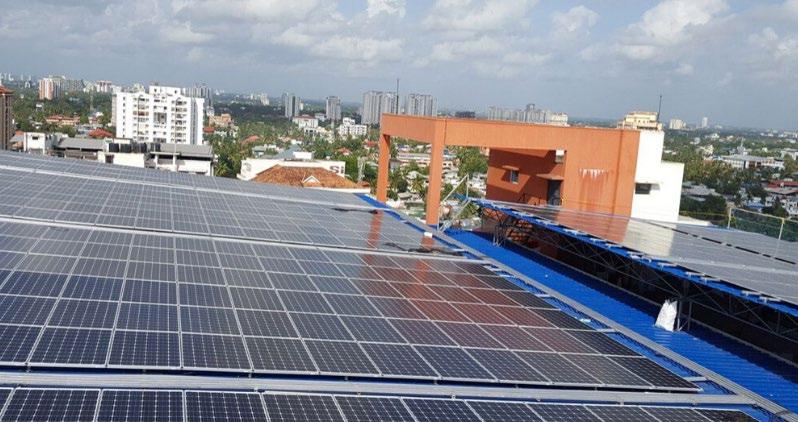
62 EQ FEBRUARY 2024 www.EQMagPro.com
BUSINESS & FINANCE

GENSOL, MATRIX GAS CONSORTIUM WIN PLI BID FOR 63-MW GREEN HYDROGEN ELECTROLYSER CAPACITY
A consortium of Gensol Group and Matrix Gas Technologies has won a bid under the Production Linked Incentive (PLI) scheme for the establishment of 63 MW green hydrogen electrolyzer capacity. This initiative aligns with India’s push towards promoting green hydrogen production and fostering a sustainable energy ecosystem. The PLI scheme aims to boost domestic manufacturing of green hydrogen technologies and incentivize companies contributing to the nation’s hydrogen economy.
The awarded project, with a manufacturing capacity of 63 MW per annum, is strategically positioned to contribute significantly to India’s ambitious goal of producing 5 million metric tons of green hydrogen annually by 2030.
Gensol Engineering Ltd, a sustainable energy solutions company, together with Matrix Gas & Renewables Ltd, a green hydrogen infrastructure developer and natural gas aggregator, announced the grant of manufacturing capacity for an advanced Electrolyser Plant under the auspices of the Sustainable Hydrogen Innovation & Green Hydrogen Technologies (SIGHT) program. The awarded project, with a manufacturing capacity of 63 MW per annum, is strategically positioned to contribute significantly to India’s ambitious goal of producing 5 million metric tons of green hydrogen annually by 2030.


Ali Imran Naqvi, CEO (EPC Business), Gensol Engineering Ltd, said, “We are immensely thankful for the trust placed in us by the Government of India and our stakeholders. This milestone is not just a testament to our commitment to India’s green hydrogen mission but also a beacon of our aspiration to drive global decarbonization efforts. Green hydrogen is pivotal in the world’s transition to sustainable energy, and Gensol, leveraging this opportunity, aims to foster global partnerships, technological exchange, and innovation. Together, we are set to catalyse the adoption of green hydrogen globally, marking a new era in energy sustainability.”


It is a privilege for the Matrix and Gensol consortium to be chosen for this distinguished project, signalling a monumental leap in India’s green hydrogen development. Selected amidst stiff competition from major conglomerates, our consortium stands out for its technological expertise and manufacturing experience. Electrolyser manufacturing is a cornerstone of our strategic initiative, aligning seamlessly with our ambition for large-scale decarbonization through the deployment of green hydrogen production plants. This endeavour supports our commitment to engineering, procurement, commissioning, as well as build-own-operate models for our esteemed clientele. We are eager to harness our collective capabilities to establish a state-ofthe-art Electrolyser manufacturing facility, propelling India towards a sustainable, low-carbon future,” said Chirag Kotecha, Whole-time Director at Matrix Gas and Renewables Limited.
Gensol & Matrix are both promoted by common promoters and will continue to collaborate in the Green Hydrogen domain taking benefit of the skill sets of each entity.
www.EQMagPro.com 63 EQ FEBRUARY 2024
BUSINESS & FINANCE
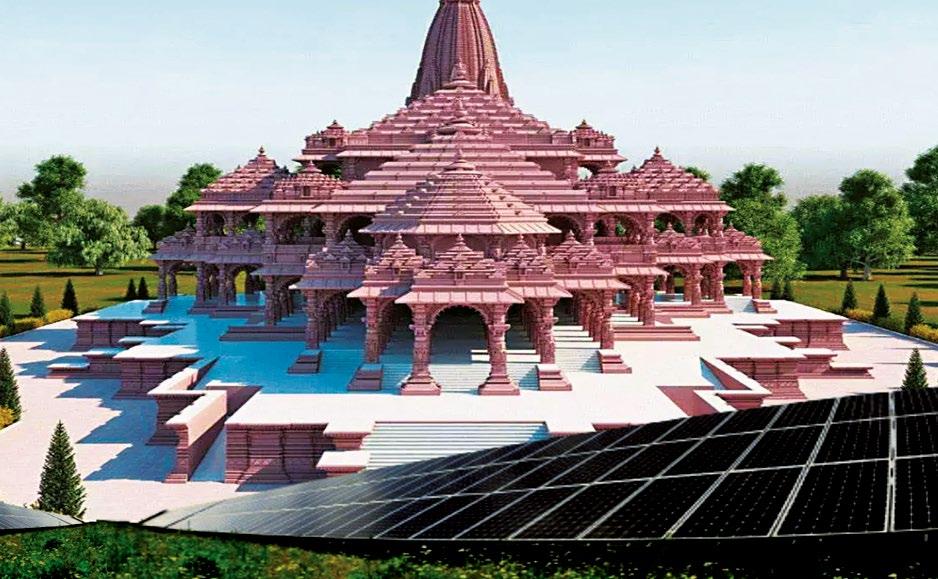
PURSHOTAM PROFILES CONTRIBUTES TO RAM MANDIR AYODHYA'S SOLAR REVOLUTION
Ayodhya, the legendary city of Uttar Pradesh, is stepping into the future with its designation as the state's first "solar city." At the forefront of this groundbreaking initiative stands Purshotam Profiles, a leading solar module mounting structure manufacturer. Recently, Purshotam Profiles had the honor of being part of a historical movement as it contributed to a solar project in Ayodhya, which was inaugurated on January 22nd
The company expresses heartfelt gratitude to Jakson and NTPC for entrusting them with this significant opportunity to contribute to Ayodhya's journey towards sustainable energy. Purshotam Profiles has completed an impressive 10.01 GW of Module Mounting Structure projects and continues to strive for further achievements. The company attributes its success to the unwavering support of its clients, who have stood by them and provided numerous opportunities to showcase their expertise.
In alignment with India's ambitious renewable energy goals, Purshotam Profiles remains committed to delivering cutting-edge solutions that optimize solar power generation. By continuously innovating and collaborating with key stakeholders, the company aims to contribute significantly to the clean energy transition. As Ayodhya takes bold steps towards becoming a model solar city, Purshotam Profiles is proud to have played a part in this transformative journey. With its proven track record and unwavering dedication, the company looks forward to continuing its support for similar initiatives nationwide, driving the adoption of solar energy for a sustainable future.
STERLITE POWER SUCCESSFULLY CONCLUDES REFINANCING OF LVTPL GREEN ENERGY CORRIDOR PROJECT IN GUJARAT
Sterlite Power, a leading power transmission developer and global products and services provider, announced the successful refinancing of the Lakadia-Vadodara Transmission project loan within 12 months of the project becoming fully operational in January 2023. The new financing from HDFC Bank, IIFCL and Bank of Baroda will enable prepayment of the existing project loan of approximately INR 1840 crores.
The new refinancing secures a reduced interest rate of ~8.25% p.a.p.m, a significant improvement over the previous terms. The overall tenure of the facility is ~18 years. As the first private sector inter-state power transmission asset to secure such favourable refinancing terms, this accomplishment reflects the keen interest of financial institutions in supporting power transmission projects that offer stable, long-term cash flows.


Commenting on the significant milestone, Pratik Agarwal, Managing Director, Sterlite Power said, "Refinancing our commissioned projects are in line with our efforts toward strategic reallocation of resources. Securing a better interest rate for the commissioned project further adds to our bottom line while delivering value to all stakeholders."
The LVTPL project connects the 765/400 kV substation at Lakadia to Vadodara through a 335 km long, 765 kV double-circuit transmission line. With 812 towers spanning seven districts in Gujarat, this power transmission corridor is also one of the largest transmission assets built in India to date.
64 EQ FEBRUARY 2024 www.EQMagPro.com
BUSINESS & FINANCE

TATA POWER Q3 PROFIT RISES 2% TO ₹1,076 CR; REVENUE UP 3%
Tata Power reports a 2% rise in Q3 profit to ₹1,076 crore, with a 3% increase in revenue. This financial performance indicates steady growth for the company, likely attributed to its involvement in the power sector and ongoing efforts in the renewable energy space.
For the first nine months of the current fiscal, the profit grew 13% YoY to ₹3,235 crore, while revenue rose 5% to ₹45,286 crore. Tata Power, the power distribution arm of Tata Group, on Friday reported growth in its profit for the 17th consecutive quarter in the period ended December 31, 2023, driven by better realisation in the core business segments – generation, transmission & distribution, and renewables. Ahead of Q3 results, shares of Tata Power ended 3.8% lower at ₹392.10 on the BSE. The power company posted a marginal growth of 2.2% in its profit after tax (PAT) at ₹1,076 crore in Q3 FY24, compared with ₹1,052 crore in the corresponding quarter last fiscal. For the first nine months of the current fiscal, the profit grew 13% to ₹3,235 crore as against ₹2,871 crore in the 9M FY23.
“The contribution of core businesses now stands at 71% for 9MFY24 PAT compared to 40% in FY23,” the Tata group company says in a BSE filing.
The revenue of the company rose to ₹14,841 crore as compared to ₹14,339 crore in the last financial year, registering a year-onyear growth of 3%. For 9MFY24, the revenue hit an all-time high of ₹45,286 crore, compared to ₹43,278 crore in the same period last year. EBITDA grew 15% YoY to ₹3,250 crore for Q3 FY24, while it rose 34% YoY to record all-time high of ₹45,286 crore for 9MFY24.


Praveer Sinha, CEO and Managing Director, Tata Power, says, “Our core businesses continue to perform well and have helped the company clock its 17th consecutive PAT growth quarter. Our consistent performance shows strong fundamentals of excellence in operational performance and project execution capability.”
“As the country witnesses a surge in power demand, Tata Power is well-positioned to capitalise on the growth momentum with its cutting-edge, customised and cost-effective clean and green energy solutions,” Sinha adds.
Tata Power in its release says that the company is working in various ways, including the development of 2.8 GW pumped hydro storage projects with an investment of ₹13,000 crore, to offer firm and 24×7 dispatchable renewable energy to all segments of consumers. In its effort to mainstream the adoption of solar energy in the country, Tata Power has facilitated over ₹3,500 crore worth of customer financing for solar projects benefiting 2,200 C&I customers and thousands of residential customers, the release notes. Tata Power is also developing a green energy transmission corridor as the company secured its first-ever project under the tariff based competitive bidding
(TBCB) process during the quarter. The company won ₹1,544 crore contract to develop an Interstate Transmission System (ISTS) – Bikaner III Neemrana II Transmission Ltd that will be developed in 24 months. The transmission project will enable the evacuation of 7.7 GW of renewable energy from Bikaner Complex in Rajasthan.
Besides, the company has also emerged as a winner for another intrastate transmission scheme in Uttar Pradesh that will be developed under project SPV “Jalpura Khurja Power Transmission Ltd”.
As on December 31, 2023, Tata Power’s operational capacity stood at 4,270 MW in the renewables segment, generating 6,031 MUs of green power. Another 4,752 MW of projects under Tata Power Renewable Energy (TPREL) and 4,120 MW of projects under Tata Power Solar Systems (TPSSL) are under execution, thus taking the total clean energy capacity to over 10,000 MW in the next 12-24 months. The company is on an accelerated growth trajectory of transitioning to green energy and aiming for around 70% of capacity from nonfossil-based fuels by 2030, as per the release.
www.EQMagPro.com 65 EQ FEBRUARY 2024
BUSINESS & FINANCE
HYDROGEN
TENDERS AWARDED FOR 4.12 LAKH TONNES PER ANNUM OF GREEN HYDROGEN PRODUCTION AND 1,500 MW PER ANNUM OF ELECTROLYZER MANUFACTURING UNDER NATIONAL GREEN HYDROGEN MISSION
Tenders have been awarded for the production of 4.12 lakh tonnes per annum of green hydrogen and the manufacturing of 1,500 megawatts per annum of electrolyzers under the National Green Hydrogen Mission. This indicates a significant step towards scaling up green hydrogen production and promoting domestic manufacturing of essential components for the hydrogen economy in India.
Deendayal Port, Paradip Port and V.O. Chidambaranar (Tuticorin) Port to be developed as Green Hydrogen hubs: Union Power and New & Renewable Energy Minister The Union Minister for New & Renewable Energy and Power has informed that under the National Green Hydrogen Mission, the tender for selection of Green Hydrogen Producers for setting up Production Facilities for Green Hydrogen in India under the Strategic Interventions for Green Hydrogen Transition (SIGHT) Scheme (Mode-1-Tranche-I), has been awarded on 9th January, 2024 to 10 companies for a total capacity of 4,12,000 tons per annum.
The tender for selection of Electrolyser Manufacturers (EM) for setting up Manufacturing Capacities for Electrolysers in India under SIGHT Scheme (Tranche-I), has been awarded on 12th January, 2024 to 8 companies for a total capacity of 1,500 MW per annum. The scheme guidelines for SIGHT Mode 2A (aggregation model for Green Ammonia) and Mode 2B (aggregation model for Green Hydrogen) have been notified on 16th January, 2024. Scheme guidelines for implementation of pilot projects for use of Green Hydrogen in the Shipping Sector have been issued on 1st February, 2024. The projects under these schemes, once finalized, are likely to come up in various States/UTs in the country. A key component of the National Green Hydrogen Mission is identification and development of regions capable of supporting large scale production and/ or utilization of Hydrogen as Green Hydrogen Hubs. The Mission provides for setting up of two Green Hydrogen hubs in the initial phase. The Ministry of Ports, Shipping and Waterways has identified three major ports viz. Deendayal, Paradip and V.O. Chidambaranar (Tuticorin) Ports to be developed as hydrogen hubs. The Ministry of New and Renewable Energy is implementing the National Green Hydrogen Mission, launched
by the Government in January 2023, with an outlay of ₹ 19,744 crores. The overarching objective of the Mission is to make India the Global Hub for production, usage and export of Green Hydrogen and its derivatives.
Various states have also announced their own Green Hydrogen policies offering various incentives for setting up production plants for Green Hydrogen.These initiatives position India as a key player in the global Green Hydrogen market.
The Petroleum and Natural Gas Regulatory Board (PNGRB) has notified the PNGRB (Gas Exchange) Regulations, 2020 for regulating the establishment and operations of gas trading exchange(s) which is expected to secure suitable distribution and increase availability of natural gas by creating a free gas market to usher in gas-based economy in the country. The gas exchange provides a trading platform to foster gas trading in a fair and transparent manner to promote an efficient and robust gas market in the country. Under these regulations Indian Gas Exchange Limited (IGX) has been authorised on 02.12.2020 by PNGRB as first gas exchange.
IGX allows multiple buyers and sellers to engage in spot and forward gas contracts at designated physical hubs.
The Exchange facilitates delivery-based trading through six different contracts, including Day-Ahead, Daily, Weekday, Weekly, Fortnightly, and Monthly, with a trading window extending up to six consecutive months. Transactions occur at various delivery points, encompassing six regional gas hubs: Western, Southern, Eastern, Central, Northern, and North Eastern Hubs.
The National Green Hydrogen Mission (NGHM) is expected to lead to development of 5 Million Metric Tons per annum of Green Hydrogen production capacity by the year 2030.
This information has been given by the Union Minister for New & Renewable Energy and Power Shri R. K. Singh, in written replies to two separate questions, in Rajya Sabha on February 6, 2023.
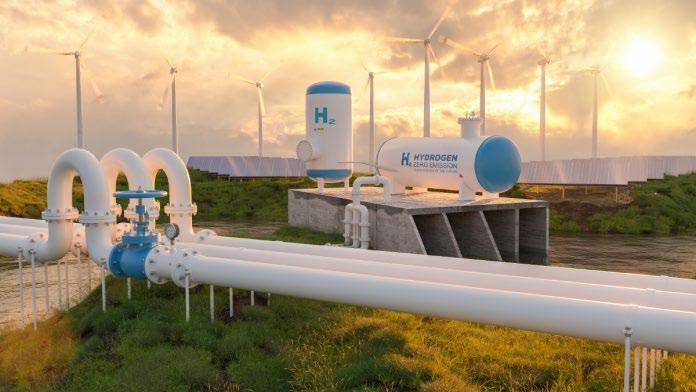
66 EQ FEBRUARY 2024 www.EQMagPro.com
BIHAR CABINET APPROVES NEW ELECTRIC VEHICLE POLICY
The Bihar cabinet has approved a new electric vehicle (EV) policy, signaling the state’s commitment to promoting the adoption of electric vehicles. Such policies typically include incentives, subsidies, and measures to create a conducive environment for the growth of the electric vehicle ecosystem, aiming to reduce emissions and foster sustainable transportation.
The policy, for a period of five years, aspires to see 15% of all new vehicles registered in Bihar by 2028 being electric vehicles; State Cabinet also clears plans to buy 400 electric buses
In a landmark move to champion ecofriendly transportation, the Bihar government has given the nod to a comprehensive Electric Vehicle (EV) policy. The policy places a strong emphasis on creating a conducive ecosystem for electric vehicles with a particular focus on developing a robust network of charging stations across the State.
In a parallel initiative to bolster electric mobility, the State cabinet, headed by Chief Minister Nitish Kumar, also cleared a proposal from the Transport Department to acquire 400 electric buses under the PM-eBus Sewa scheme. These buses, slated to operate in various districts of Bihar, aim to reduce reliance on conventional petrol and diesel-powered public transport vehicles. The Bihar Electric Vehicle Policy, designed to steer the State towards a sustainable transport paradigm, outlines ambitious goals for the next five years, culminating in 2028. The policy aspires to see 15% of all new vehicles registered in Bihar by 2028 being EVs. To incentivise the adoption of electric vehicles, the EV policy introduces various measures, including subsidies on Motor Vehicle Tax of up to 75% and purchase incentives of up to ₹1.25 lakh for the first 1,000 personal four-wheeler EVs. Additionally, there are similar benefits for the first 10,000 personal two-wheeler EVs, with subsidies on Motor Vehicle Tax up to 75% and purchase incentives up to ₹10,000.
CM’s push
Chief Minister Nitish Kumar, leading by example, has been utilising an electric vehicle for his travels in Patna for the past four years, emphasising the importance of environmental conservation.
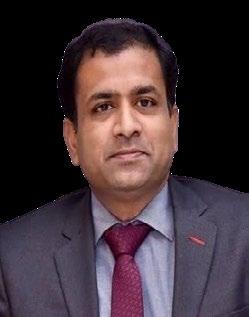

Speaking on the broader objectives of the EV policy, Transport Secretary Sanjay Kumar Agarwal said: “The Bihar Electric Motor Vehicle Policy aims to promote an electric vehicle transport system in the State, complemented by accessible EV charging infrastructure. It seeks to enhance environmental quality by mitigating air pollution while fostering startups and investments in the electric mobility sector and its associated support industries.”

Public charging stations
In a bid to make electricity more affordable for power charging stations, the policy provides a 30% subsidy on power tariffs for public and semi-public charging stations during the initial three years. “Subsidies are extended to the establishment of electric charging stations in residential apartments, with various government departments setting up public charging stations on government-owned land,” Mr. Agarwal said. The policy also promotes the use of renewable energy for EV charging stations, with approved tariff rates for high tension EV charging stations set at ₹8/KvA for the financial year 2023-24. Further, provisions for incentives for scrapping EVs and their components are outlined in the policy as well.
Presented at COP-28 ELECTRIC
It is noteworthy that the draft of the EV policy, crafted in 2022, benefited from contributions by international expert agencies, including World Resources Institute (WRI) India. WRI India CEO Madhav Pai highlighted the Bihar Electric Vehicle Policy during a session themed “Leading E-Bus Transition: Global Experiences and Learnings” at the United Nations Climate Change Conference of the Parties (COP-28) in Dubai.
The Bihar government’s unveiling of the comprehensive EV policy underscores its commitment to fostering sustainable practices, promoting green transportation, and contributing to global efforts in combating climate change.

www.EQMagPro.com 67 EQ FEBRUARY 2024
VEHICLE
ELECTRIC VEHICLE
ROOFTOP SOLAR CHARGES UP ELECTRIC VEHICLE BOOM IN INDIA’S SMALLER CITIES
The surge in rooftop solar adoption is contributing to the growing popularity of electric vehicles (EVs) in smaller cities in India. This trend suggests a positive correlation between decentralized renewable energy generation and the adoption of clean transportation. Rooftop solar can potentially power EV charging infrastructure, fostering a more sustainable and integrated energy ecosystem in urban areas.
The push given to rooftop solar installation in the Interim Budget ties in with its high rate of adoption in Tier-II and -III cities of India. If original equipment manufacturers (OEMs) in the automobile industry, government, and the solar sector are to be believed, in cities of Rajasthan, Gujarat, and Kerala, 45-50 per cent of electricvehicle (EV) users are employing rooftop power to charge their vehicles. This is compared to the national average of 25 per cent, say sources. And the Interim Budget is going to be a catalyst this. Union Finance Minister Nirmala Sitharaman announced 10 million households would get up to 300 units of free electricity every month under the Pradhan Mantri Suryodaya Yojana, with an outlay of 10,000 crore. A report by the Council on Energy, Environment and Water says India has installed 11 Gw of rooftop solar capacity. Of that, only 2.7 Gw is in the residential sector.

“Gujarat and Rajasthan are significant states in terms of EV adoption. These are value-con(TPEML). “These two states have realised it early. Similarly in Kerala, solar adoption is very high. The renewable mix needs to increase in EV-charging infrastructure,” he added.
GOA’S NEW ELECTRIC VEHICLE POLICY HITS FISCAL ROADBLOCK
Goa’s ambitious electric vehicle (EV) policy has encountered financial challenges, impeding its implementation. The state’s initiative to promote electric mobility faces hurdles due to budgetary constraints, hindering the swift adoption of EVs in the region. Despite these setbacks, efforts are underway to address fiscal issues and bolster the transition to cleaner transportation solutions in Goa.
Financial crunch seems to have held back the State government’s plan to re-launch the EV subsidy scheme that was abruptly discontinued in July, last year.
Even after Rs 25 crore provisions made in the State Budget 2023-24, the revised policy — drafted by the department of new and renewable energy — is pending for financial approval for more than two months now. In November 2021, the government had launched a subsidy scheme to promote electric vehicles but with growing demand for EVs, the subsidy was stopped on July 31, 2022 onwards. According to the policy, the subsidy amount was capped at Rs 30,000 per vehicle for two-wheelers, Rs 60,000 per vehicle for electric three-wheelers and Rs 3 lakh per vehicle for electric four-wheelers.
The subsidy was limited to a maximum number of 3,000 electric two-wheelers, 50 three-wheelers and 300 four-wheelers.
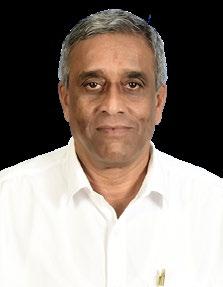

Speaking to The Goan, Minister for new and renewable energy Ramakrishna ‘Sudin’ Dhavalikar said that the department has already redrafted the policy with minor changes. “The file has gone to the Chief Minister. It’s been more than two months now that the file is waiting for financial approval,” he said, adding ‘a financial provision of Rs 25 crore was made in the budget for re-launch of the scheme’.
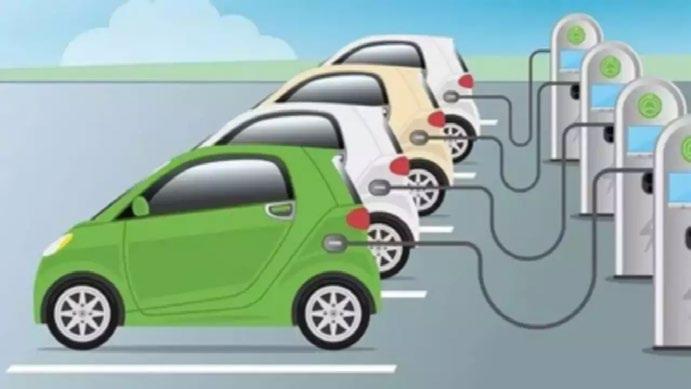
The
According to sources, the new policy will cap the subsidy to a certain percentage of the actual price of the vehicle like 25-30 per cent subsidy for two-wheelers, 40 per cent for three-wheelers and four-wheelers up to Rs 3.50 lakh. “Finance department has not approved the file due to financial issues,” sources said.
According to the data, for the financial year 2022-23, Goa saw a record purchase of 7093 E-vehicles as compared to 1,816 in 2021-22. Last financial year, a total 6,325 EV two-wheelers were sold as against 1,443 in 2021-22.
Four-wheelers contribute only 11 per cent of the total EV purchase in the State so far. Of the total 1089 four-wheelers, 684 were purchased in the last financial year.
As per the State government’s draft ‘Goa State Energy Vision 2050’ the State intends to increase the penetration of electric vehicles to a minimum of 75 per cent for public transport, 100 per cent for two-wheelers and taxis.
68 EQ FEBRUARY 2024 www.EQMagPro.com
Minister said that the new policy also speaks about EVcharging infrastructure along highways as well as charging stations in cities and rural areas.








































































































































ELECTRIC VEHICLE
FORCE MOTORS PLANS TO INVEST AROUND RS 2,000 CR IN 3-4 YEARS, TO FOCUS ON EV DEVELOPMENT: MD PRASAN FIRODIA
Force Motors is planning to invest approximately Rs 2,000 crore over the next 3-4 years, with a specific focus on electric vehicle (EV) development. This indicates the company’s strategic commitment to investing in the EV segment, aligning with the broader trend of automotive companies gearing towards sustainable and eco-friendly mobility solutions.
In a strategic move towards a sustainable future, Indian automaker Force Motors is set to channel an investment of Rs 2,000 crore over the next three to four years. The substantial capital injection will fuel various initiatives, including a robust sustainability drive and the development of electric vehicles (EVs), according to Force Motors’ Managing Director, Prasan Firodia.
Driving into a Greener Future
The investment plan encompasses a comprehensive approach, covering conventional engines, electric vehicles, facility upgrades, and the creation of a more sustainable environment across the value chain, as stated by Firodia “We are looking at about Rs 2,000 crore investment over the next three to four years. It is across the board and across the value chain,” he emphasized in an interview with PTI.
Electrifying the Fleet
Force Motors, known for its range of commercial and utility vehicles, is gearing up to introduce electric versions of its van lineup progressively. The company showcased its commitment to electrification at the Bharat Mobility Global Expo, featuring the Traveller Electric, Urbania Diesel, and Traveller CNG.
On the subject of electrification, Firodia revealed, “On electrification, the investment will be anywhere around Rs 200 to Rs 300 crore,” specifying that the first electric offering will be the Traveller Electric.
A Journey towards Sustainable Mobility
Firodia outlined the electrification roadmap, stating that various variants of the Traveller will be electrified every six months. By the end of the next year, the Urbania model will also sport an electric version. The company is not limiting its efforts to passenger vehicles, with plans to electrify non-passenger transport vehicles like the Gurkha.
“In this quarter itself, the first vehicle to roll out will be the Traveller Electric,” Firodia confirmed.
Green Energy Pledge
In addition to EV development, Force Motors is committed to a sustainability initiative. By the middle of this calendar year, nearly 50% of the energy consumed by the company will be sourced from ‘green energy.’
While fresh production capacity is not an immediate need, Firodia mentioned plans to install a second large paint shop, creating additional capacity from a painting perspective.

Bright Outlook and Growth
Assessing the company’s outlook, Firodia expressed confidence, citing a remarkable 40% year-on-year growth over the last two years. With a strong focus on infrastructure from the government, he anticipates continued momentum and expects 25- 35% or more growth in the coming years.

70 EQ FEBRUARY 2024 www.EQMagPro.com
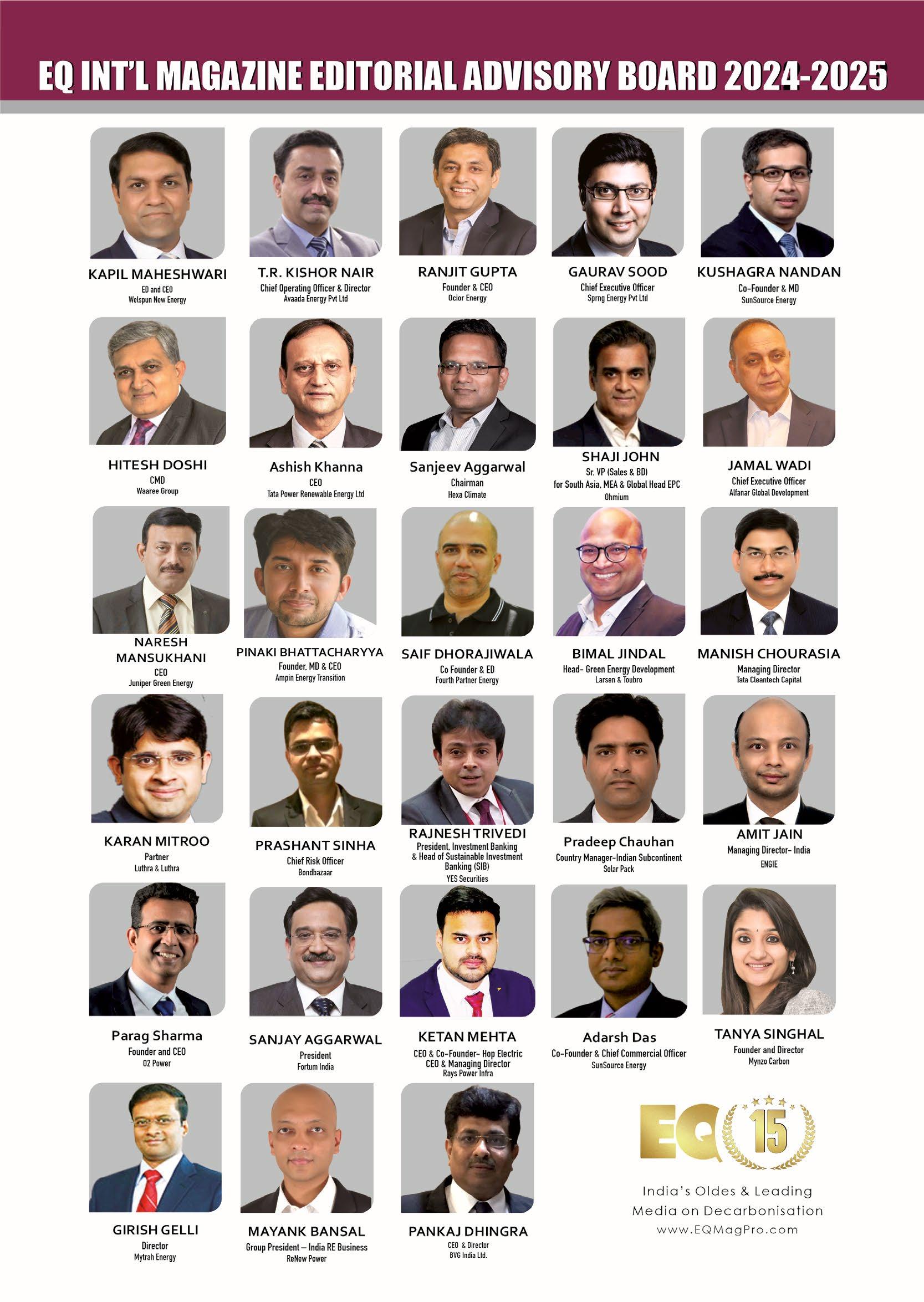
ELECTRIC VEHICLE
EV RIDE-HAILING SNAP-E CABS RAISES USD 2.5 MILLION IN PRESERIES A ROUND LED BY INFLECTION POINT VENTURES
● Snap-E Cabs is on a mission to be the largest EV fleet operator, offering commuters a safe and sustainable "0 Emission" transportation solution
● Snap-E Cabs plans to allocate funds for talent acquisition, tech upgrades, and expanding operations into new geographies
● Snap-E Caps are one of the fastest growing companies in this sector having reached 600 Cars within 1 Year and an ARR of 35Cr
● Snap-E Cabs has formed significant partnerships with AAI and the WB government, securing a notable 5-year contract for EV operations at Howrah Railway Station
● Inflection Point Ventures (IPV) has so far invested over INR 650 Cr across 200+ deals
Snap-E Cabs, an EV Ride-hailing platform raises USD 2.5 million in a Pre-Series A Round led by Inflection Point Ventures. Snap-E Cabs plans to allocate funds for talent acquisition to support growth, invest in tech upgrades and the introduction of new tech-enabled services, and expand operations into additional geographies.
On a mission to become the largest EV fleet operator, Snap-E provides an eco-friendly electric transport service for safe and affordable commuting with zero emissions. As a brand under EC Wheels India Private Limited, a subsidiary of Steelman Telecom Limited, Snap-E Cabs is headquartered in Kolkata, committed to reliable and sustainable transportation. Mayank Bindal, the Founder and CEO of Snap-E Cabs, holds a master’s in finance from Glasgow University. Meanwhile, Jaydip Mukherjee, the Co-Founder and CBO, brings extensive leadership experience from roles at Oracle, IBM, Ericsson, Huawei, and Worley, holding an Executive MBA from IIM Bangalore. Together, they drive Snap-E Cabs' mission as visionary leaders, combining financial acumen and diverse industry expertise to make sustainable and reliable electric transportation accessible to all.


Rahul Wagh, Managing Director, Inflection Point Ventures, says, “ “Climate change poses a severe global threat, impacting the entire ecosystem, biodiversity, and public health. The global focus on decarbonizing transportation has intensified, with governments worldwide adopting policies to phase out Internal Combustion Engines (ICE) in favour of zero-emission EVs. Enabling policies both, at a national and state level Indian govt. have made the environment conducive for e mobility in India, helping drive towards its goal of achieving 30 per cent electrification of the country's vehicle fleet by 2030. This shift has given rise to numerous business opportunities and models in the EV sector.”
Snap-E Cabs, a pioneering EV ride hailing platform, is at the forefront of this change, offering 100% electric, sustainable, efficient, affordable, and reliable mobility solutions. With its visionary approach, Snap-E is spearheading India towards a
Snap-E stands out with high efficiency, utilizing a hybrid B2B and B2C model, maintaining less than 5% downtime, and ensuring swift vehicle turnaround. Key strengths include no cancellations, no surge pricing, and a 100% electric fleet. Currently operating with 600 EVs in Kolkata, Snap-E plans to expand its fleet by adding 300-400 EVs by the end of FY 24. Looking ahead to FY 25, the company aims to extend services to 2-3 more cities, adding 1500-2000 EVs, signalling significant scale-up in operations.

Mayank Bindal, Founder & CEO, Snap-E Cabs, says, “Global EV sales doubled to 16.5 million units in 2021, and India's ambitious goal to have EVs represent 30% of road traffic by 2028 could have significant global impacts, reducing the country's oil dependency and serving as a replicable model for emerging economies. India's transition to electric vehicles not only disrupts global oil markets but also positions the country, with its 1.4 billion population and rapidly growing economy, as a key player in the global EV market, marking a substantial step toward sustainable development.”

Snap-E is the biggest fleet operator in East India having the largest Charging Infra. They are the only EV Fleet operator having signed up MoU with AAI (Airport Authority of India) where they can start the operations at any Airport across India. They are one of the fastest growing companies in this sector having reached 600 Cars within 1 Year and an ARR of 35Cr. They have also signed up several other MoU’s with WB govt for Technical Training for EV Ecosystem, Port Trust for land acquisition for construction of charging facility. Snap-E has secured the contract to operate EV Charging and Fleets for 5 years for Howrah Railway Station – one of the most important Railway Terminals for Indian Railways.

72 EQ FEBRUARY 2024 www.EQMagPro.com











www.EQMagPro.com 73 EQ FEBRUARY 2024 www.renewx.in SOLAR I ENERGY STORAGE I E-MOBILITY I CHARGING INFRA I BIO ENERGY FOR SPACE BOOKING FOR SPEAKERSHIP OPPORTUNITIES : AMIT SHARMA | M: +91 99109 55222 | E: amit.sharma@informa.com AMITAVA SARKAR M: +91 93792 29397 E: amitava.sarkar@informa.com JULIAN THOMAS M: +91 99404 59444 E: julian.thomas@informa.com IYER NARAYANAN M: +91 99673 53437 E: iyer.narayanan@informa.com HIGHLIGHTS INDUSTRY AWARDS EV & INFRASTRUCTURE ZONE BIO ENERGY MULTIPLE CONFERENCE TRACKS MEGA PRODUCT SHOWCASE CEO CONCLAVE PROFILED BUYERS FROM C&I SEGMENT GREEN HYDROGEN REGISTER NOW BOOKINGS OPEN PREMIUM SOLAR ONSITE BRANDING PREMIUM PV INTERCONNECT & BUSSBAR PARTNER VISITOR BAG PARTNER BADGE PARTNER ALMM MODULE PARTNER PREMIUM EXHIBIT PARTNERS
FINNFUND ISSUES A EUR 100 MILLION GREEN BOND
Finnfund, a Finnish development financier and impact investor, issues a EUR 100 million green bond.

The 10-year bond bears interest at the rate of 3.5% per annum. The bond offering was placed to international investors, including a portion of dedicated green bond investors/portfolios. The bond represents Finnfund’s first ever green transaction and second issuance under its Sustainability Bond Framework established in September 2022. The proceeds from the issue will be used in accordance with the green project categories of Finnfund’s Sustainability Bond Framework to finance and/or refinance eligible green lending, equity investments, and mezzanine financing mainly targeting, for example, the objective of climate change mitigation and adaptation and/or environmentally sustainable management of living natural resources. Net proceeds will be allocated to eligible projects with the objective to mobilise debt capital to support Finnfund’s mission to generate lasting impact by investing in businesses that solve global development challenges. In addition, it contributes to Finnfund’s goal to foster sustainable development by providing investment opportunities for private investors. In its strategy, adopted in January 2022, Finnfund sets one of its targets to fund 50% of its investments with private capital by 2030. Mobilising private capital is key to achieving the UN Sustainable Development Goals (SDGs) in developing countries, given that the UN estimates the financing gap at USD 2.5 trillion per year. Jefferies GmbH acted as the Sole Arranger and Lead Manager in connection with the issue of the bond.


Andrey Medvedev, Senior Vice President at Jefferies said: “We are delighted to have assisted Finnfund issuing its longest private placement to date and showcasing its innovative green projects. This deal demonstrates Finnfund’s appeal to a diversified international investor base and cements its position as a leading development financing agency.”


Jaakko Kangasniemi, Managing Director, CEO at Finnfund said: “Sustainable, innovative businesses and investors play an integral role in solving both global and local challenges, such as climate change mitigation and adaptation, and biodiversity loss. Capital markets are also vital in the transition away from fossil fuels. We are glad to have such a strong support for our impact investing activity and our mission to foster sustainable development and green transition.”
74 EQ FEBRUARY 2024 www.EQMagPro.com
INTERNATIONAL
CLEANTECH SOLAR COMMISSIONS 24 MWP OPEN ACCESS SOLAR PV PROJECTS IN MAHARASHTRA, EXPANDING ITS PORTFOLIO OF SOLAR, WIND AND HYBRID POWER PROJECTS WITH A COMBINED CAPACITY OF OVER 300 MWP IN MAHARASHTRA

These projects have been developed using single-axis trackers for increased generation and efficiency. The trackers make use of sensors and control systems to continuously adjust the tilt and orientation of solar panels to track the sun's path from sunrise to sunset. They can thus optimise the angle of incidence of sunlight by following the sun's trajectory, maximising energy production.
The long-term partnerships between Cleantech Solar and the leading Commercial & Industrial (C&I) customers are estimated to generate more than 911 GWh of clean energy during project lifetime, leading to a reduction of approximately 833 kilotonnes of CO2 emissions. These partnerships reiterate Cleantech Solar’s commitment to providing quality renewable energy solutions and strengthen its position as the premier solar developer in Maharashtra with over 15 blue-chip customers. This takes the total portfolio size in Maharashtra to over 300 MWp across operations and construction stages, consisting of solar, wind and hybrid power projects. Cleantech Solar’s focus on expanding its C&I portfolio, currently at 1.2 GWp, aligns with its commitment to sustainable growth.


Mr. Sachin Jain, Chief Executive Officer of Cleantech Solar, said:
“It gives me immense pleasure to announce the commissioning of these projects for top-tier corporate customers. Our state-of-the art solar parks in Maharashtra leverage the latest and best-in-class technology to provide high-quality and stable renewable power to our clients, helping them diversify their energy sources and manufacture sustainably whilst reducing energy costs significantly.”
www.EQMagPro.com 75 EQ FEBRUARY 2024 SOLAR PROJECTS
Cleantech Solar, a leading provider of renewable energy solutions to corporations in India and Southeast Asia, is delighted to announce the commissioning of open access solar PV projects totalling 24 MWp at its state-of-the-art solar park in Yavatmal district of Maharashtra. Power from these projects is being procured by leading corporates on a captive basis to meet energy needs for their manufacturing operations in the state. These projects cater to customers across automotive, pharmaceutical, cement, industrial equipment and chemical sectors.
*Cleantech Solar’s solar park in Maharashtra
SOLAR PROJECTS
UP GOVT PLANS TO SET UP 8 RENEWABLE ENERGY PROJECTS WORTH OVER RS 67,000 CR
The Uttar Pradesh government is reportedly planning to establish eight renewable energy projects with a cumulative investment exceeding Rs 67,000 crore. This initiative underscores the state’s commitment to expanding its renewable energy capacity and promoting sustainable development in the region.
The projects may be launched at the Groundbreaking Ceremony (GBC) 4.0 in Lucknow on February 19, along with more than 14,000 projects worth Rs 10 trillion. In a boost to the state’s power sector, leading renewable and hydroelectric energy firms in Uttar Pradesh have proposed to set up eight projects worth more than Rs 67,000 crore. The projects, with a combined capacity of 13,250 megawatt (Mw), will be developed by private sector entities, including Torrent Power, Greenko Group, JSW Neo Energy, ACME Cleantech Solutions, Amunra Infratech and Agritech, and Avaada Water Battery. These projects will come up at Sonbhadra (6 projects), Chandauli and Mirzapur (one each) districts.
According to a senior UP government official, the biggest project, based on pumped storage power (PSP) model, will be developed by Torrent Power in Sonbhadra to generate 4,150 Mw of hydropower with an investment of Rs 24,200 crore. Similarly, Greenko Group will invest over Rs 17,000 crore to generate 3,660 Mw of energy in Sonbhadra. The project is expected to make a transformative impact in the Obra Block of economically backward Sonbhadra district. The projects may be launched at the Groundbreaking Ceremony (GBC) 4.0 in Lucknow on February 19, along with more than 14,000 projects worth Rs 10 trillion.
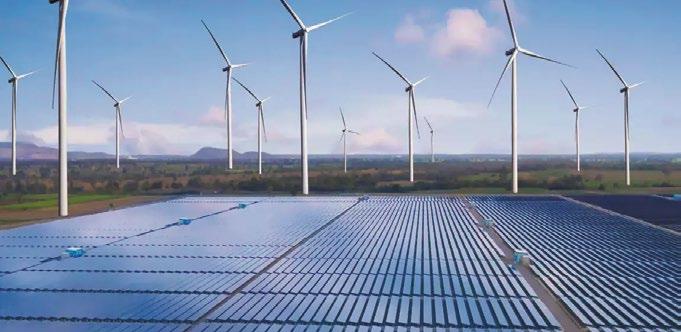
“Sonbhadra, which is the energy epicentre of UP, has the majority of these projects in kitty. PSP projects stand out as an environment-friendly and sustainable energy source,” he noted.
A PSP project is a green, safe, and environment-friendly project for a high quality and flexible power supply chain. It acts like a battery, storing and releasing power depending upon the demand and supply matrix. Since the project is not part of any river system, it does not disturb the local water ecology. With the peak hour power demand in the state already breaching the 25,000 Mw level, it is looking for alternative renewable sources of energy to supplement thermal power generation. UP is also targeting to achieve a million tonne per annum production capacity of green hydrogen. Green hydrogen proposals worth Rs 2.73 trillion from 20 companies have been already bagged by the state at the UP Global Investors Summit (GIS) 2023.
PRIME MINISTER TO DEDICATE 300 MW NOKHRA SOLAR PROJECT OF NTPC GREEN ENERGY LTD TO THE NATION
The Prime Minister is set to dedicate the 300 MW Nokhra Solar Project, developed by NTPC Green Energy Ltd, to the nation. This solar project is part of India’s ongoing efforts to expand its renewable energy capacity and promote sustainable development. The inauguration of such projects aligns with the country’s commitment to increasing the share of clean and green energy in its overall energy mix
Nokhra Solar Project to light up more than 1.3 lakh households, reduce carbon emissions by 6 lakh tonnes every year. Prime Minister Shri Narendra Modi will dedicate to the nation the 300 MW Nokhra Solar Project of NTPC Green Energy Limited, through video-conferencing, on 16th February, 2024. Spread over 1,550 acres in Bikaner district of Rajasthan, the project is being executed under the CPSU Scheme (Phase-II) with an investment of Rs. 1,803 crores to ensure green power to the state of Telangana. With generation of 730 million Units per year, this project will not only light up over 1.3 lakh households, it will also help restricting 6 lakh tonnes of carbon dioxide (CO2) emissions every year. Going forward, the project is expected to restrict CO2 emissions to the tune 15 million tonnes in a span of 25 years.
Over 13 lakh solar PV modules have been installed in this project under the flagship Make in India programme, thereby strengthening the Government of India’s resolve of Atmanirbhar Bharat. As NTPC is actively pursuing a “just transition” by incorporating more and more clean energy into its portfolio, this project will play a key role in reducing carbon emissions, thus contributing to a cleaner and sustainable energy future. NGEL is a wholly-owned subsidiary of NTPC and aims to be the flag bearer of NTPC’s Renewable Energy journey, with an operational capacity of over 3.4 GW and 26 GW in pipeline including 7 GW under implementation. NTPC Limited is India’s largest integrated power utility having 74 GW installed capacity that contributes 25% of total electricity produced in India. By 2032, NTPC is looking to expand its non-fossil-based power capacity to 45%-50% of the company’s portfolio that will include 60 GW renewable energy capacity with a total portfolio of 130 GW. NTPC has partnered with NITI Aayog to strengthen India’s Net Zero efforts.
76 EQ FEBRUARY 2024 www.EQMagPro.com
LARSEN & TOUBRO LANDS SIGNIFICANT ORDERS, INCLUDING 75 MW SOLAR PROJECT IN JHARKHAND
Larsen & Toubro (L&T) has secured significant orders, including a 75 MW solar project in Jharkhand, India. This highlights L&T’s continued involvement and success in the renewable energy sector, contributing to the expansion of solar capacity in the country.
The orders, falling within the classification of large orders ranging between Rs 2,500 crore and Rs 5,000 crore, were acquired by L&T’s power transmission and distribution business. Larsen & Toubro (L&T) has secured substantial orders in both the domestic and Middle East markets, as announced by the company in a filing to BSE. The orders, falling within the classification of large orders ranging between Rs 2,500 crore and Rs 5,000 crore, were acquired by L&T’s power transmission and distribution business.
Among the notable projects, the business has been awarded an order to establish a 75 MW floating solar photovoltaic plant on a dam. This plant is a crucial component of the ultra mega renewable energy power park, strategically developed on Damodar Valley Corporation reservoirs spanning Jharkhand and West Bengal.


SJVN GETS LOI FOR 200 MW SOLAR PROJECT FORM GUJARAT URJA VIAS NIGAM
SJVN has received a Letter of Intent (LoI) for a 200 MW solar project from Gujarat Urja Vias Nigam. This development signifies SJVN’s continued involvement in renewable energy projects and aligns with the broader efforts to increase solar capacity in India
The share touched a 52-week high of Rs 170.45 and a 52-week low of Rs 30.39 on 05 February, 2024 and 27 March, 2023, respectively. SJVN: The company has received the Letter of Intent (LOI) from Gujarat Urja Vikas Nigam (GUVNL) for a 200 MW solar power project in GUVNL Phase XXII. The tentative cost of construction and development for this project is Rs 1,100 crore. The ground-mounted solar project will be developed by subsidiary SJVN Green Energy anywhere in India through an EPC contract. The project will be commissioned in 18 months from the date of the power purchase agreement. The share price of SJVN rallied more than 4 percent in early trade on February 8 after the company received the Letter of Intent (LOI) from Gujarat Urja Vikas Nigam Limited (GUVNL) for a 200-MW solar power project in GUVNL Phase XXII.
At 9:21am, SJVN was quoting Rs 153.80, up Rs 6.85, or 4.66 percent, on the BSE. SJVN Green Energy Limited (SGEL), a wholly owned subsidiary of the company, has earlier bagged the initial 100-MW solar project through bidding and further 100 MW under a greenshoe option at a tariff of Rs 2.63 per unit on build, own and operate basis in e-RA conducted by GUVNL in December 2023. The tentative cost of construction and development of this project is Rs 1,100 crore. The ground-mounted solar project shall be developed by SGEL anywhere in India through EPC contract. The power purchase agreement (PPA) shall be executed with GUVNL after adoption of tariff by GERC. The project shall be commissioned in a period of 18 months from the date of signing of PPA. The PPA shall be signed between GUVNL and SGEL for 25 years. A meeting of the board of directors is scheduled on February 9 to consider and approve the financial results of the company for the quarter ended December 31, 2023 and interim dividend for the FY 2023-24, if any. The share touched a 52-week high of Rs 170.45 and a 52-week low of Rs 30.39 on 05 February, 2024 and 27 March, 2023, respectively. Currently, the stock is trading 9.77 percent below its 52-week high and 406.09 percent above its 52-week low.
SOLAR PROJECTS

78 EQ FEBRUARY 2024
Subscribe “EQ International” at www.EQMagPro.com or fill your complete address and Email to :admin@gmail.com or Call +91-7692973898 Yes! I would like to Subscribe to EQ International Magazine For 1 Issue: o Indian citizens Rs. 200 o International $ 25 / € 20 For 1 Year (12 issues): o Indian citizens Rs. 2400 o International $ 300 / € 240 Please Mail the coupon to: Name: Job Title: Department: Company: Description of the Company: Adress: City/State/Zip Code: Country: Phone: Fax: E-Mail. Web site: PAYMENT 1.- My Cheque/DD in favour of “FirstSource Energy India Private Limited” for Rs…………………………………………………………………… Drawn on………………………………………is enclosed herewith. Date/Signature: 2.- I will pay by Credit Card Type: .......................................................................... Name on Card: Number: Security Code: Expiration Date: Mail this coup on to: First Source Energy India Pvt. Ltd. Subscription Department. 95 C, Sampat Farms, Bicholi Mardana Distt-Indore 452016 Tel. + 91 96441 22268 " ADANI SOLAR..................................FRONT GATEFOLD 01 BVG..................................................................................23 ECE INDIA.......................................................................... EKI.....................................................................................17 ENERMAN.........................................................................19 EN-ICON...........................................................................11 FOX-ESS..........................................................................21 GOODWE................................INSIDE FRONT COVER RHS GROWATT.......................................FRONT GATEFOLD 02 INTERSOLAR..................................................................69 PIXON...............................................................................15 RAYS EXPERTS...............................................................13 RENEW X..........................................................................73 SAATVIK........................................................BACK COVER SNEC................................................................................77 WAAREE................................INSIDE FRONT COVER LHS
ADVERTISERS INDEX SUBSCRIBE




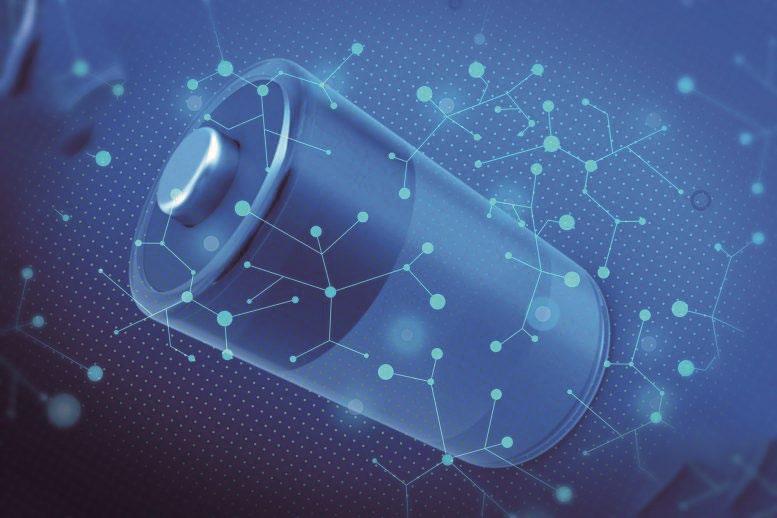

www.EQMagPro.com 79 EQ FEBRUARY 2024

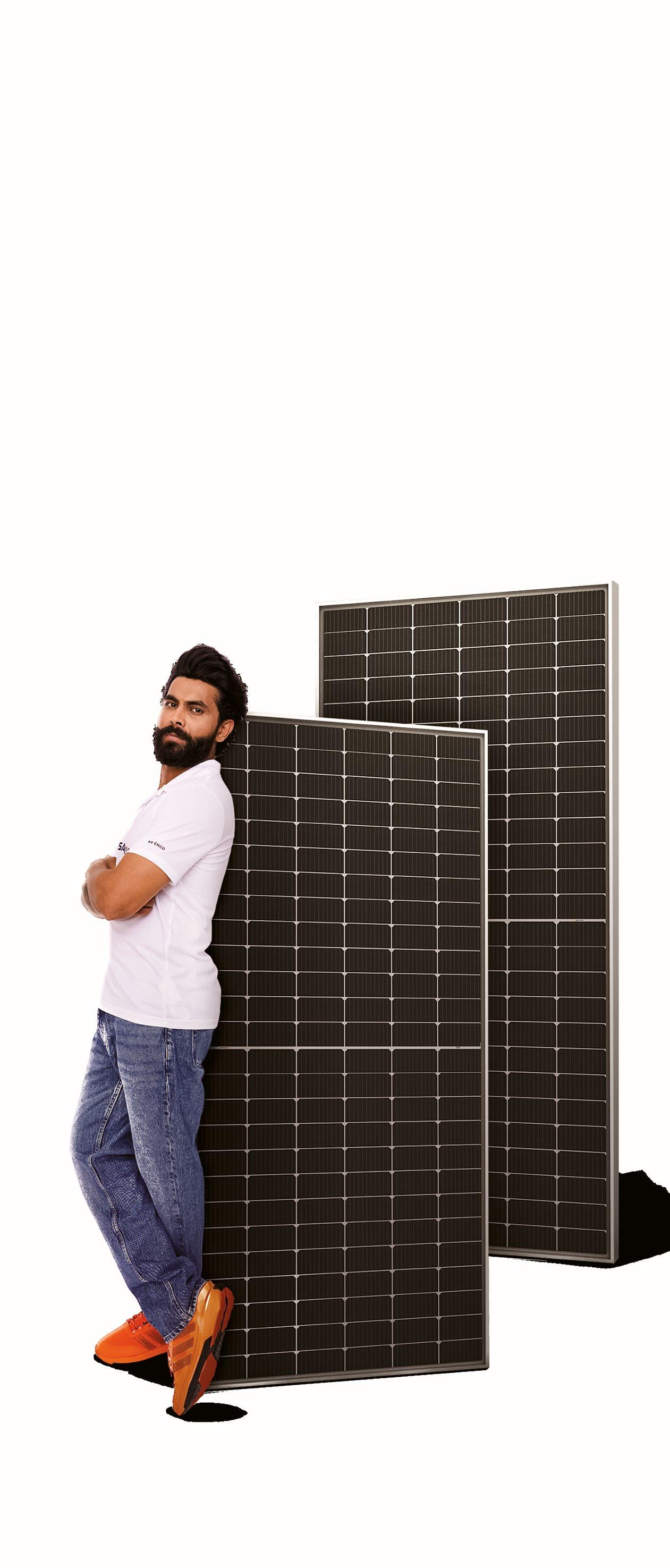
80 EQ FEBRUARY 2024 BETTER TEMPERATURE COEFFICIENT (-0.30% /OC) PRODUCT WARRANTY UPTO 30 YEARS BIFACIAL FACTOR 80+-5% N-TYPE WITH VERY LOW LID Email id:- Info@saatvikgroup.com Website:- www.saatvikgroup.com 9+ Years of manufacturing excellence 3 GW/Annum Production capacity *T&C apply SOLAR KA P WER BIFACIAL N-TOPCON 80% UPTO SAVINGS ON ELECTRICITY BILLS*






































































































































































































































































































